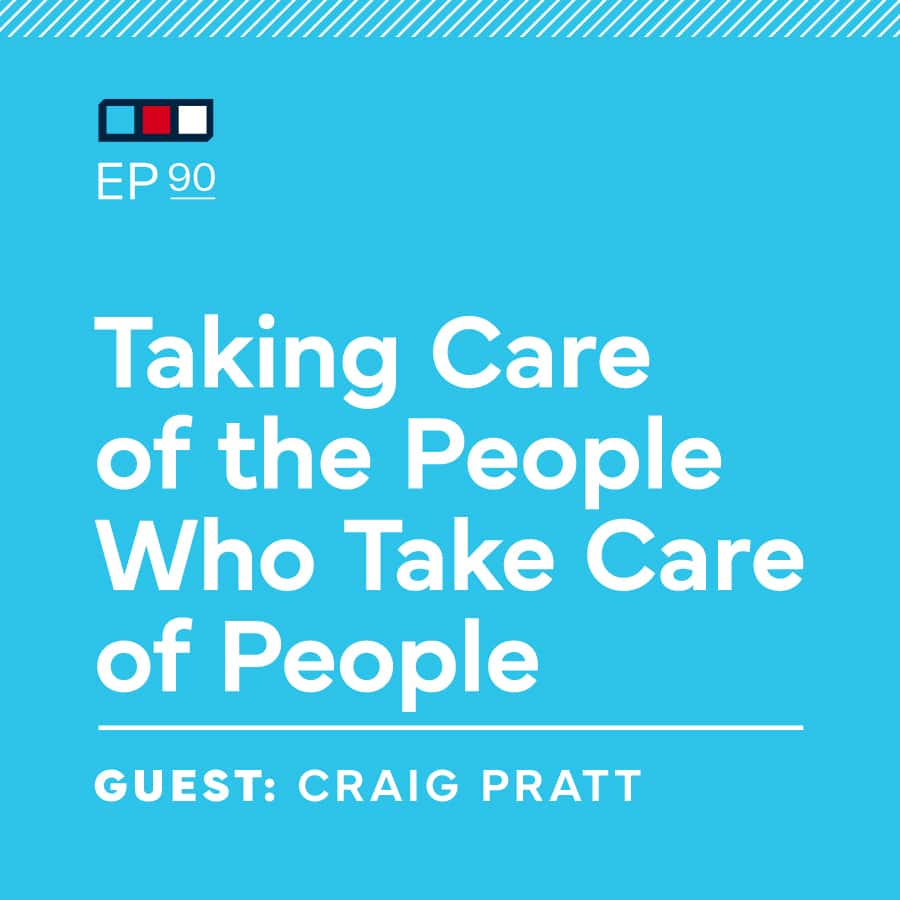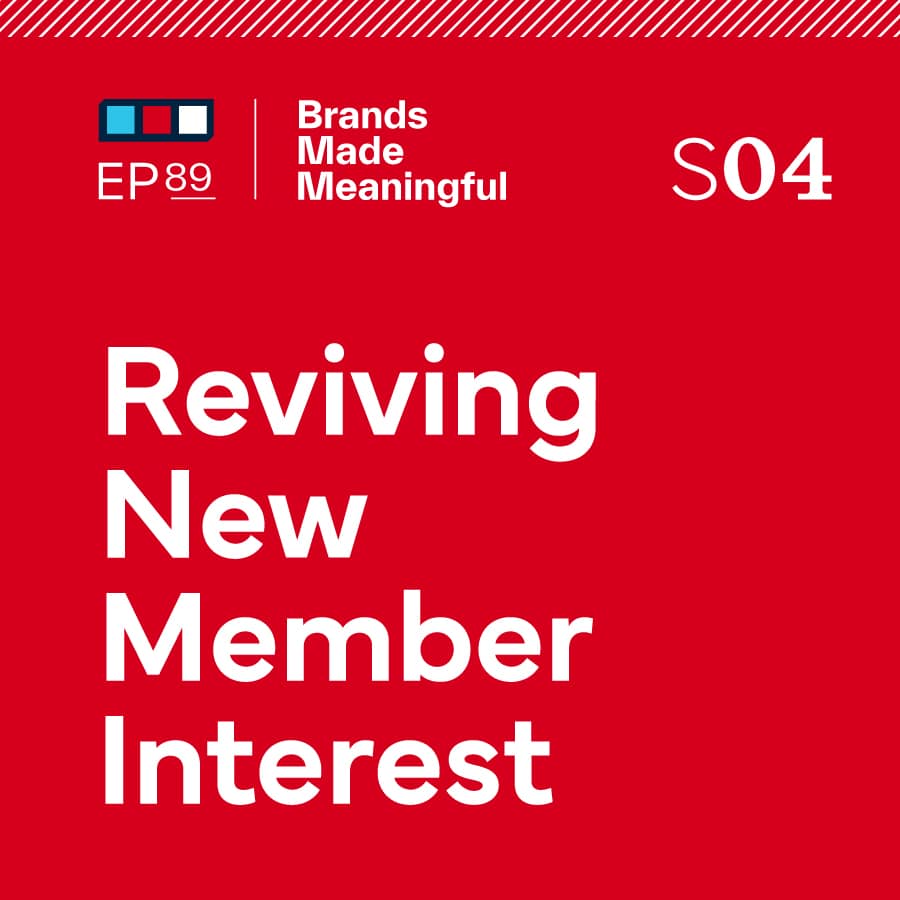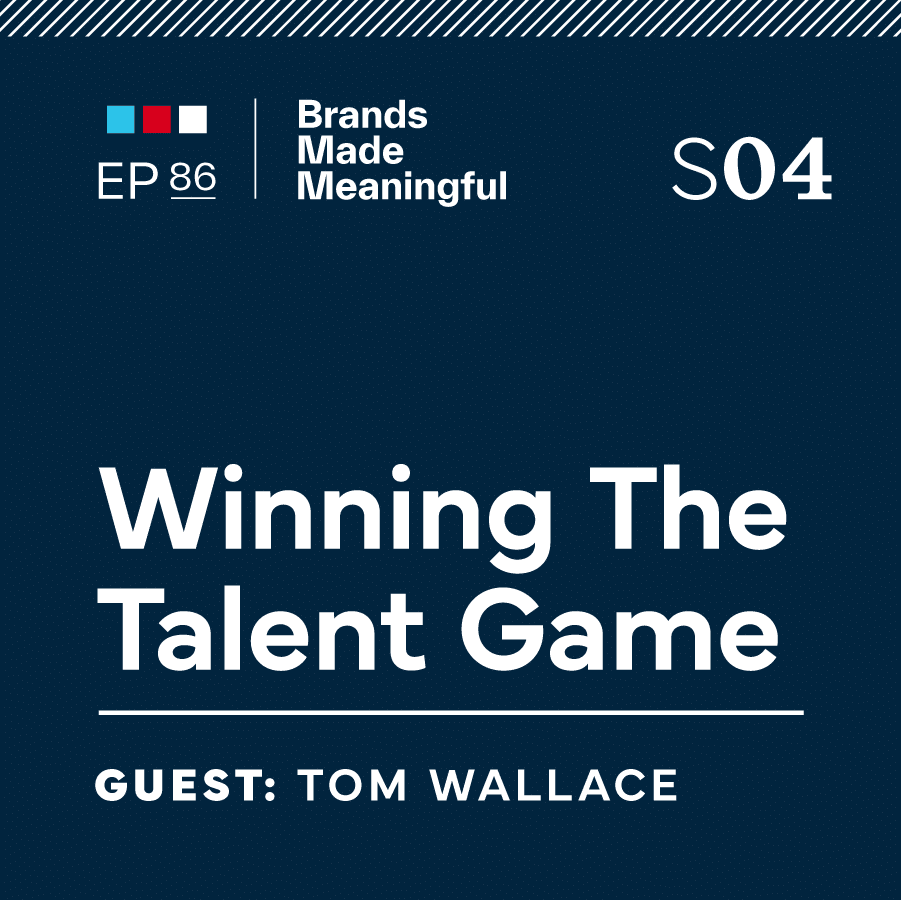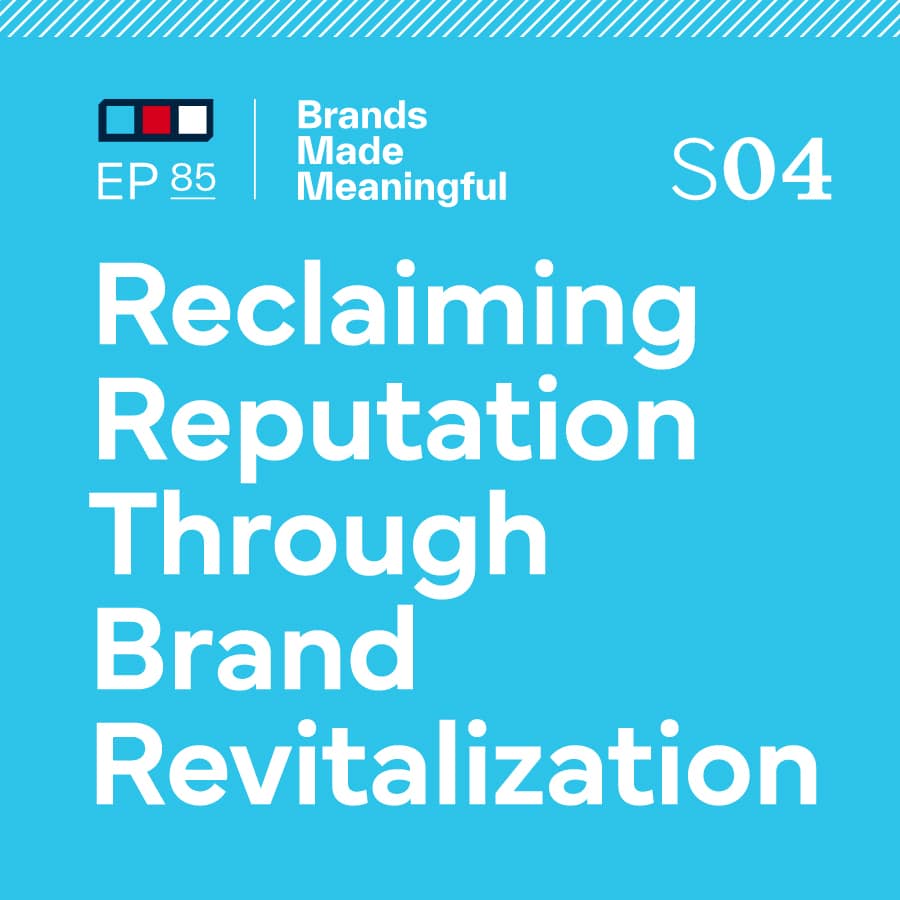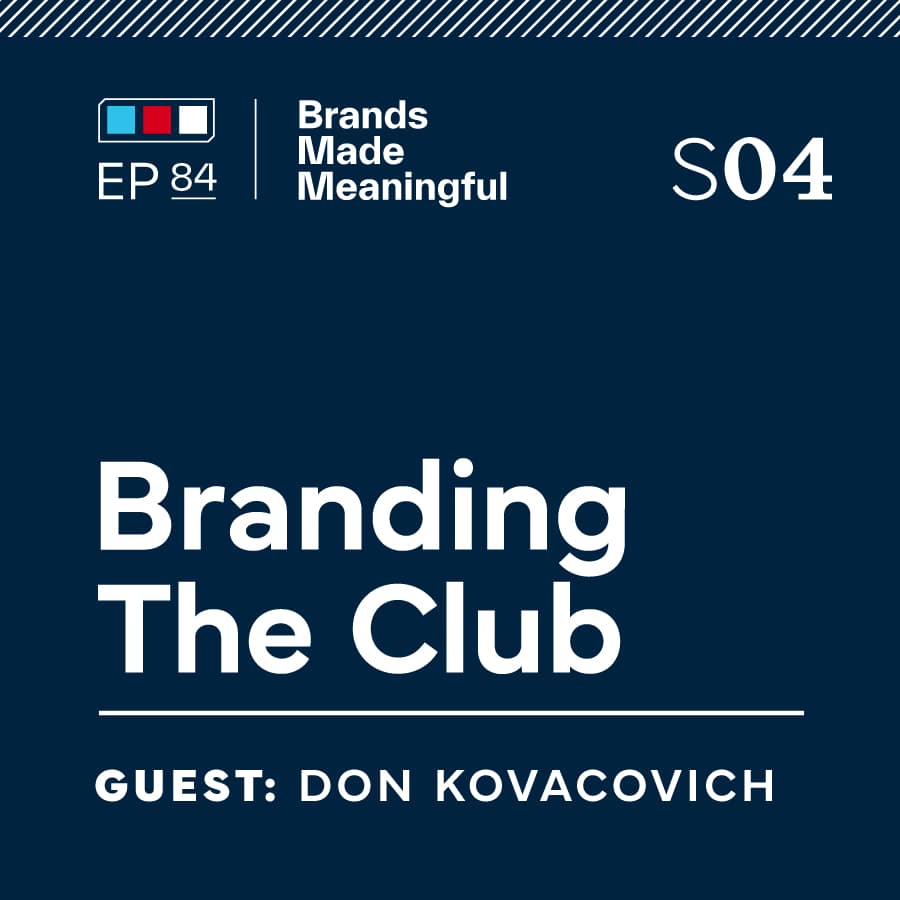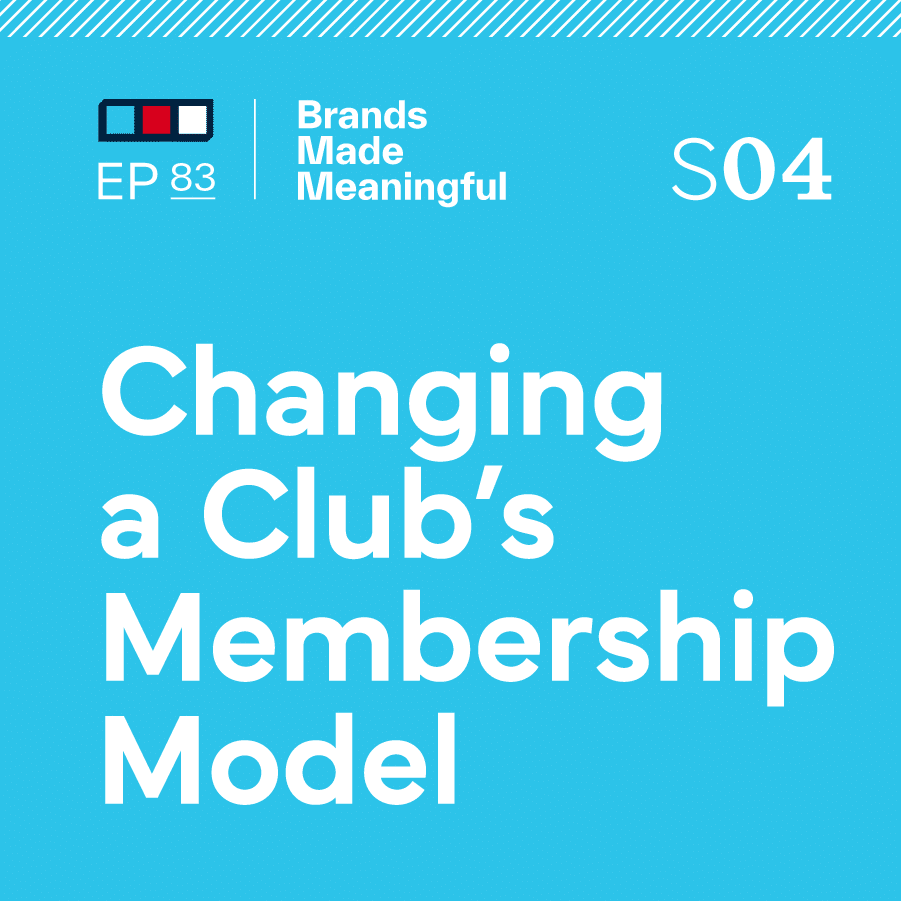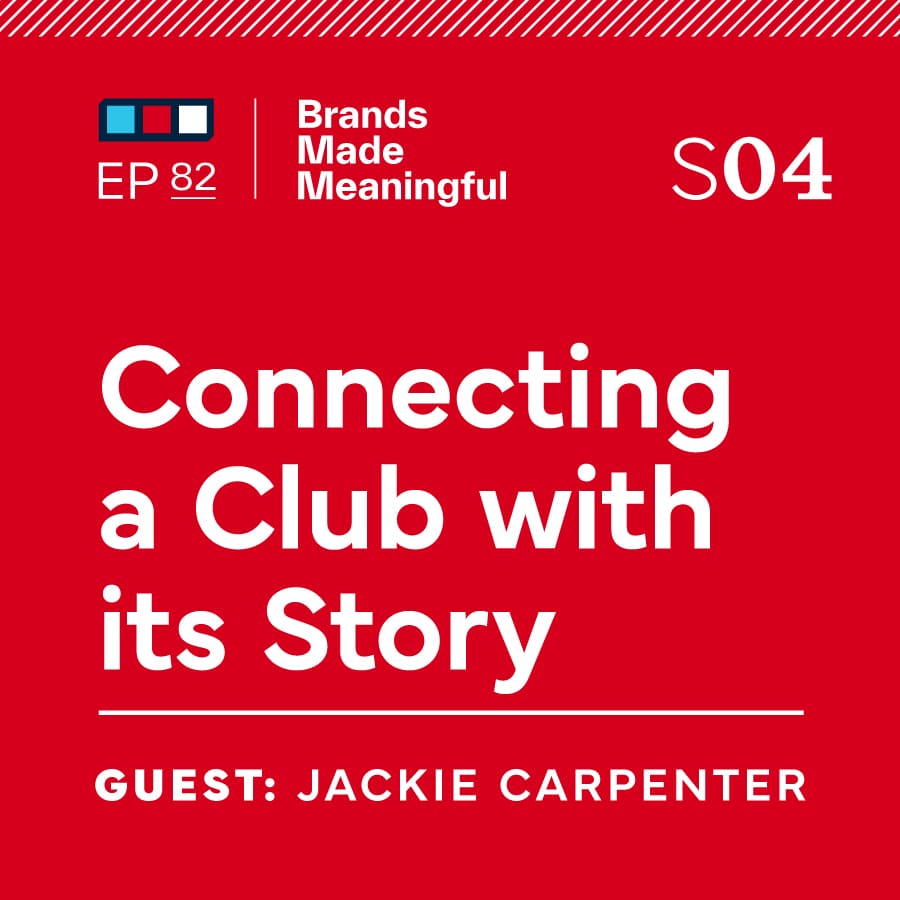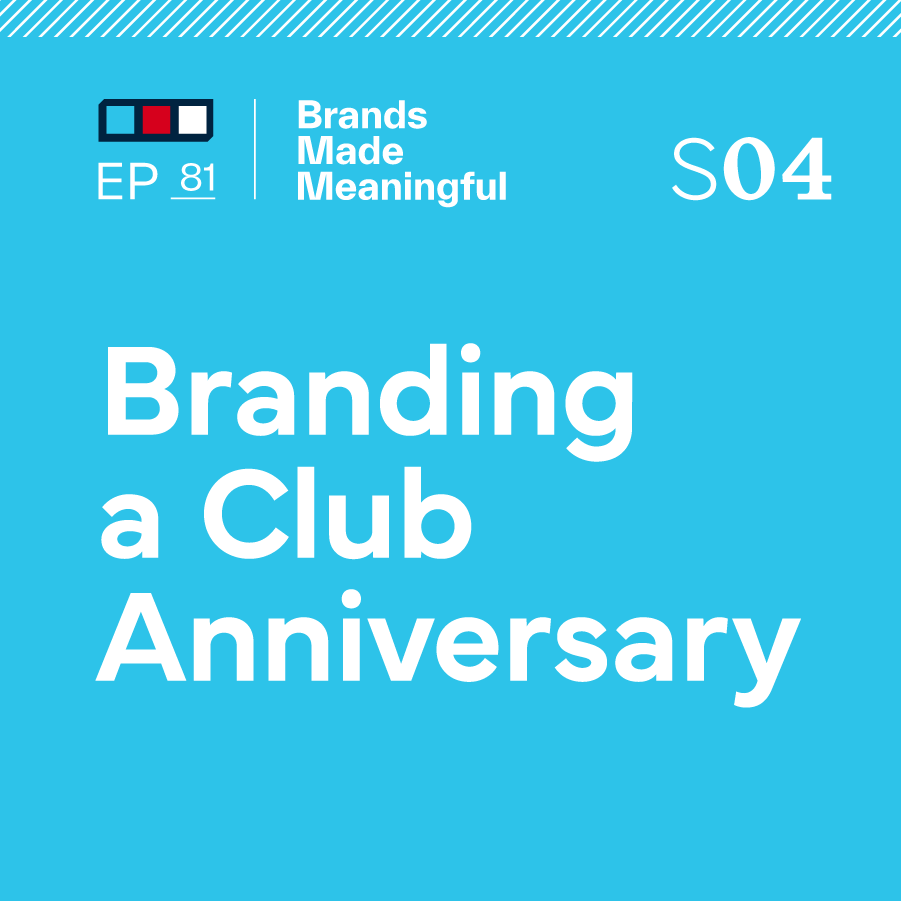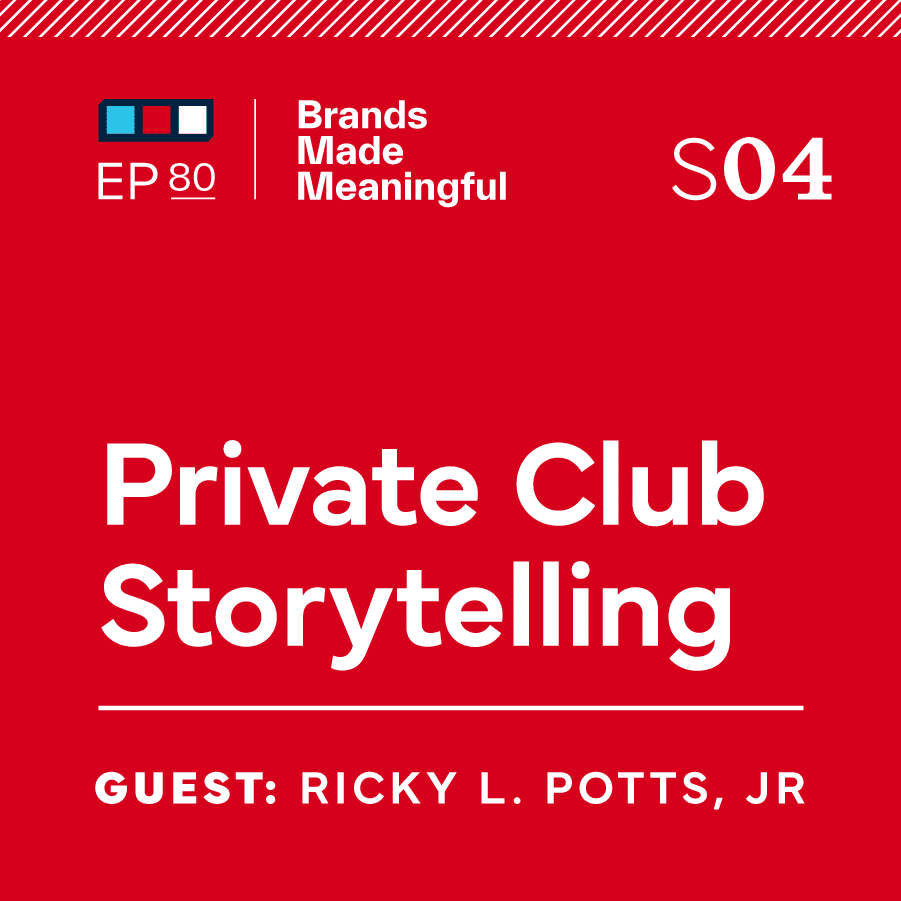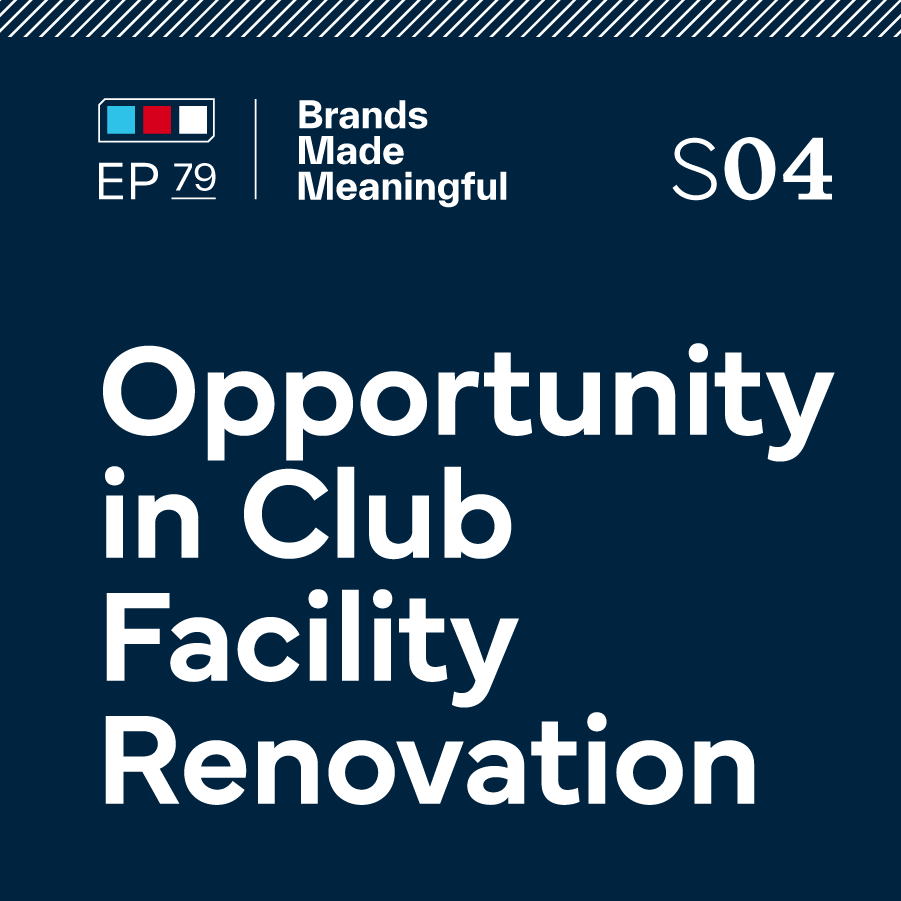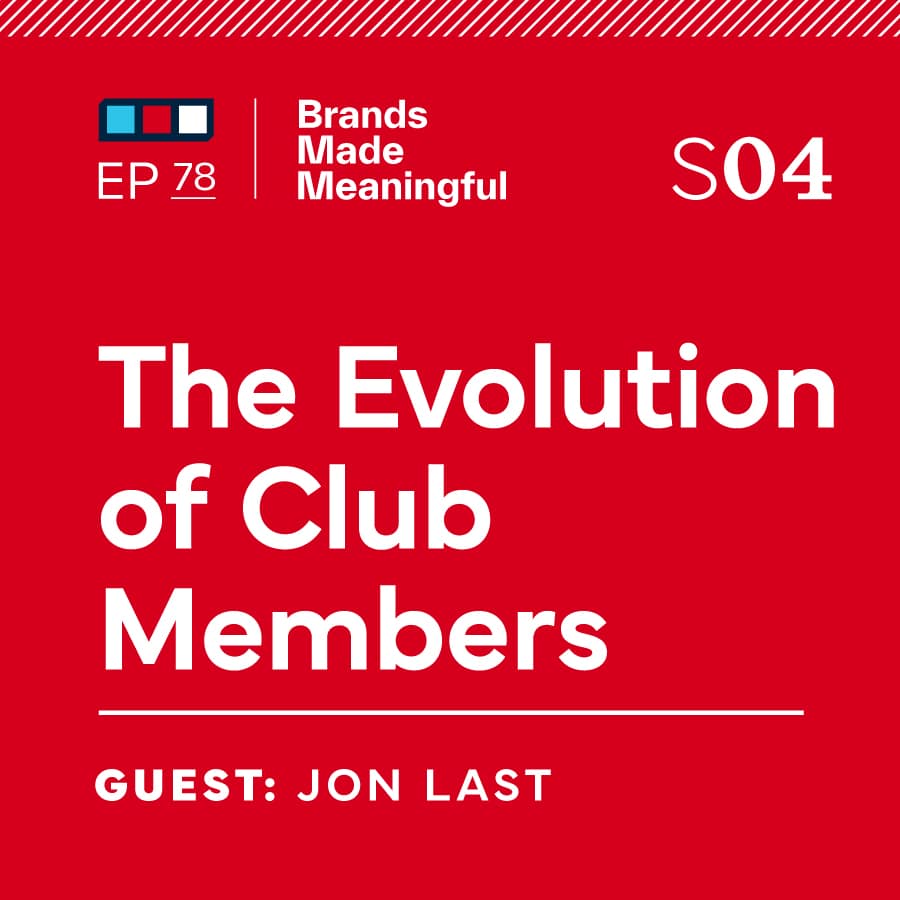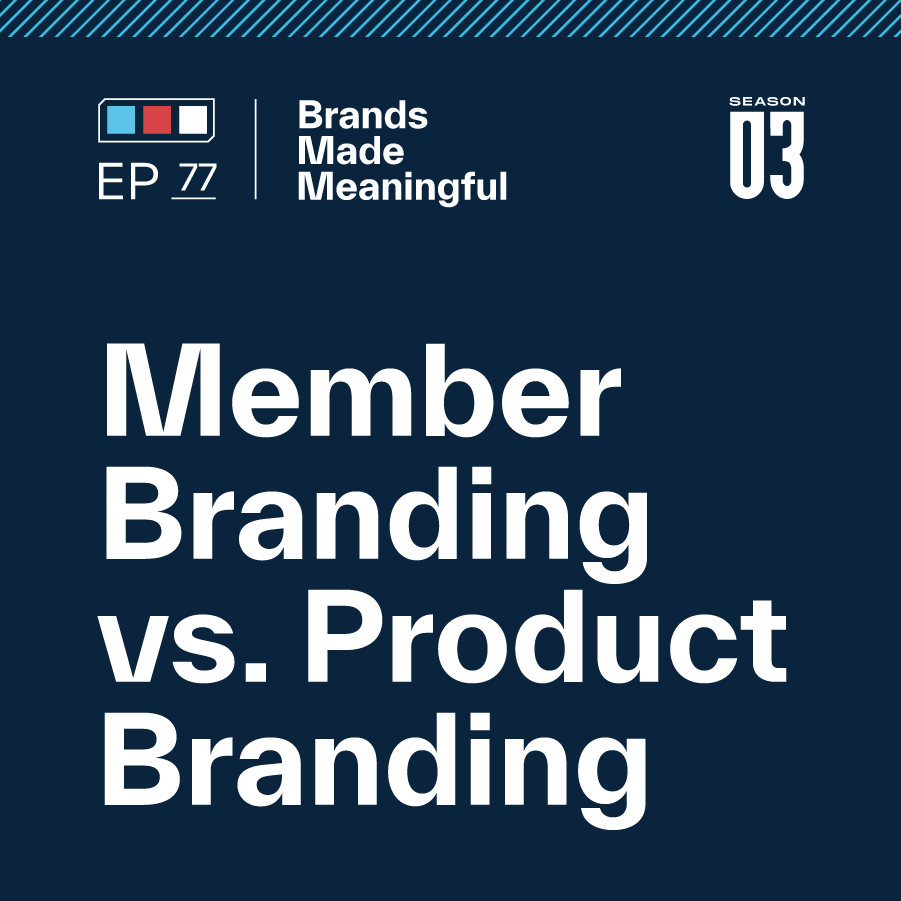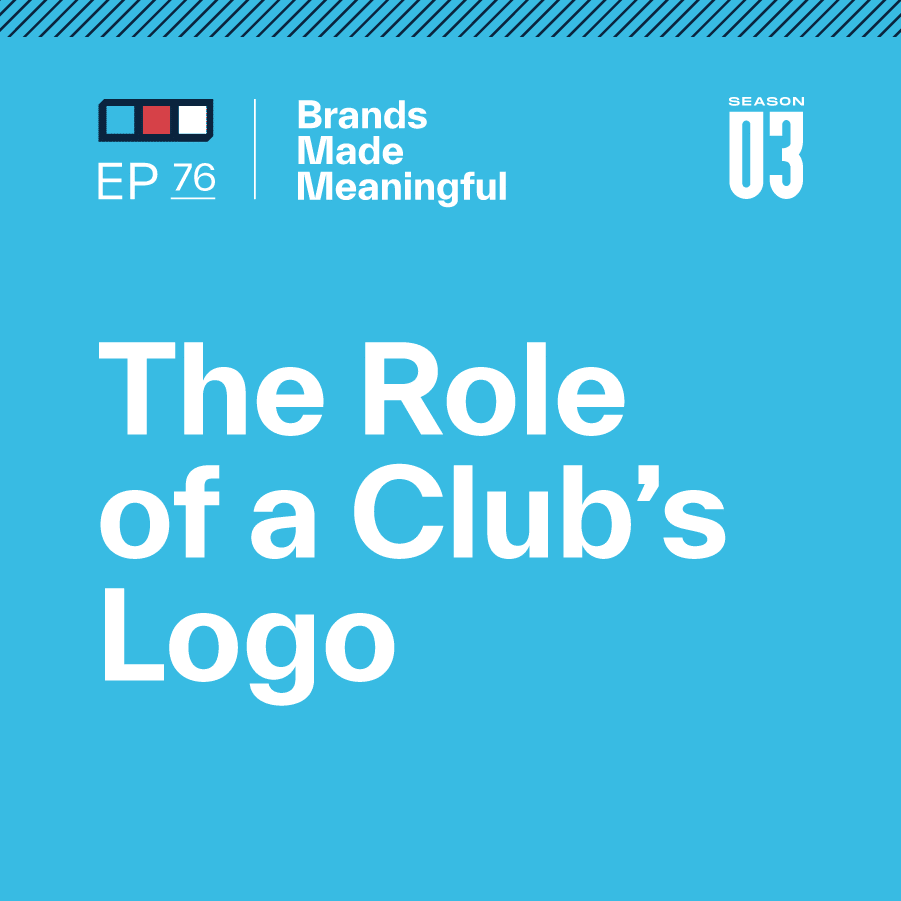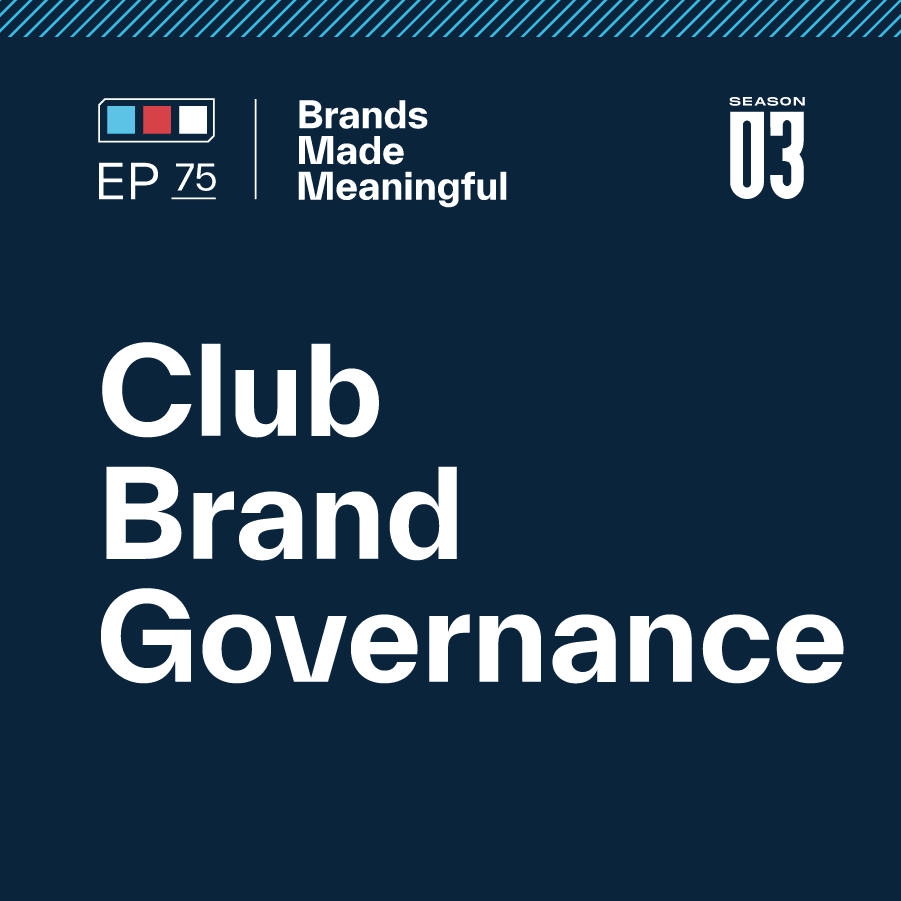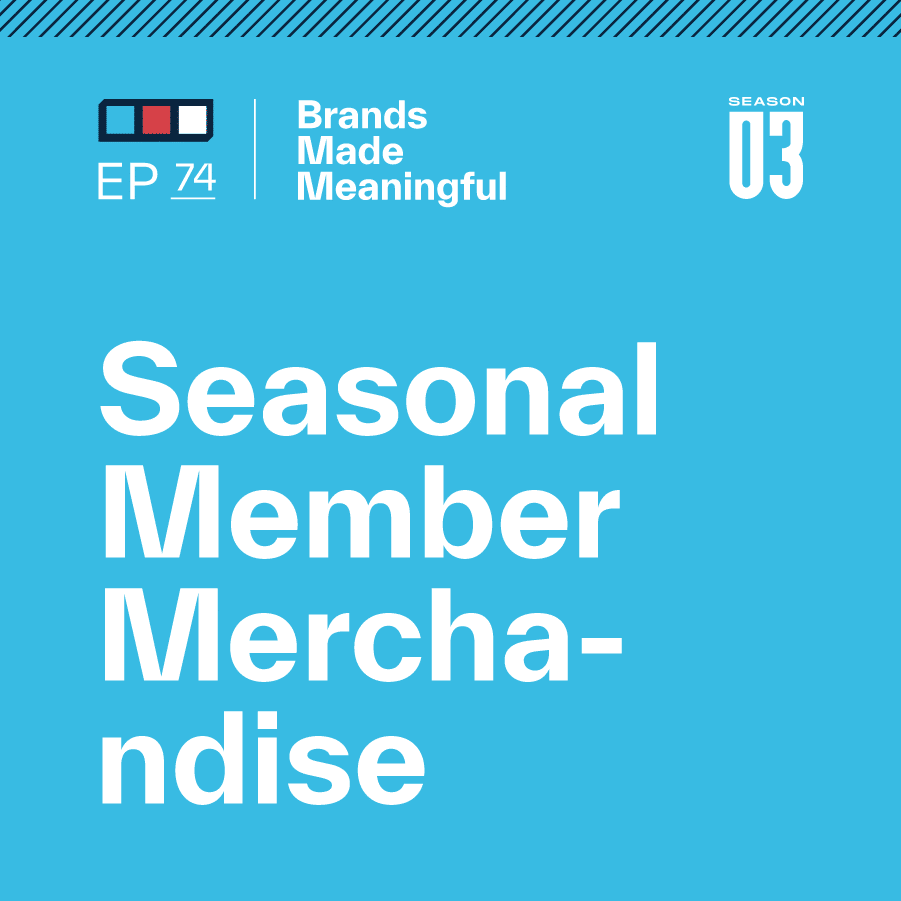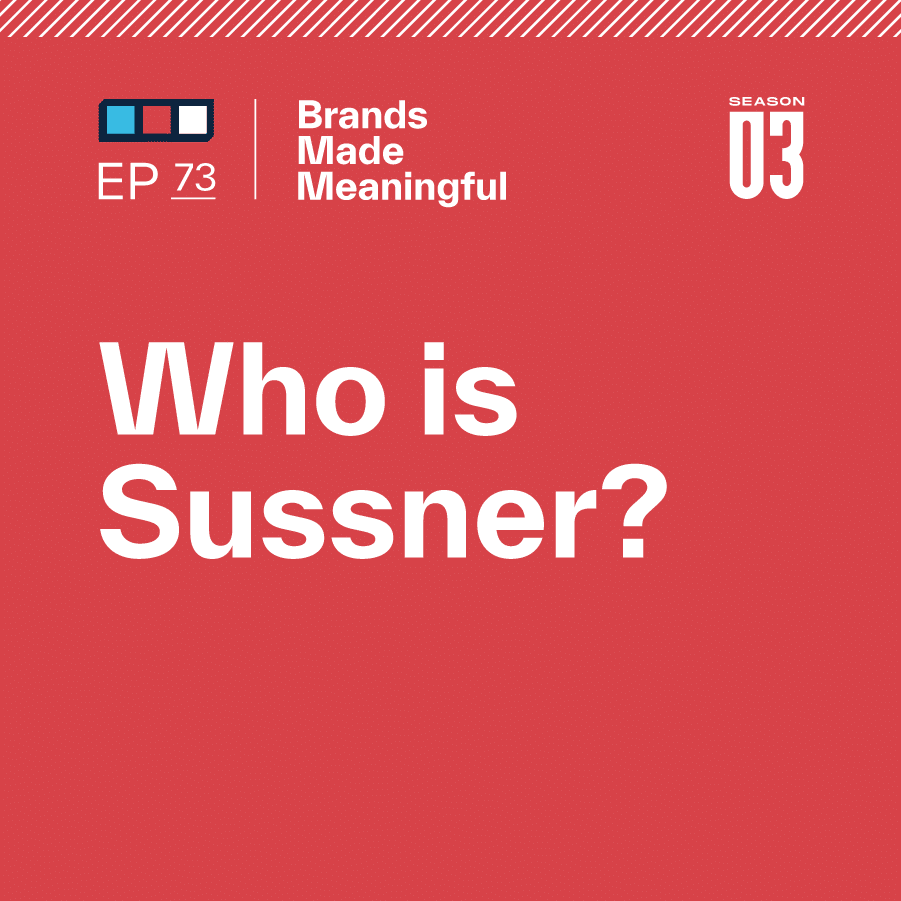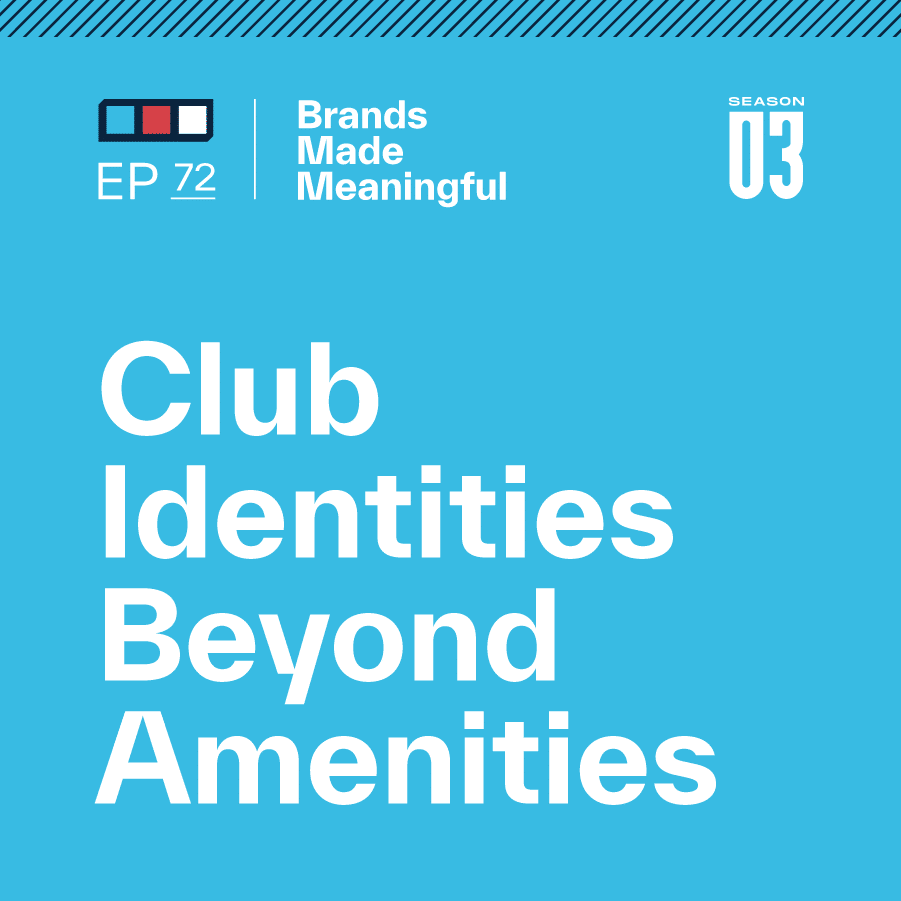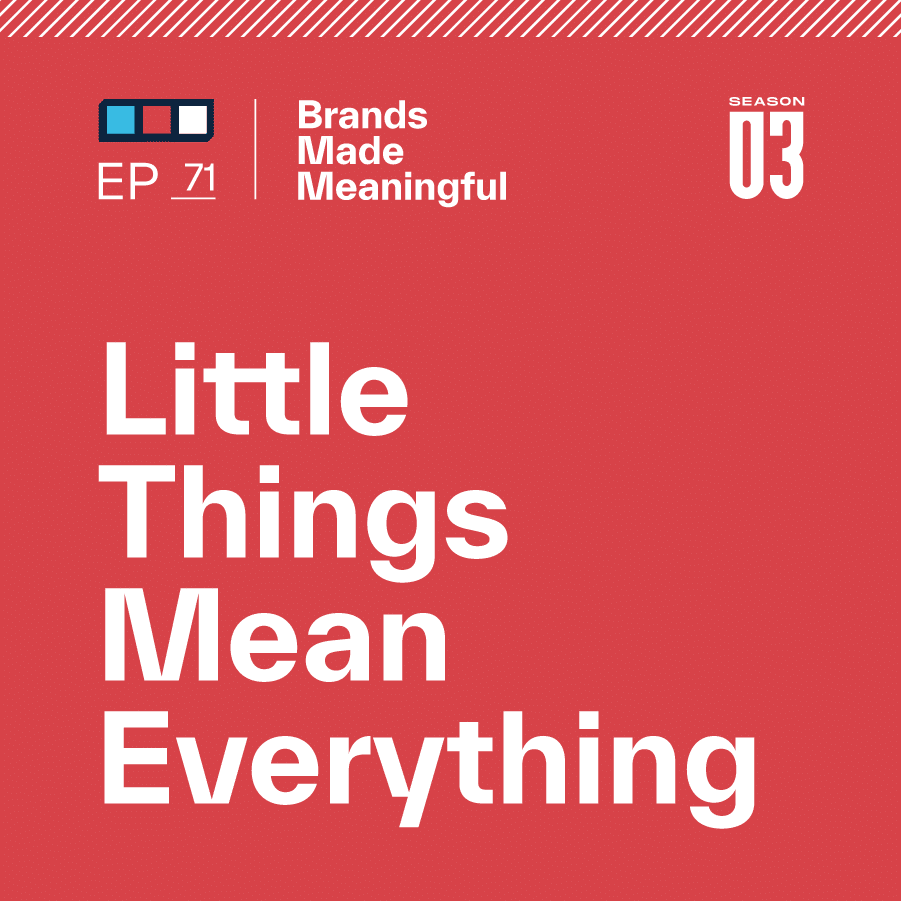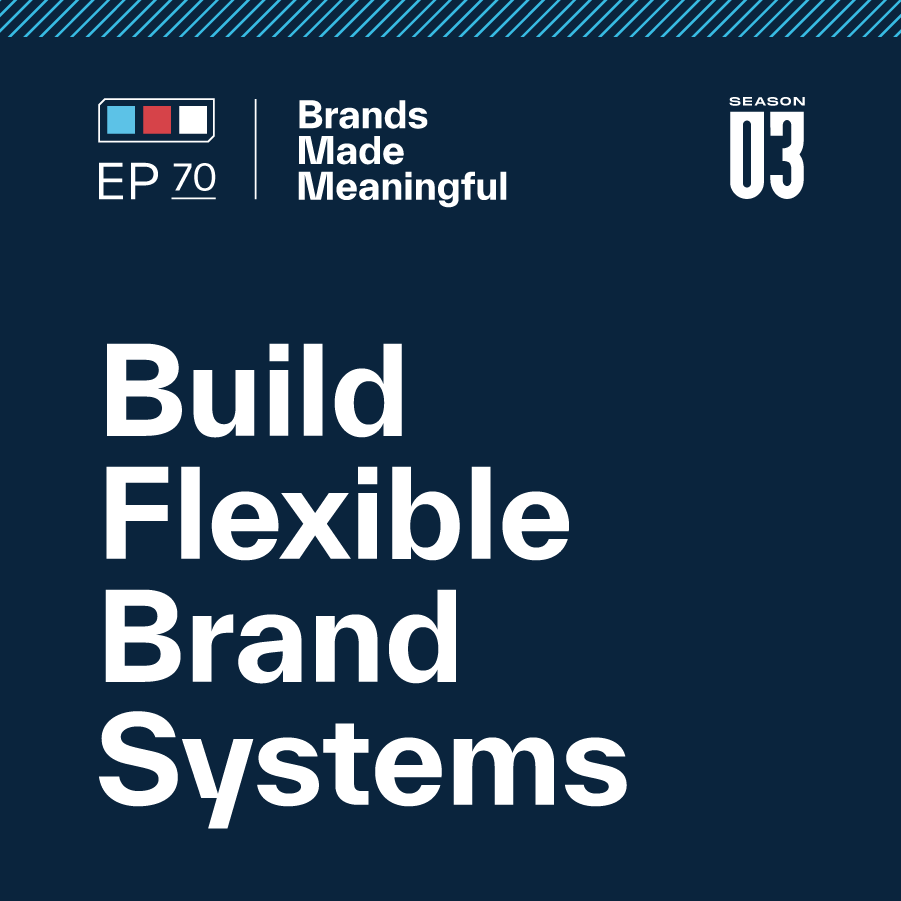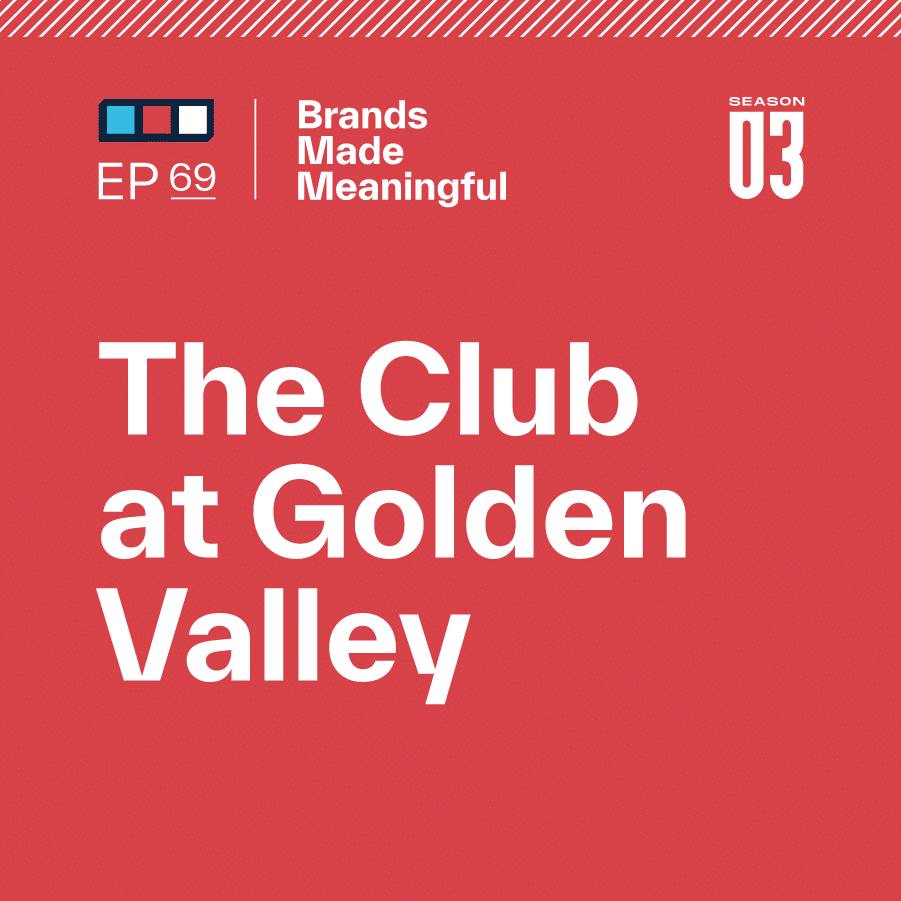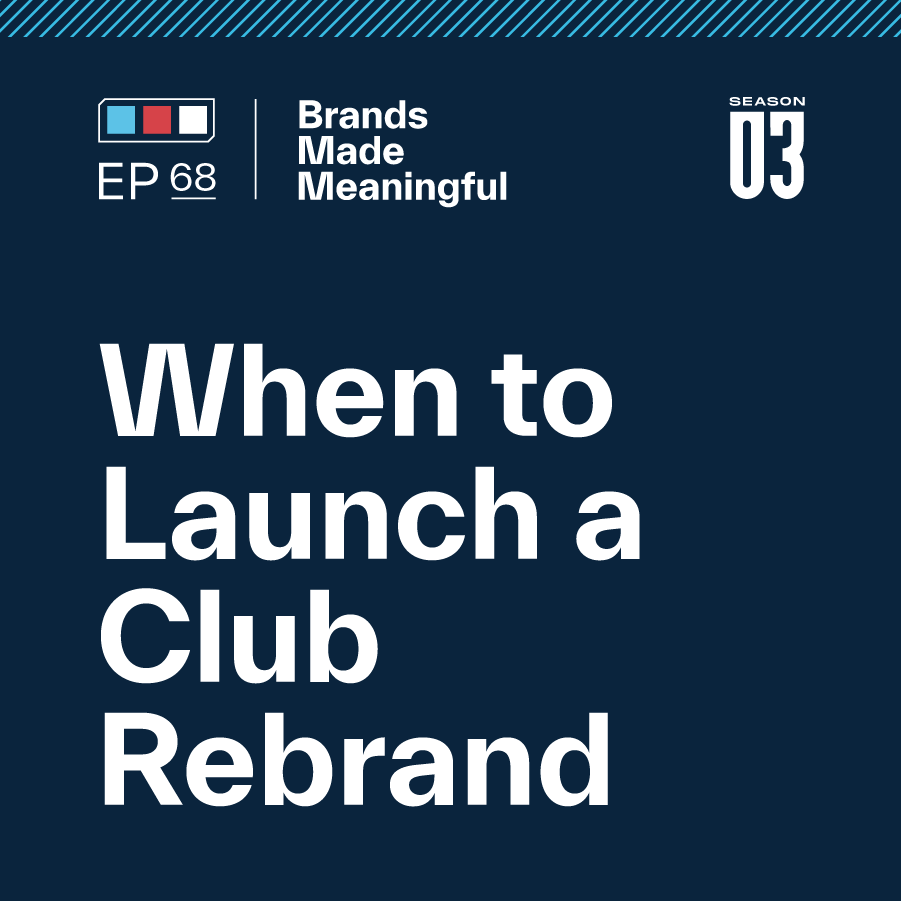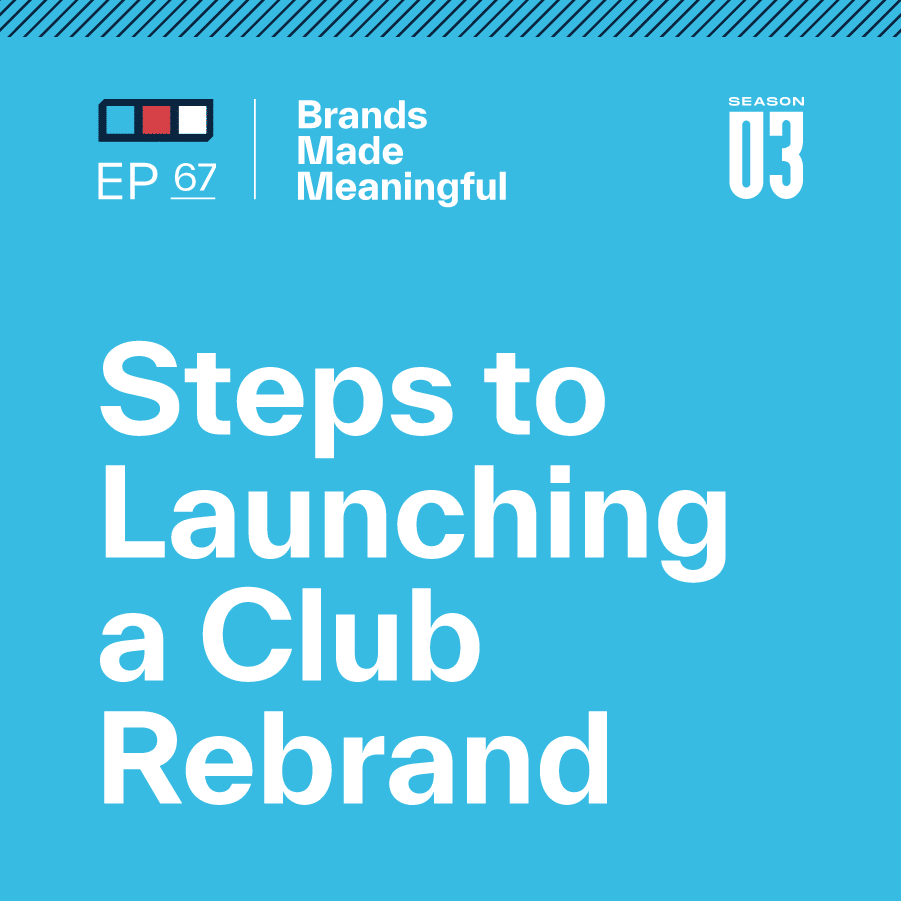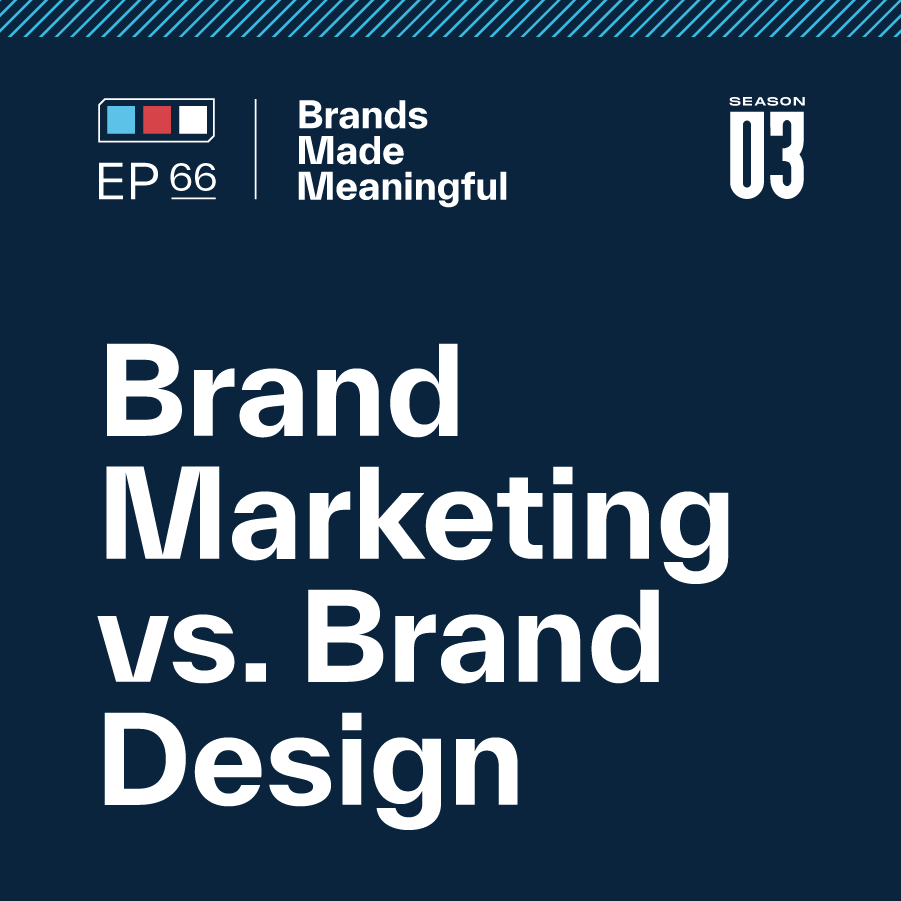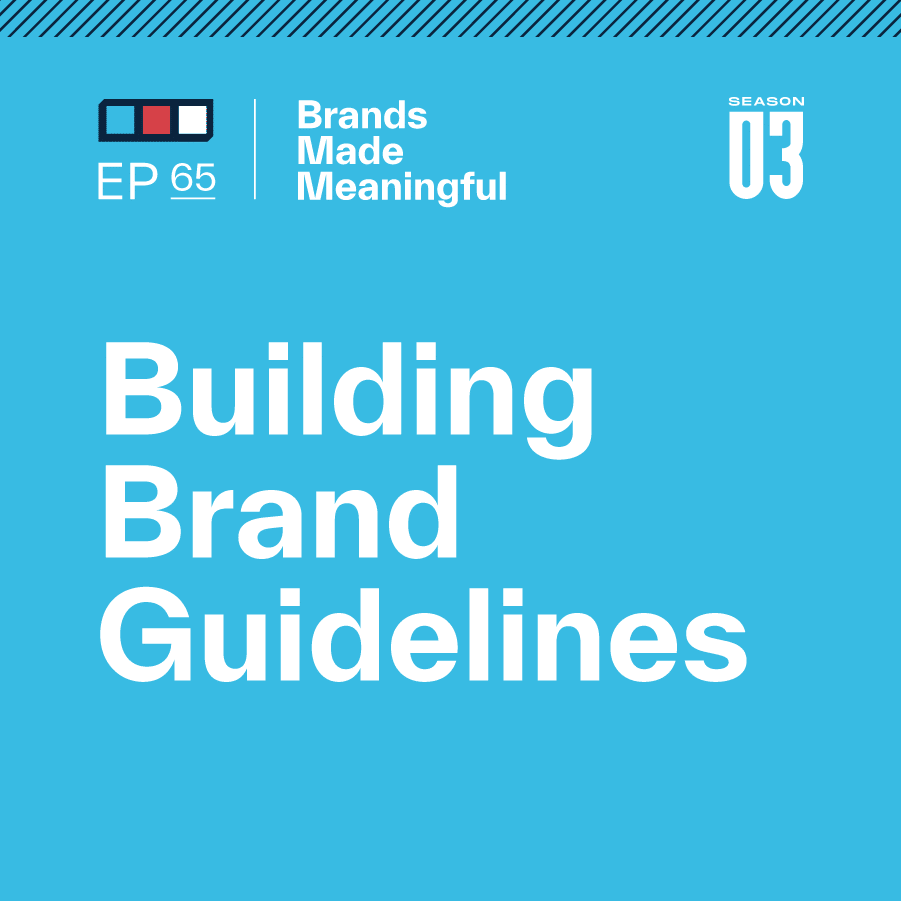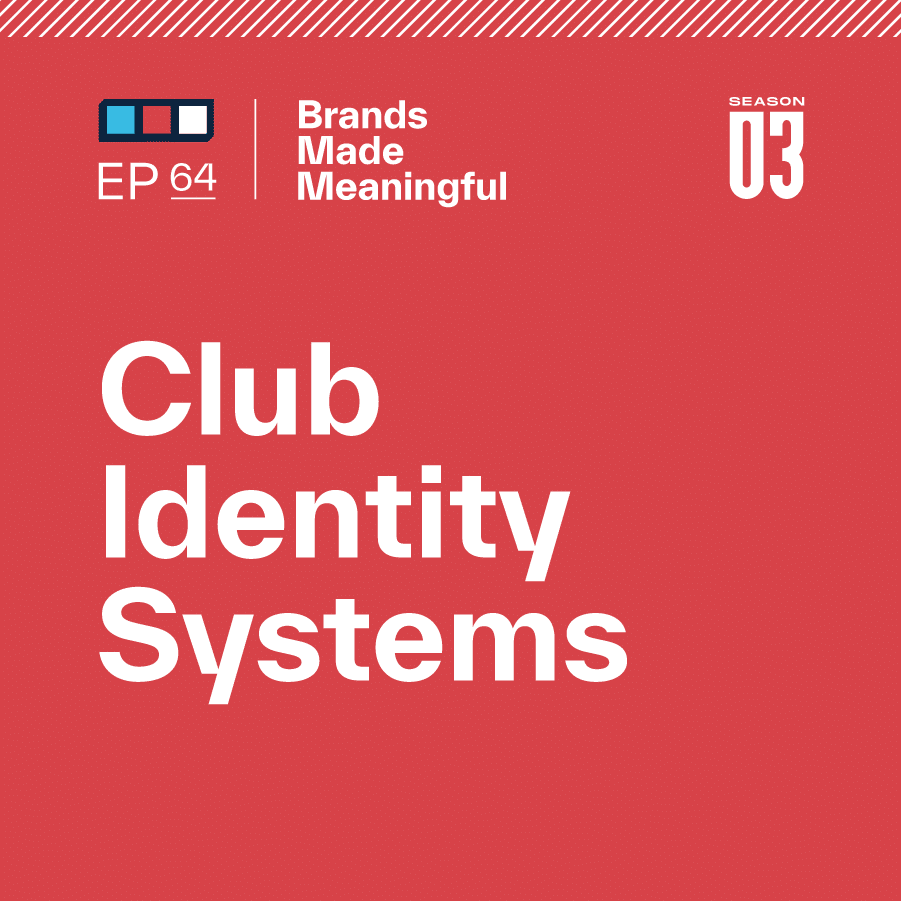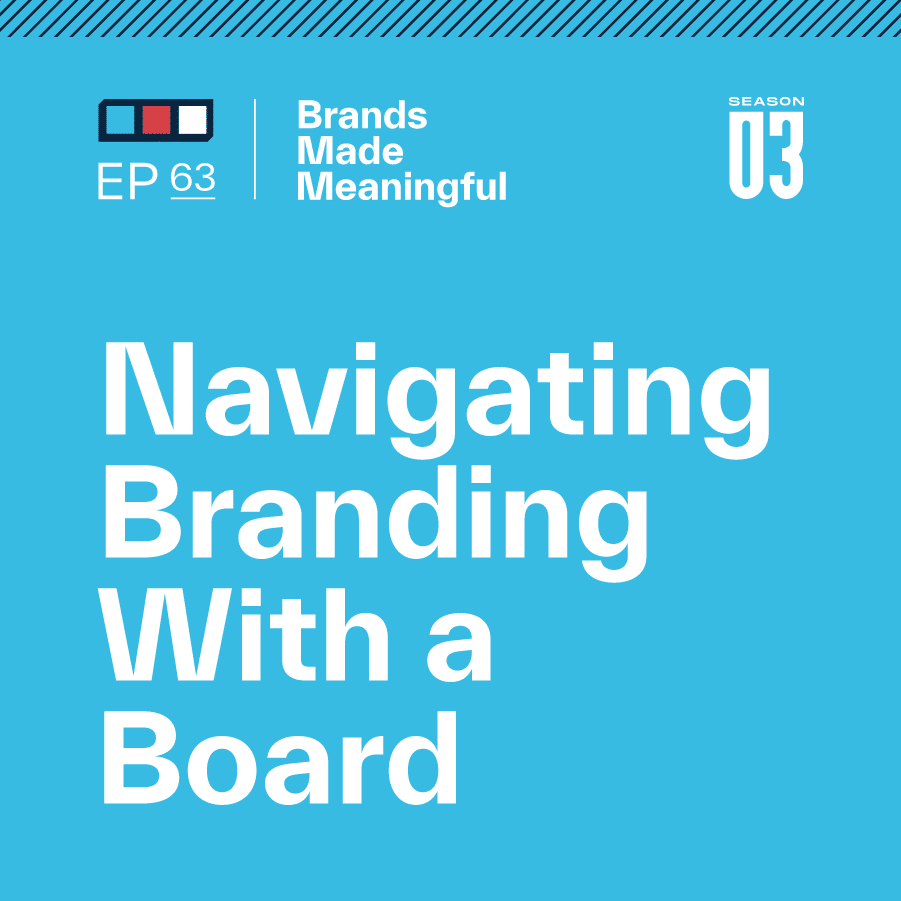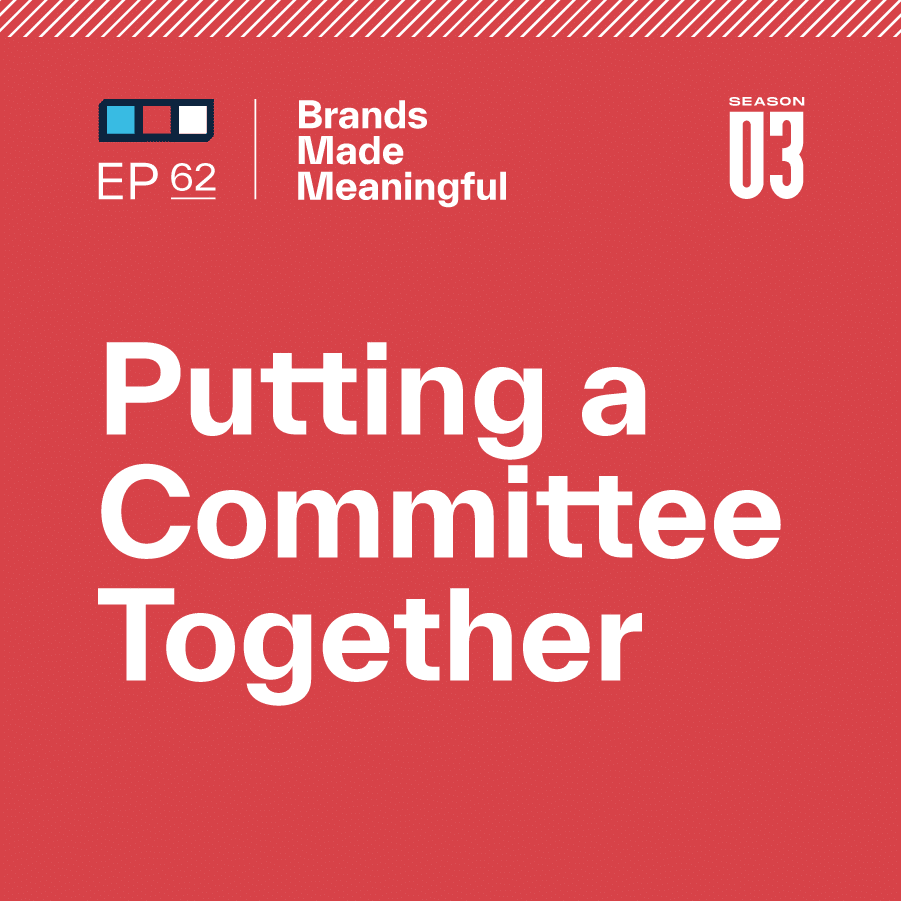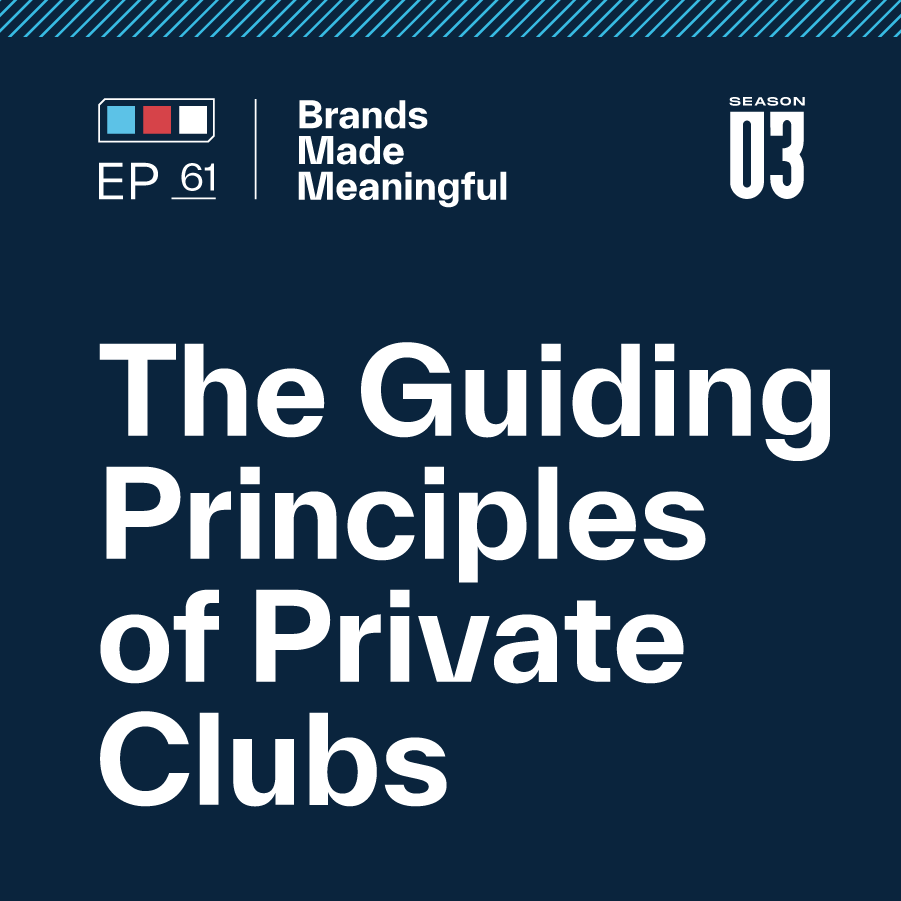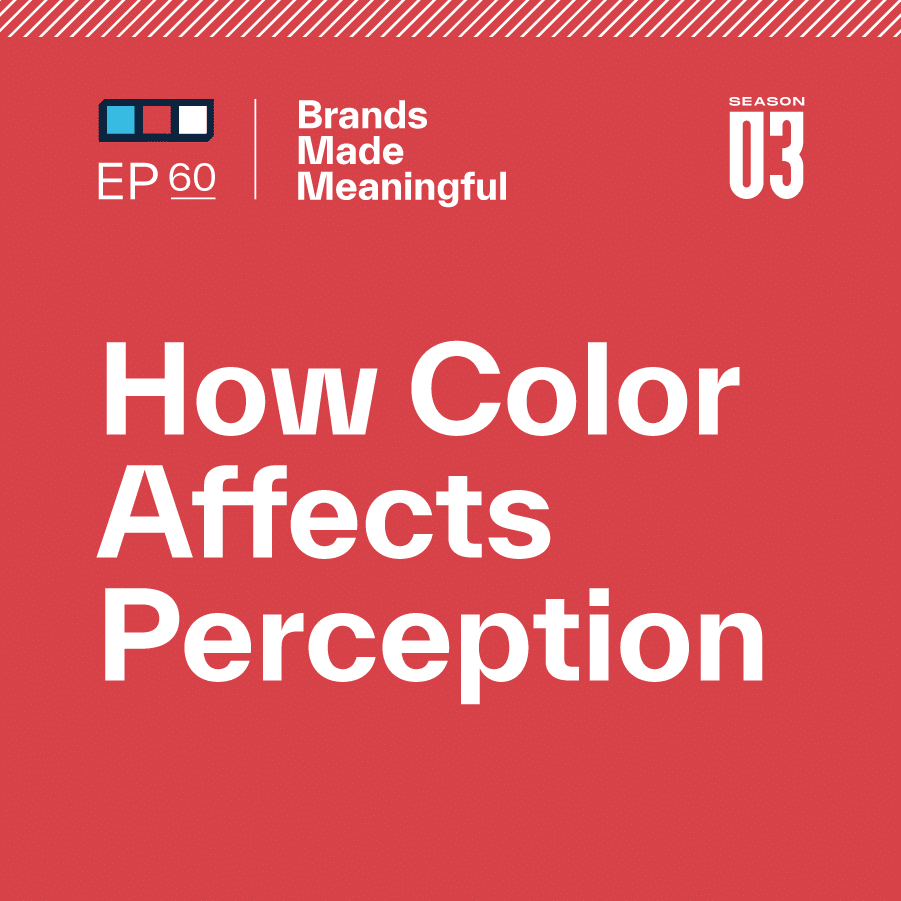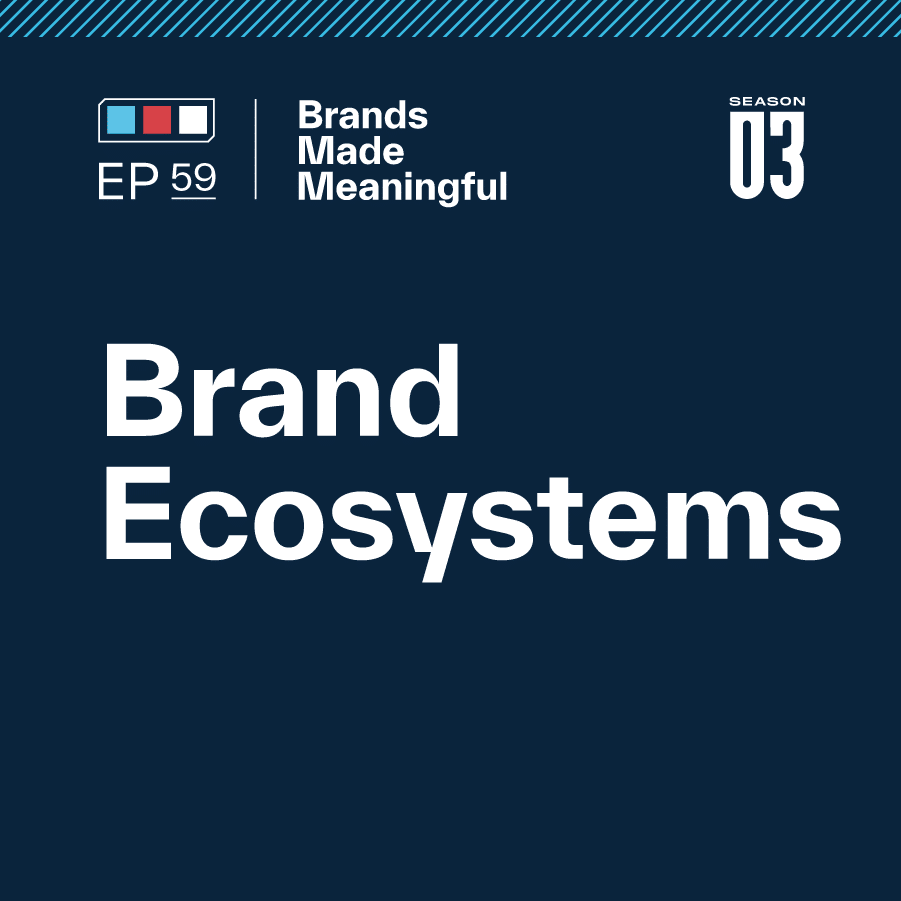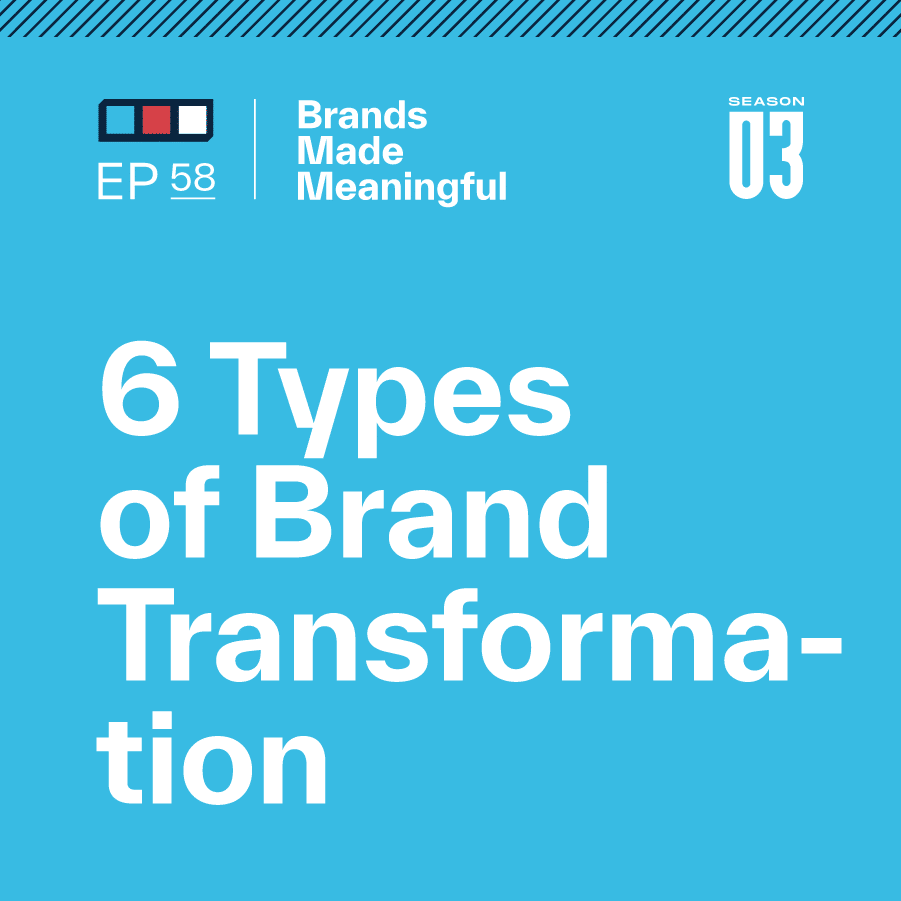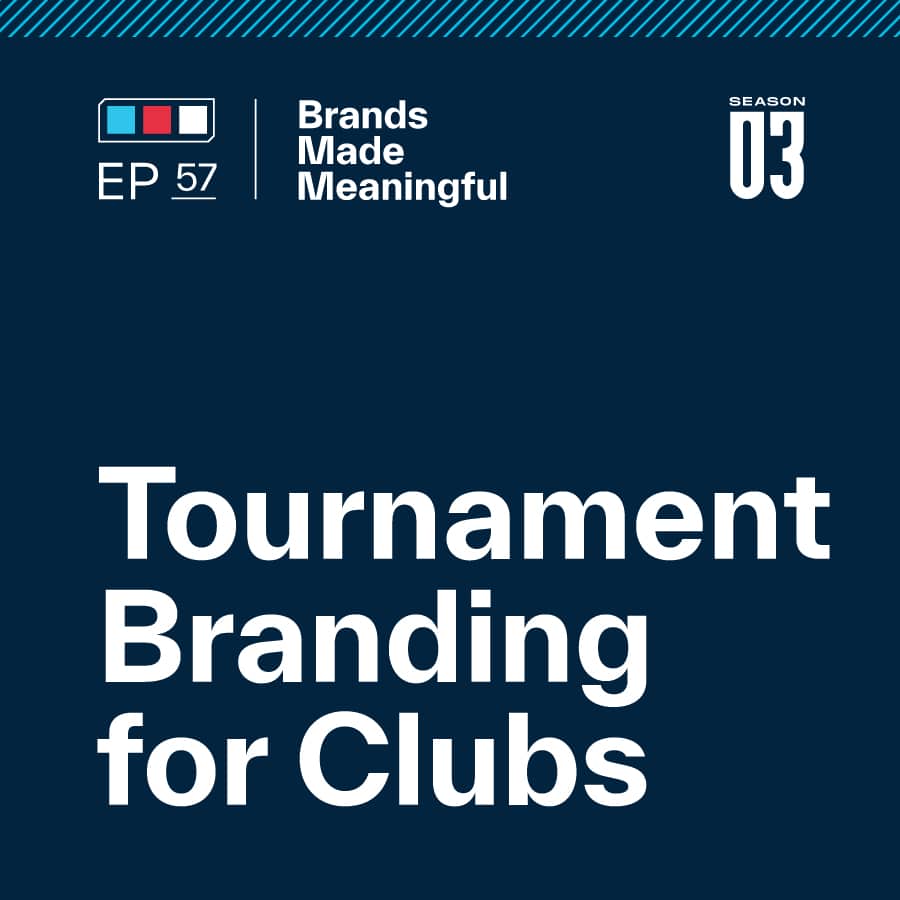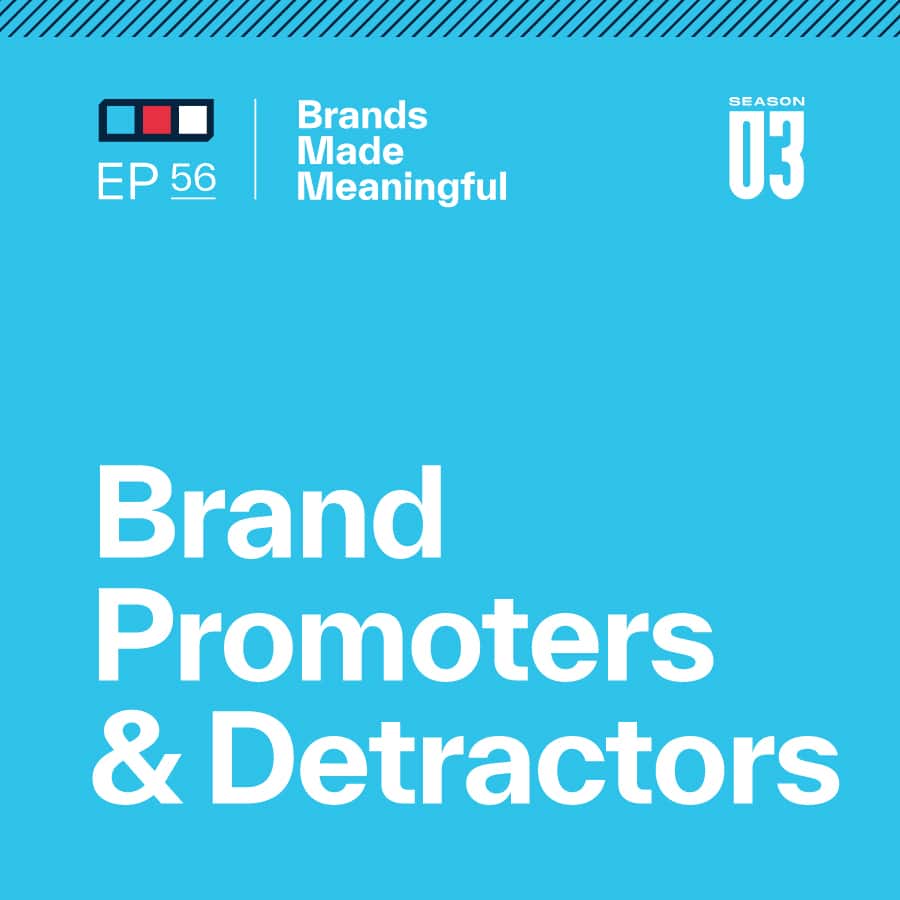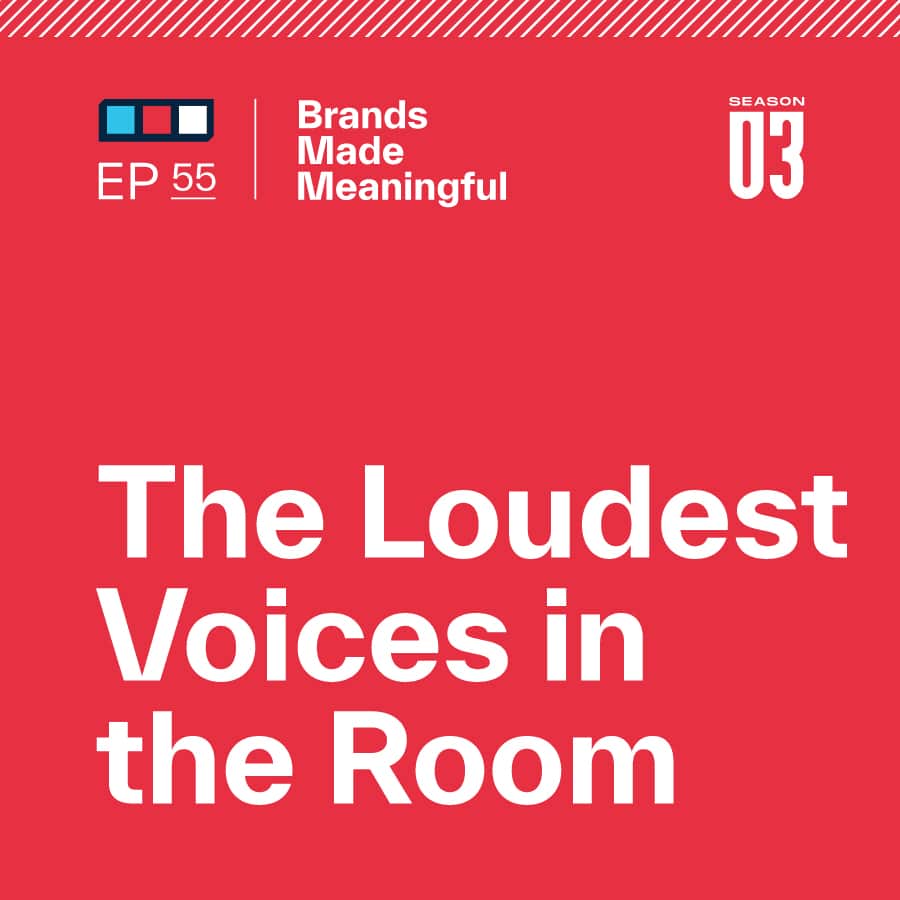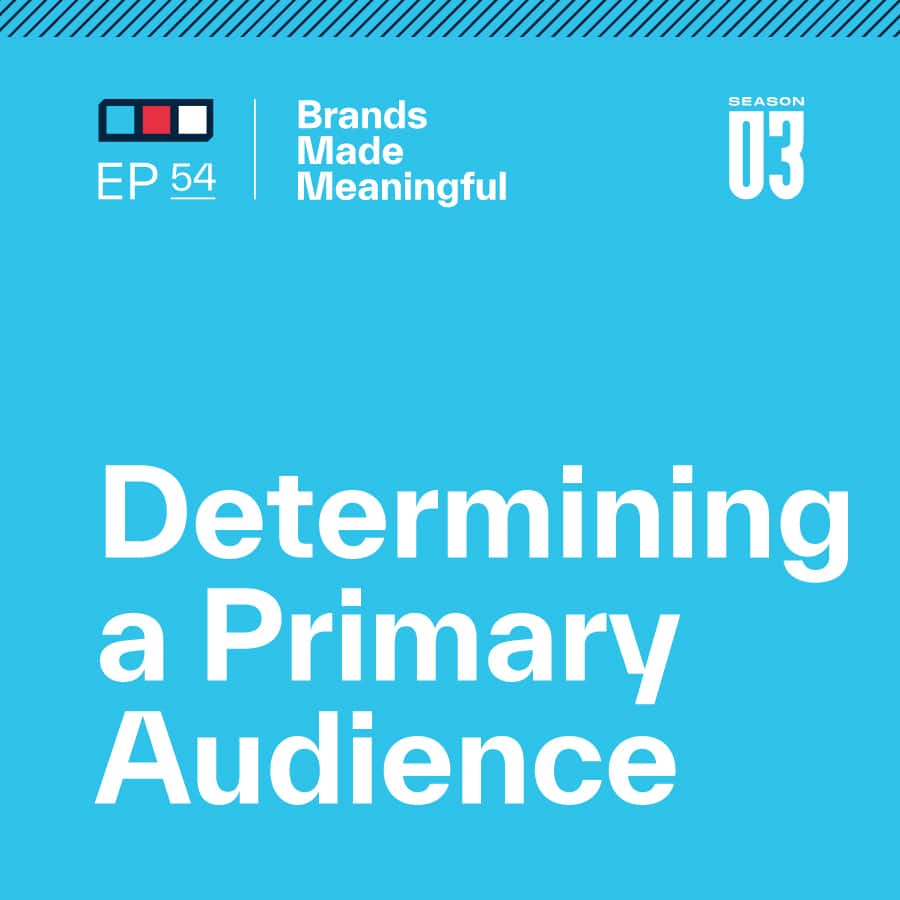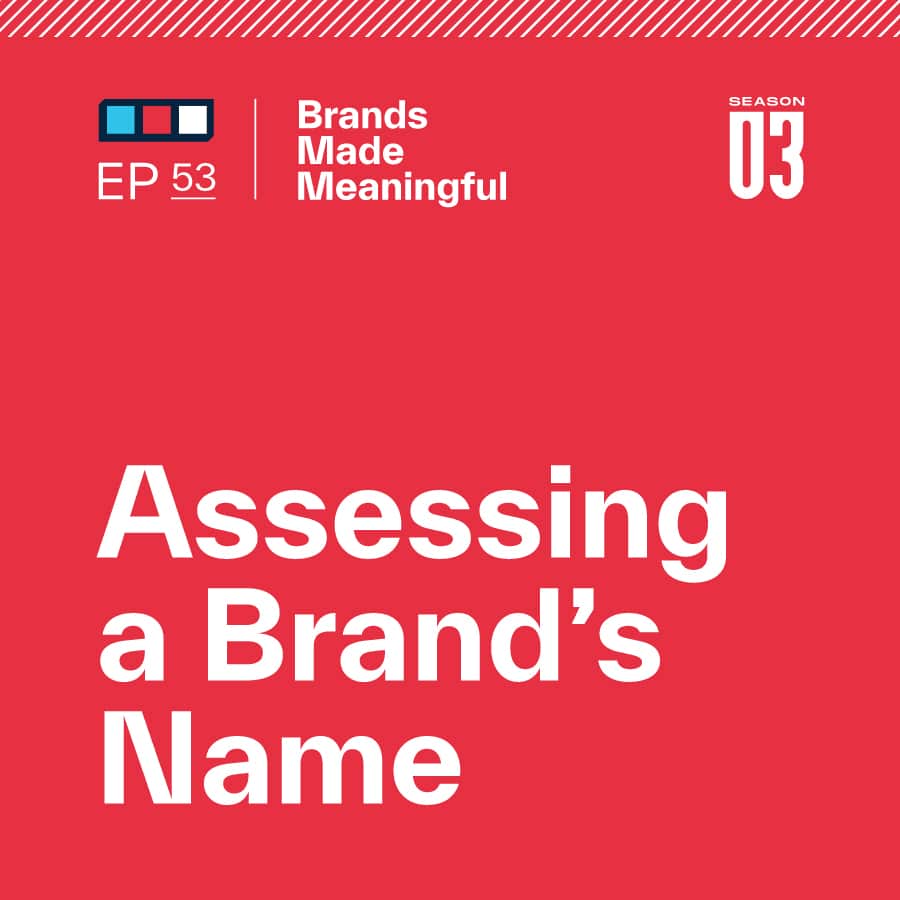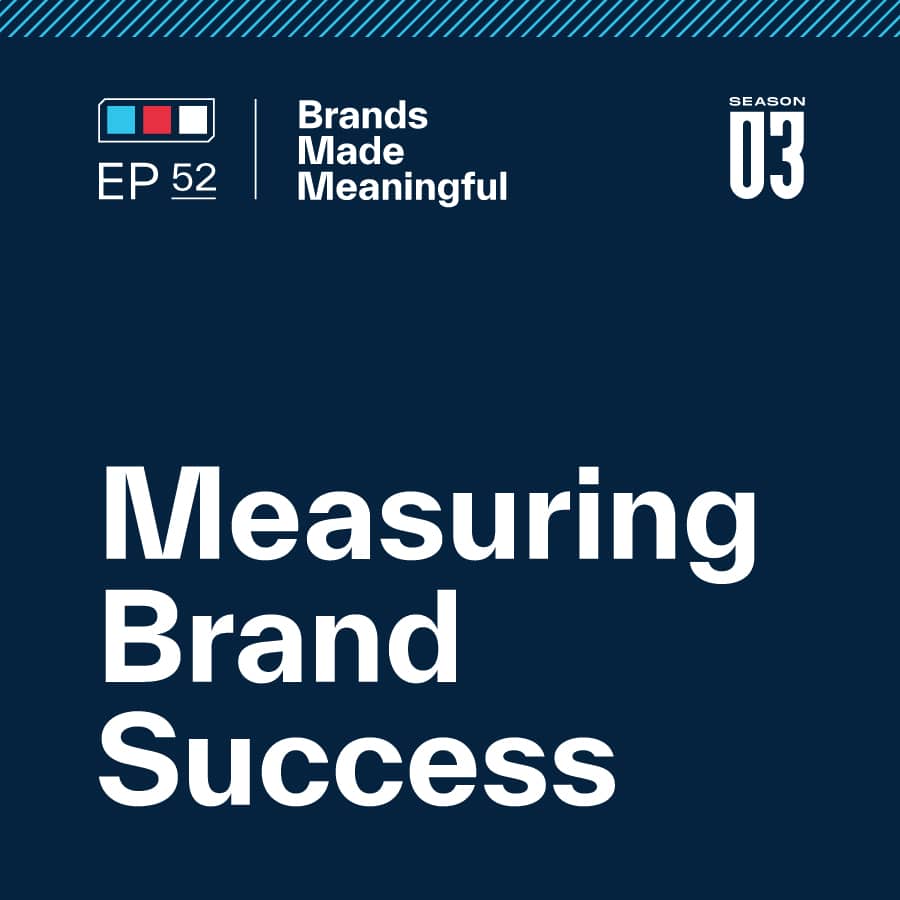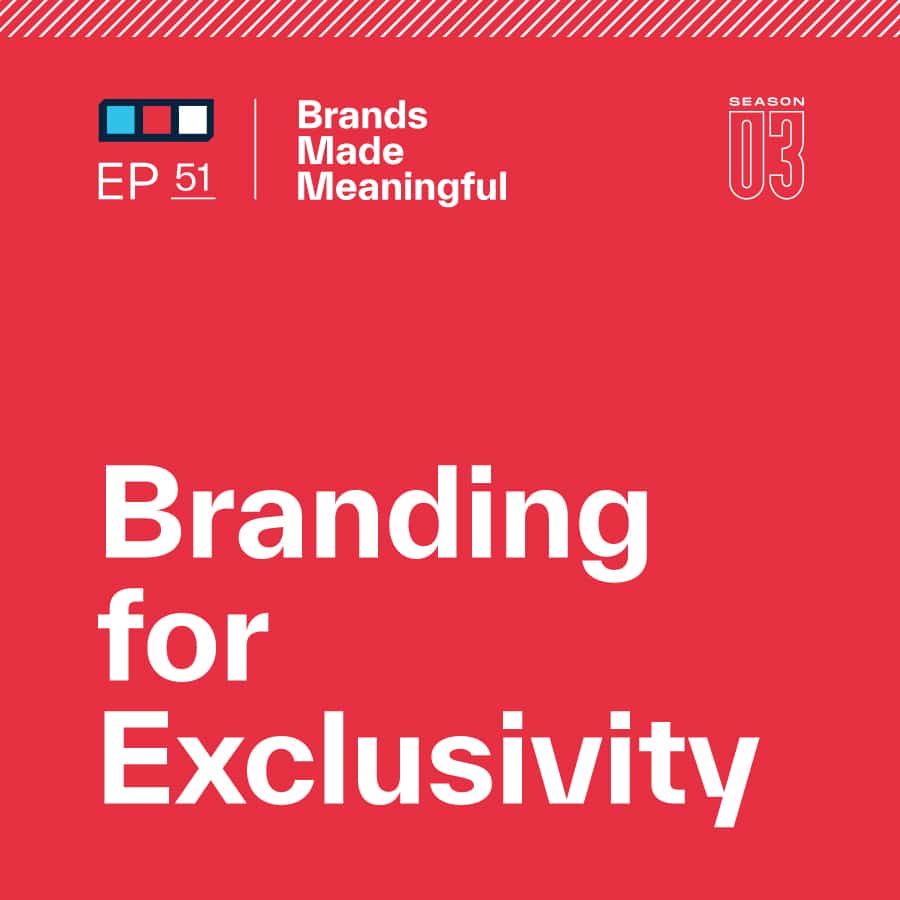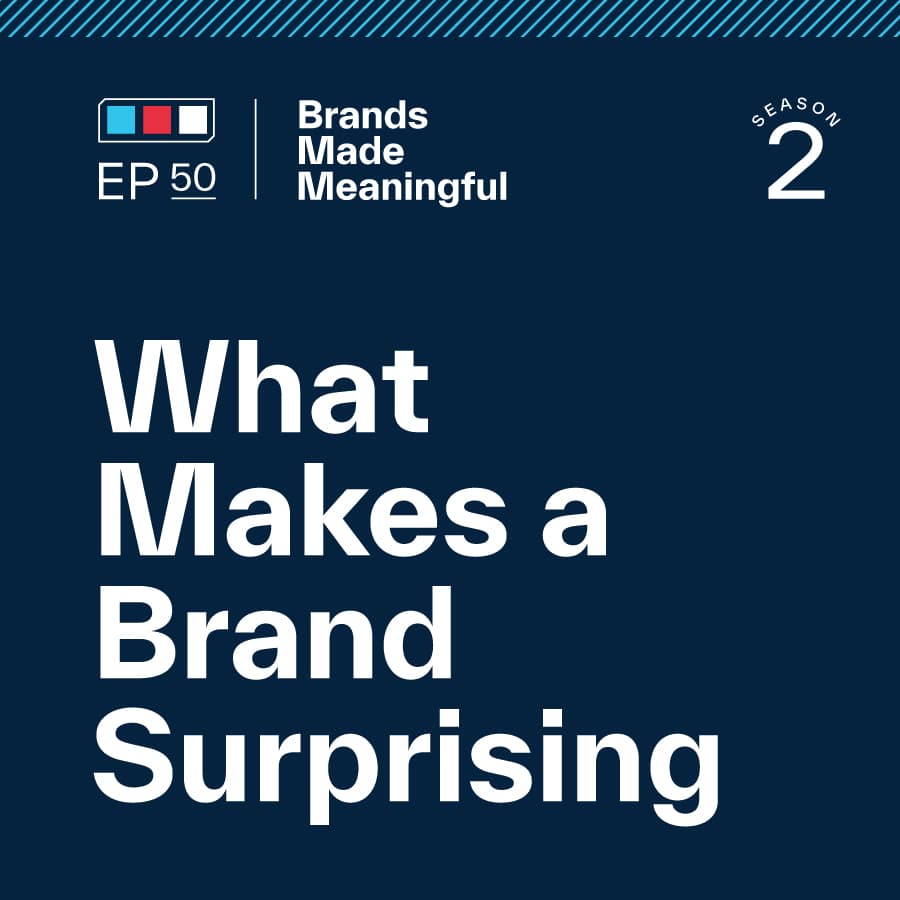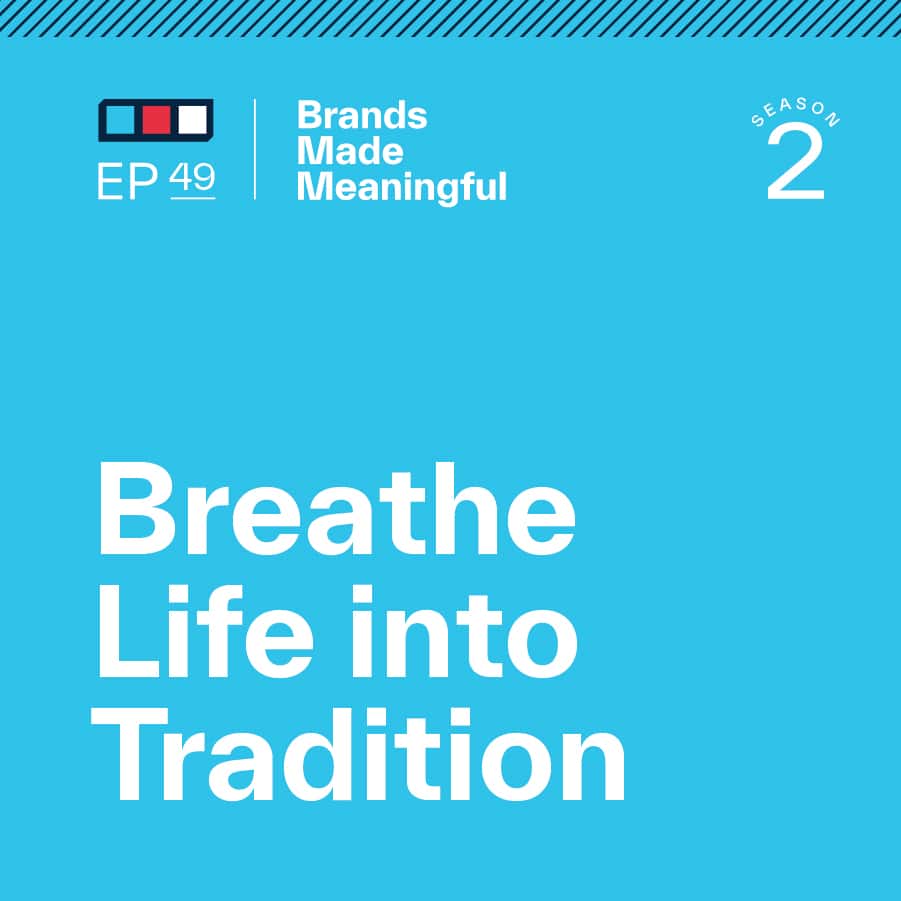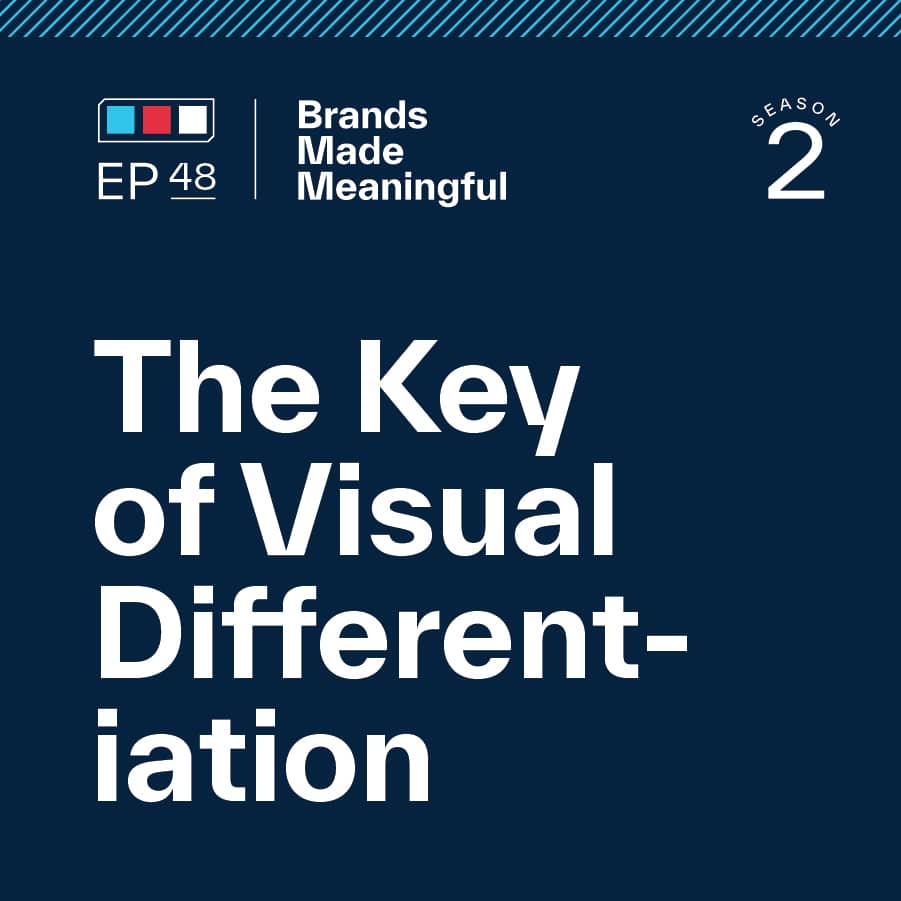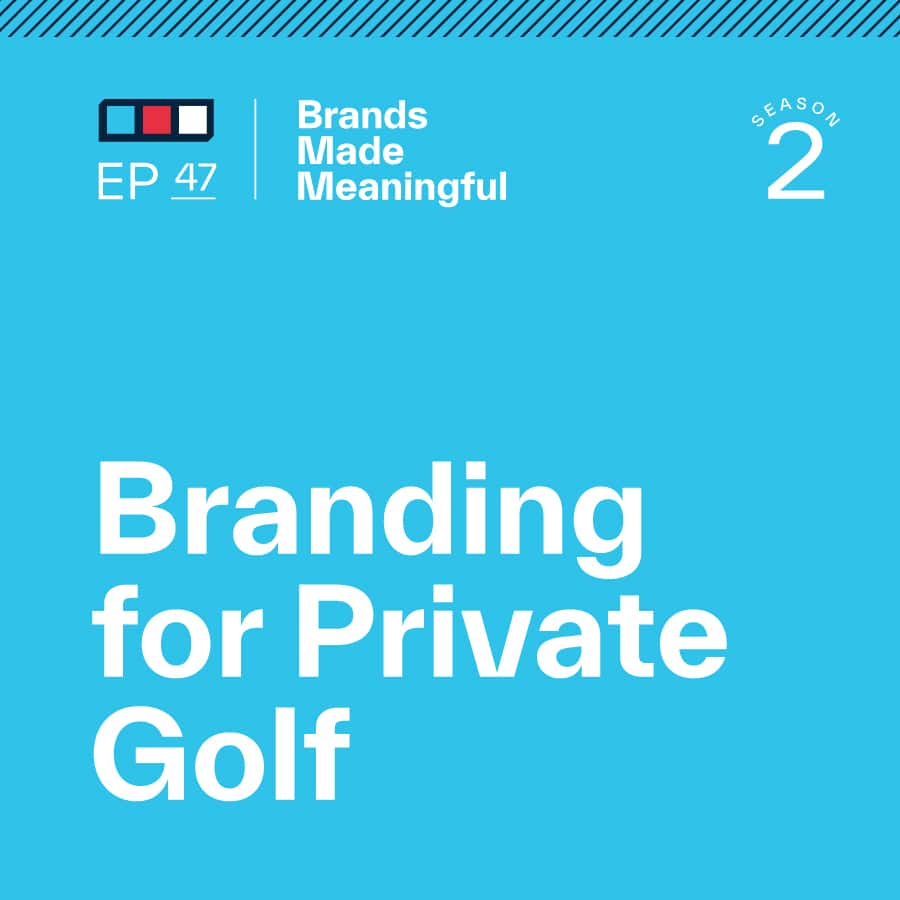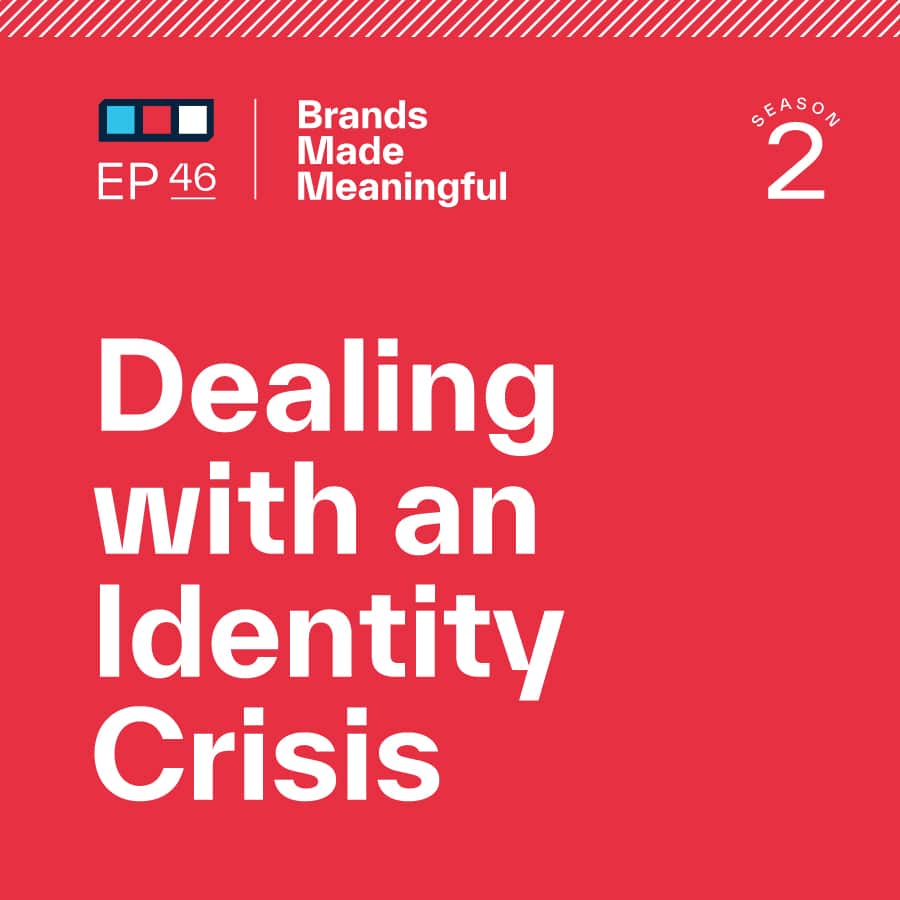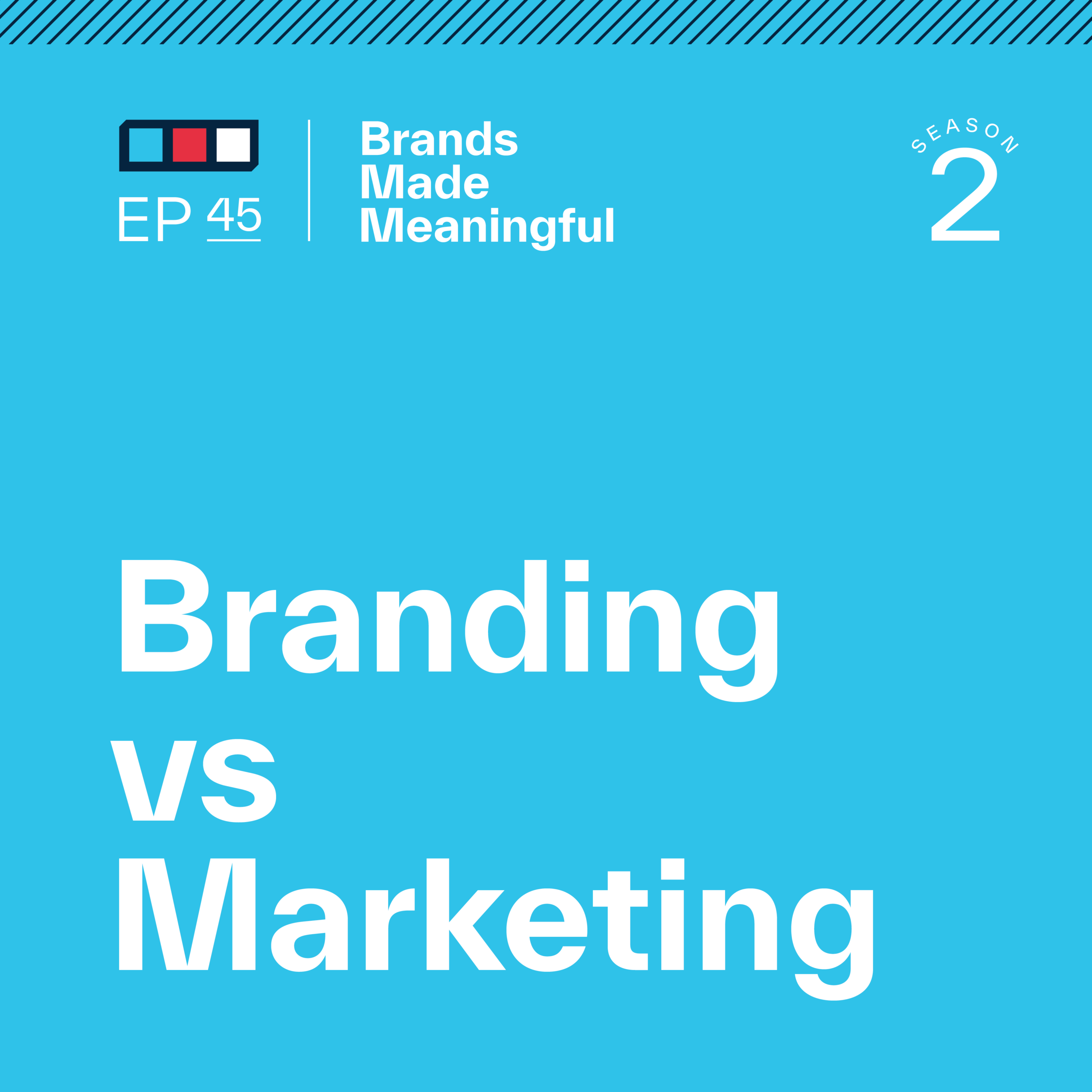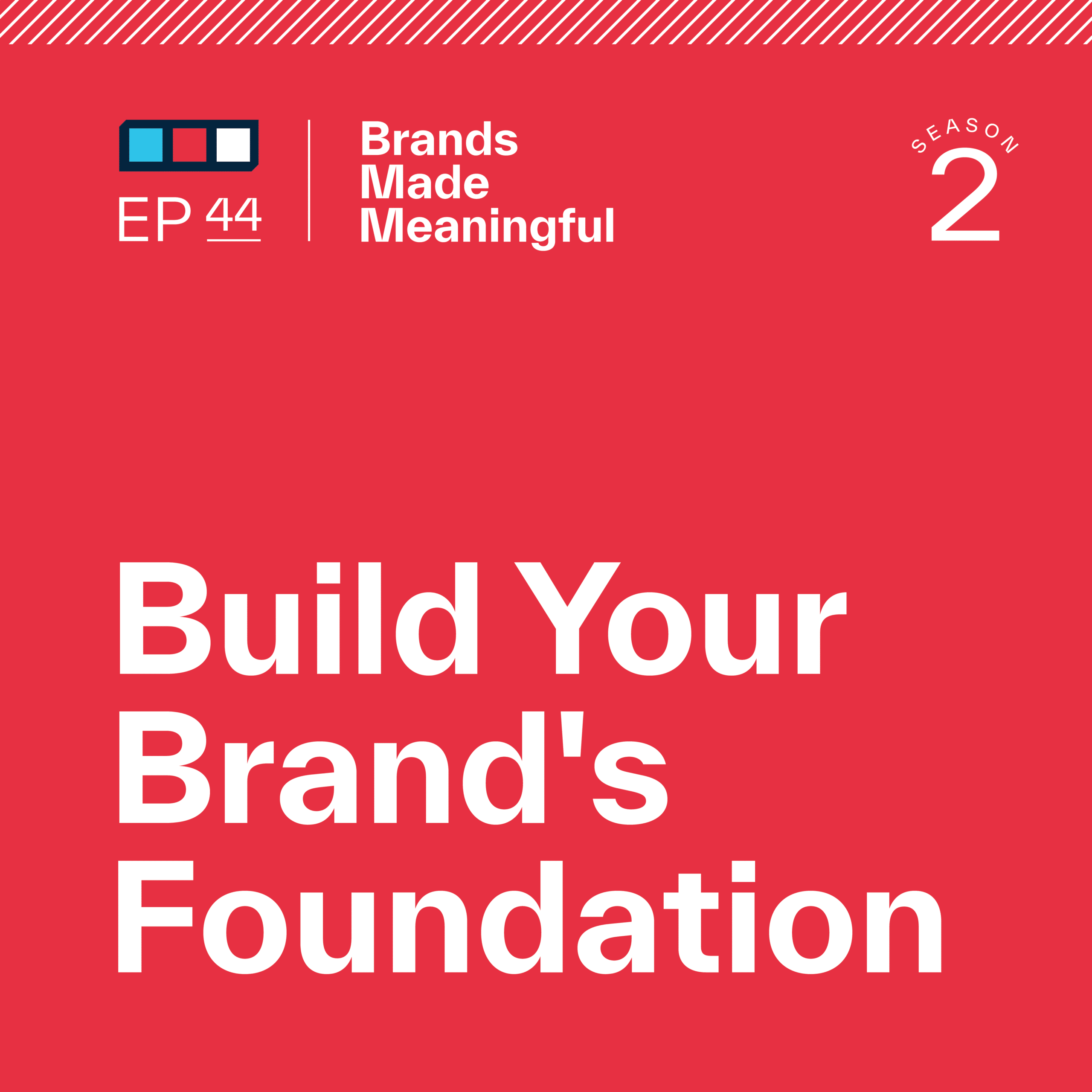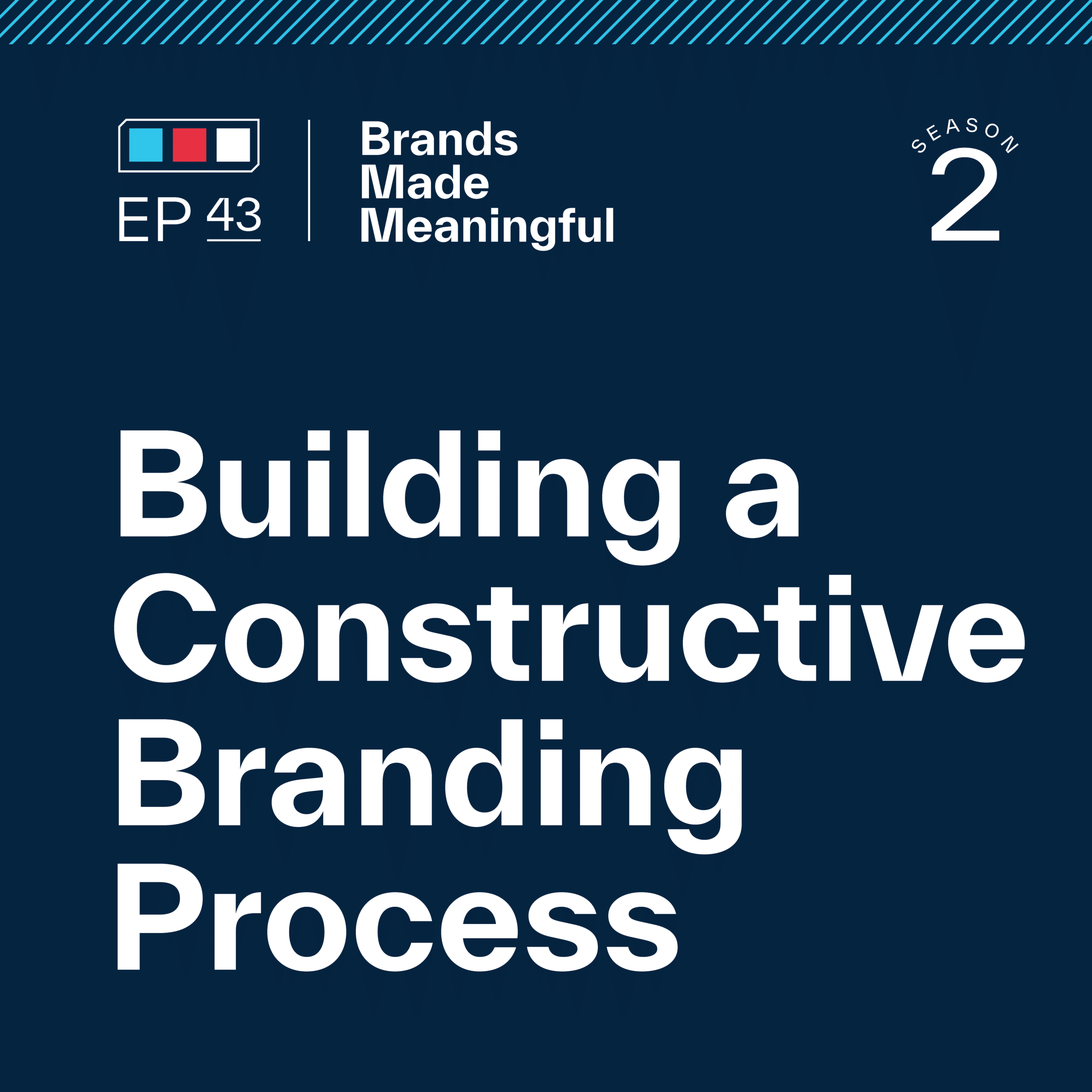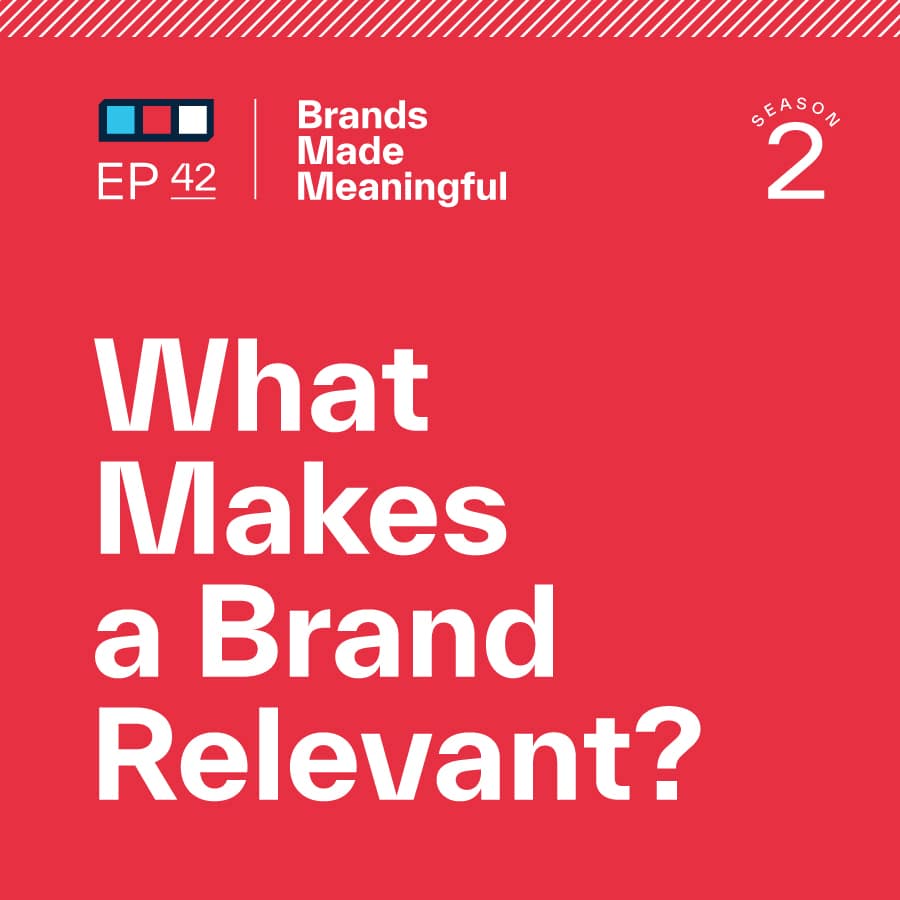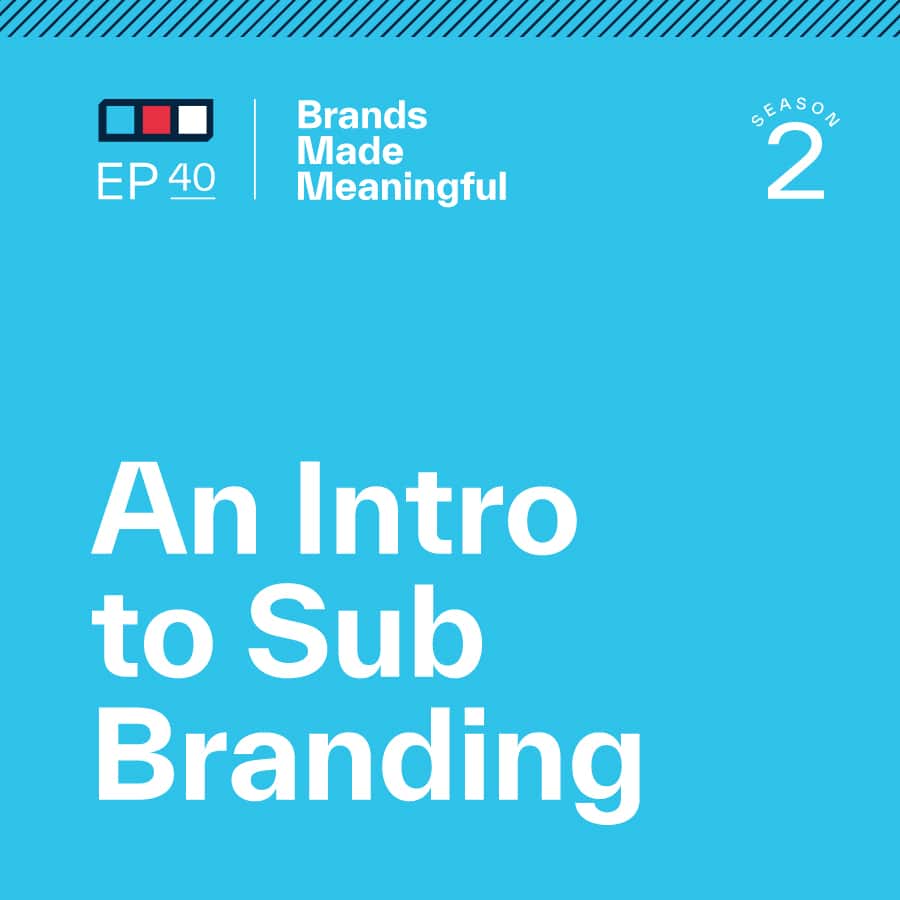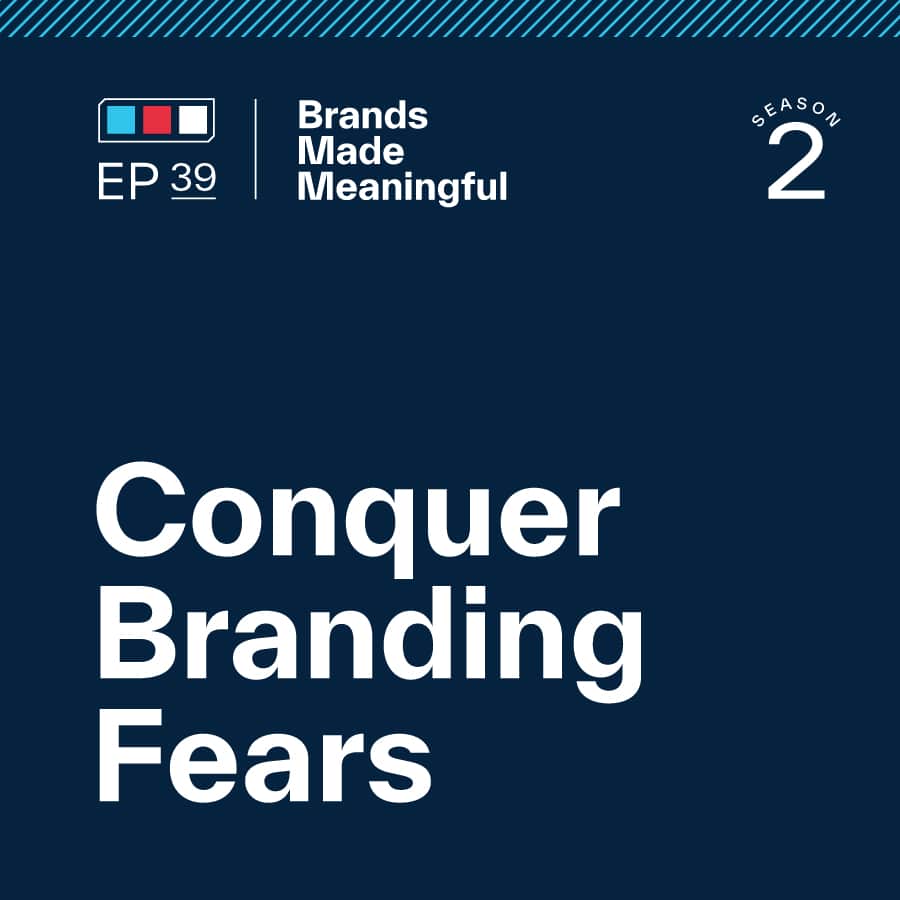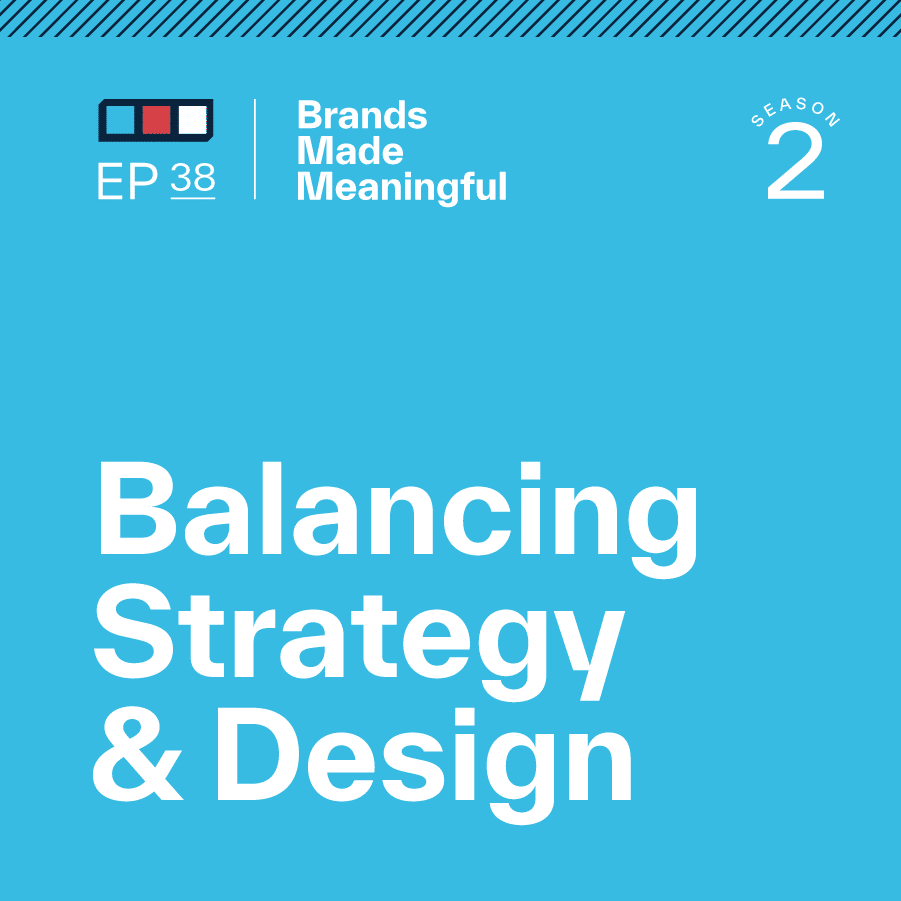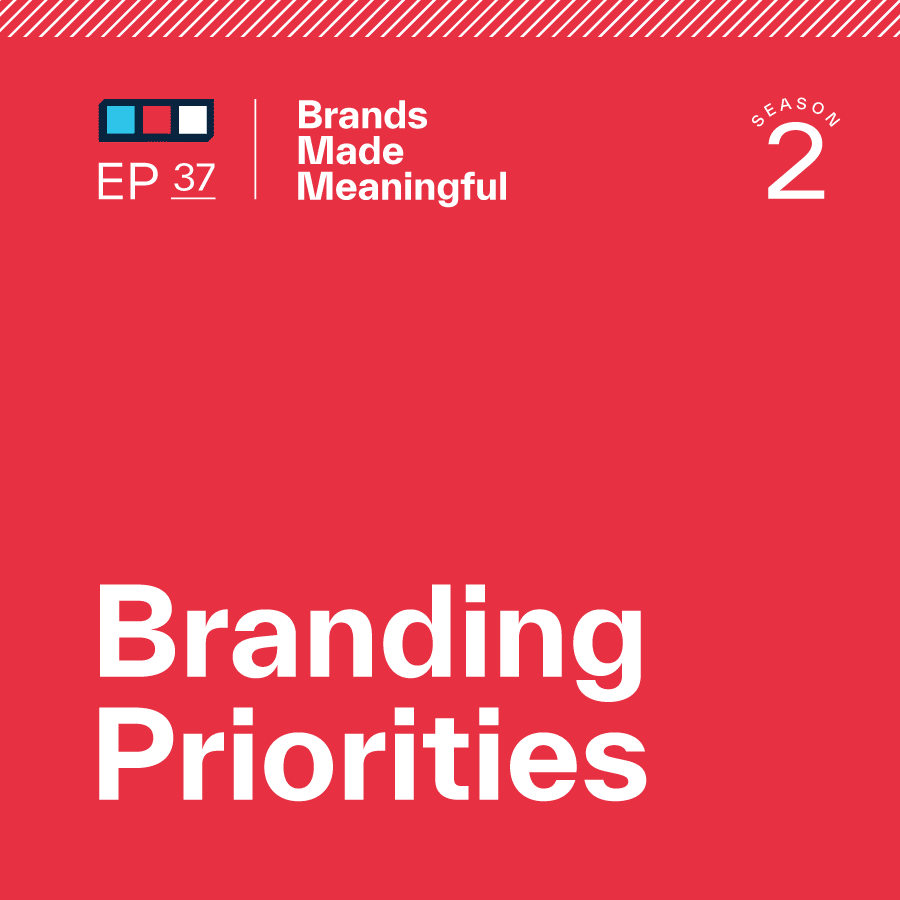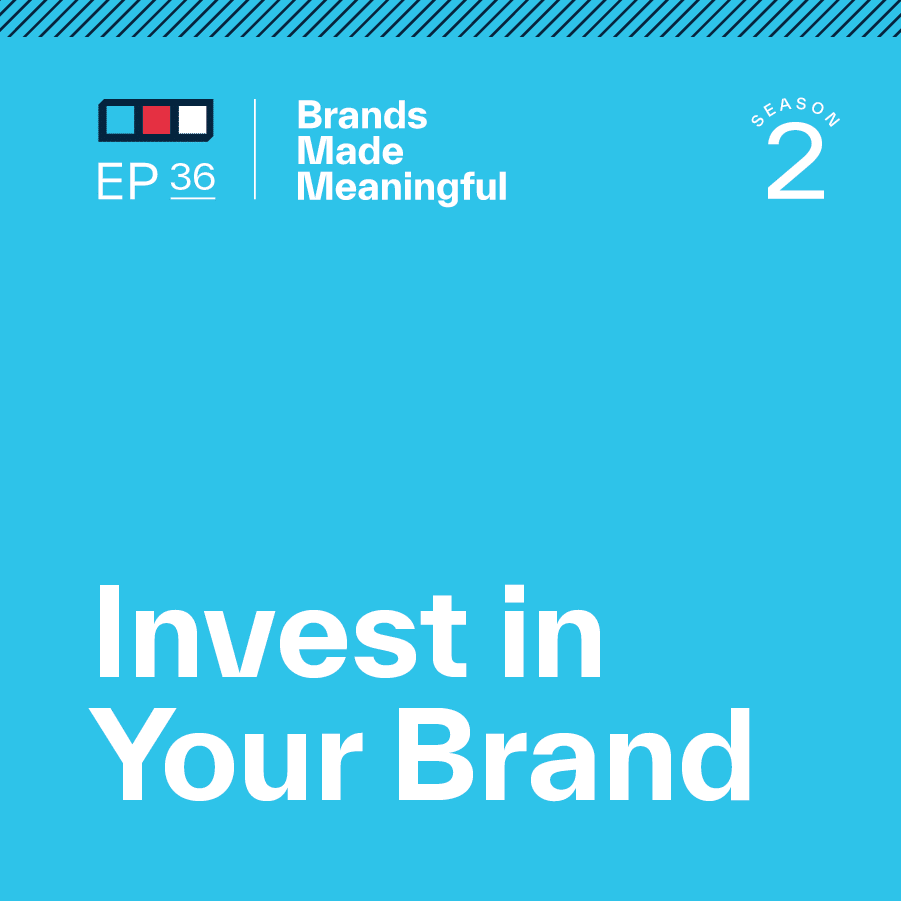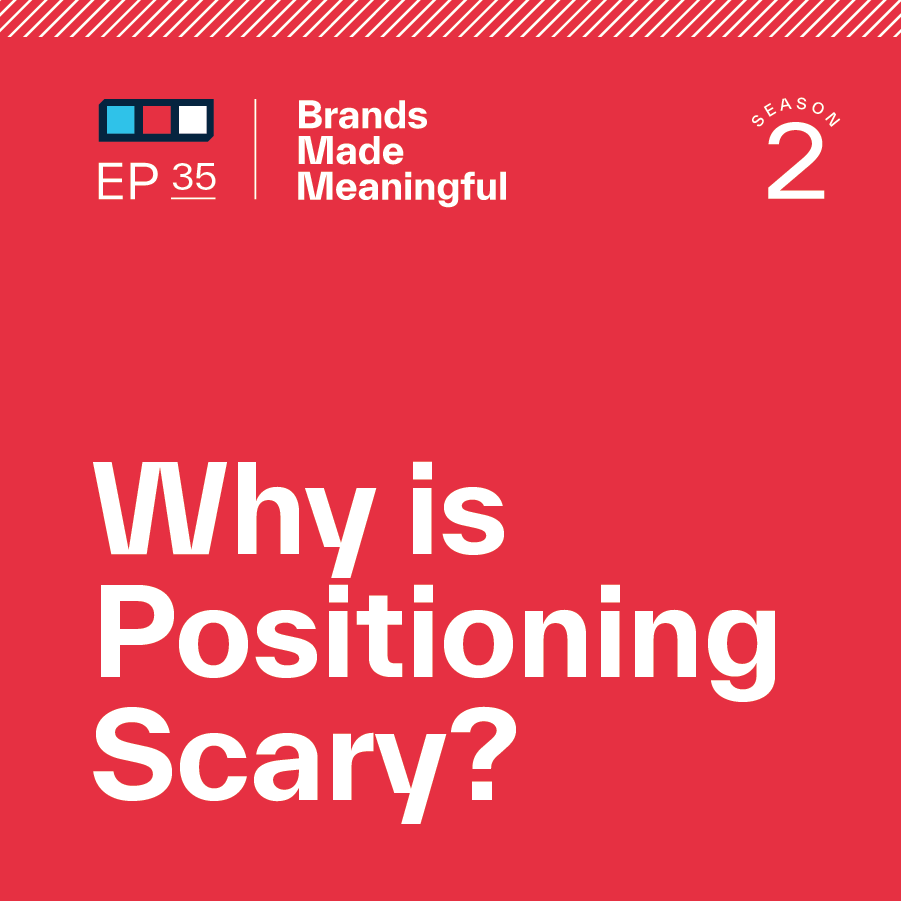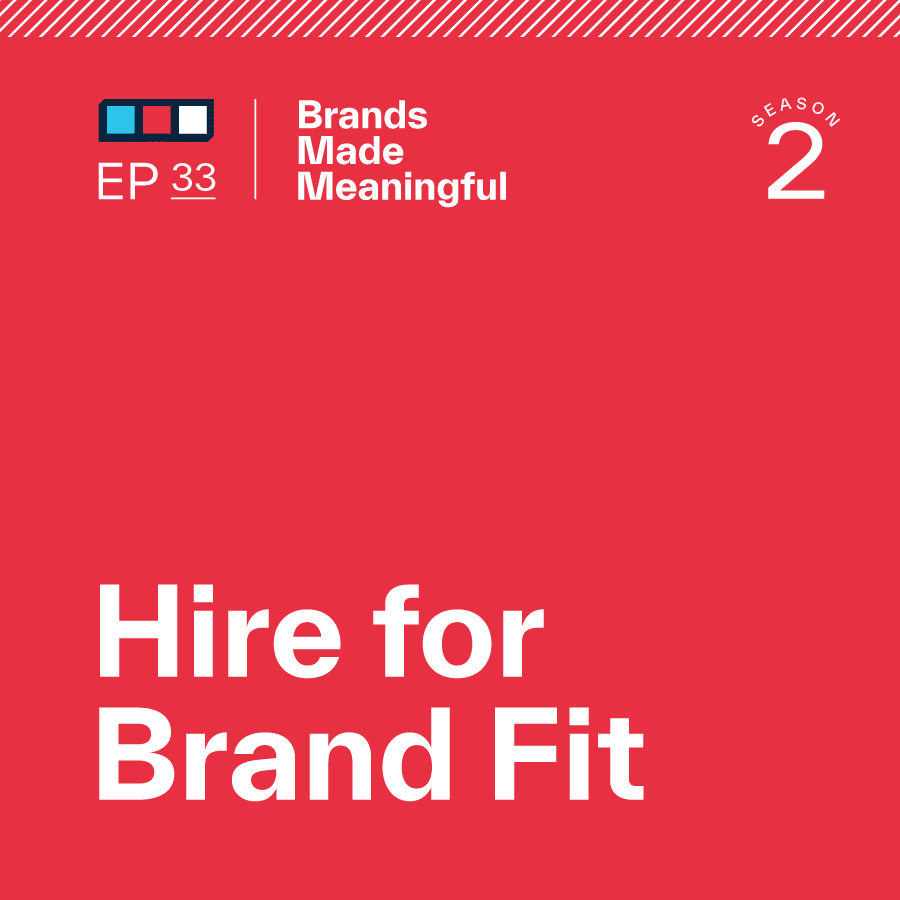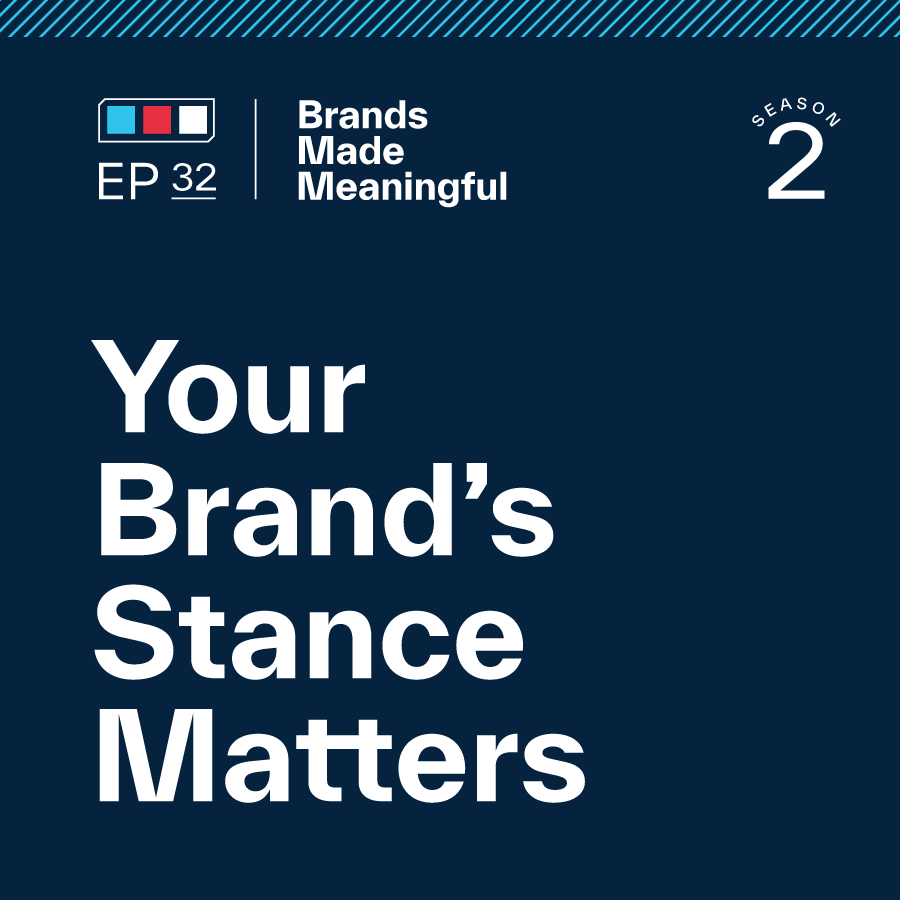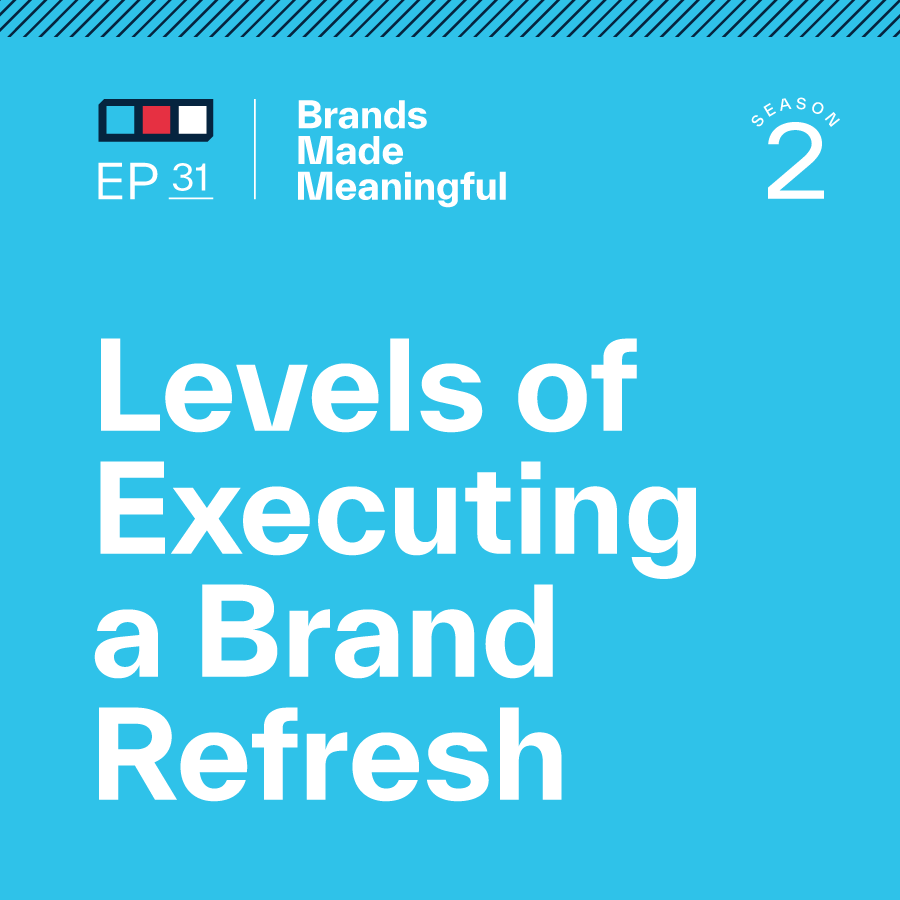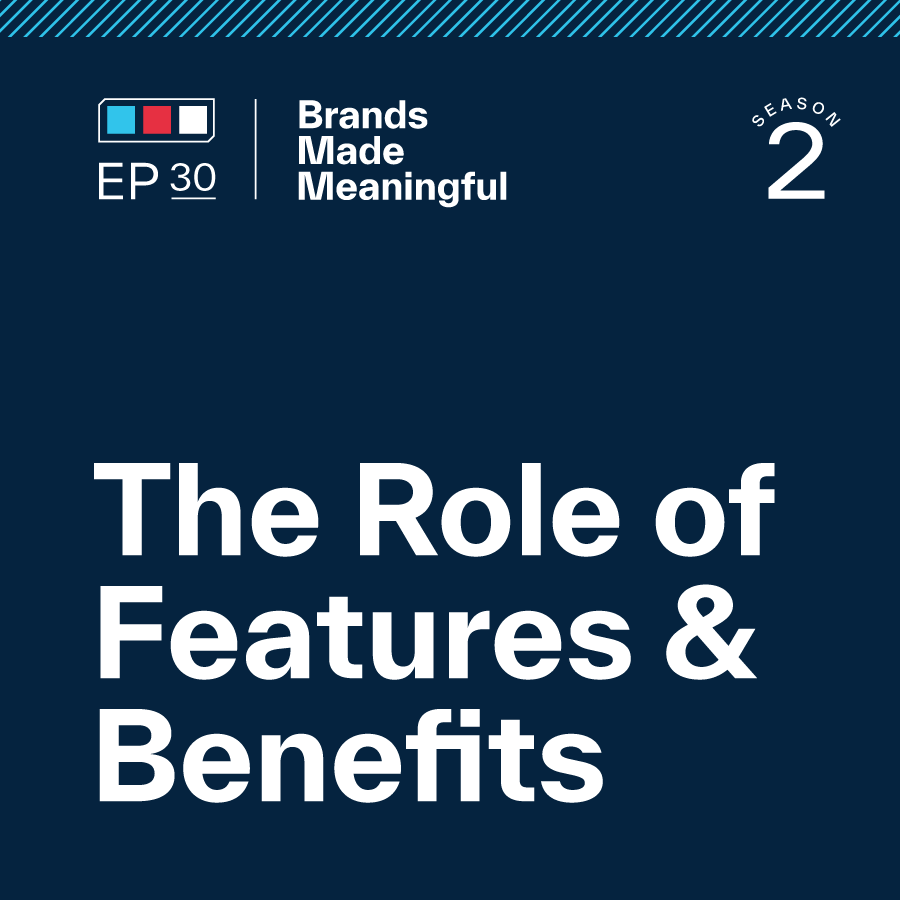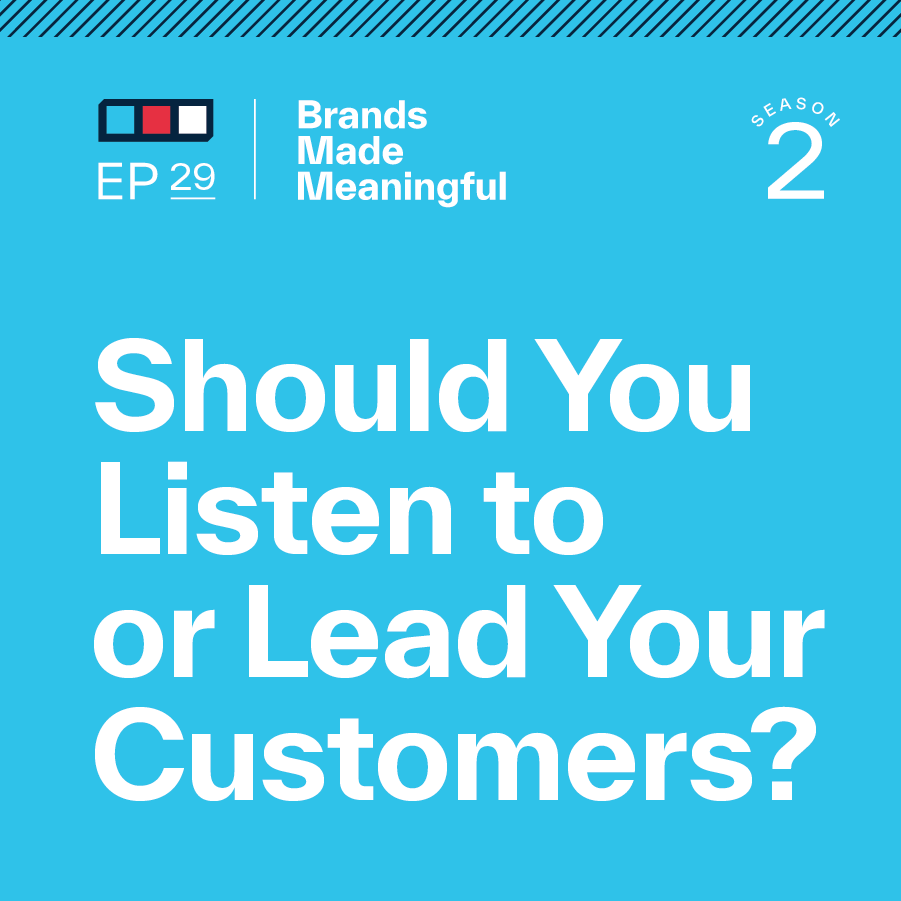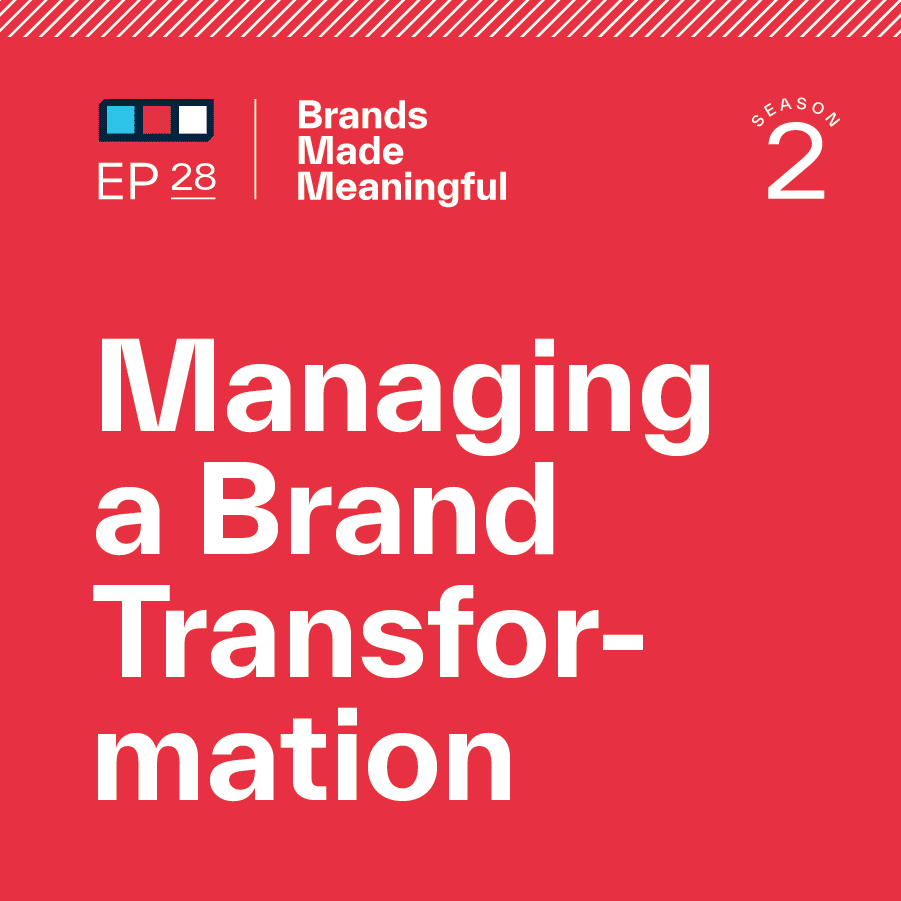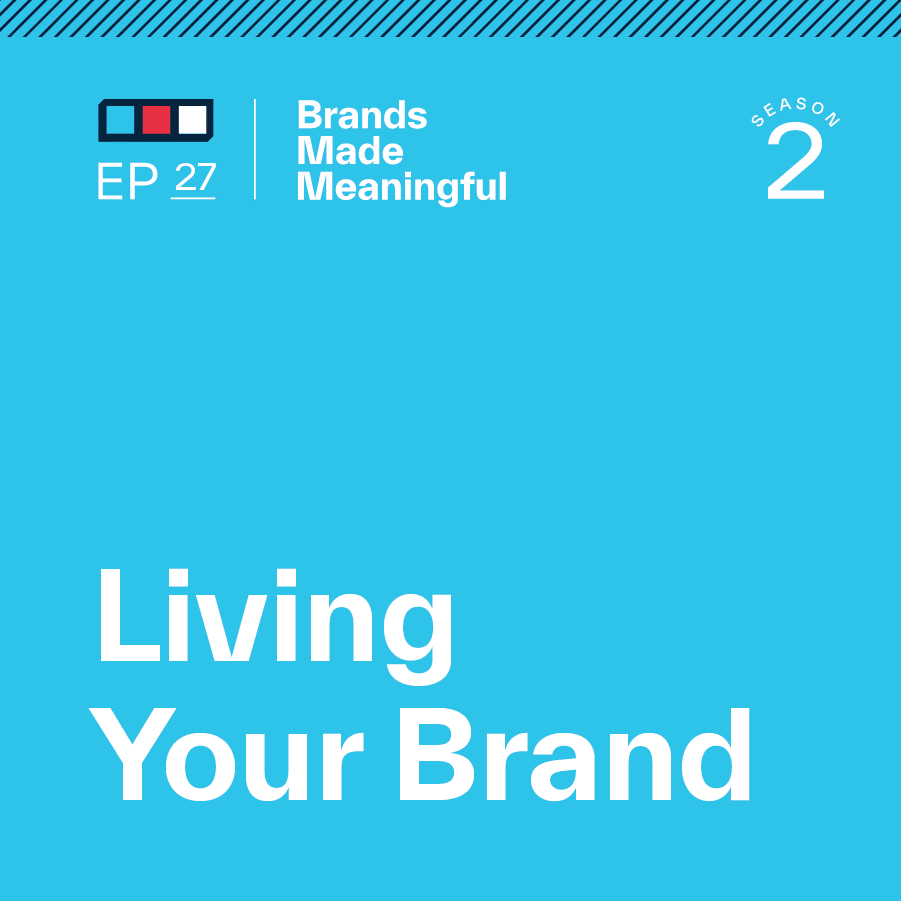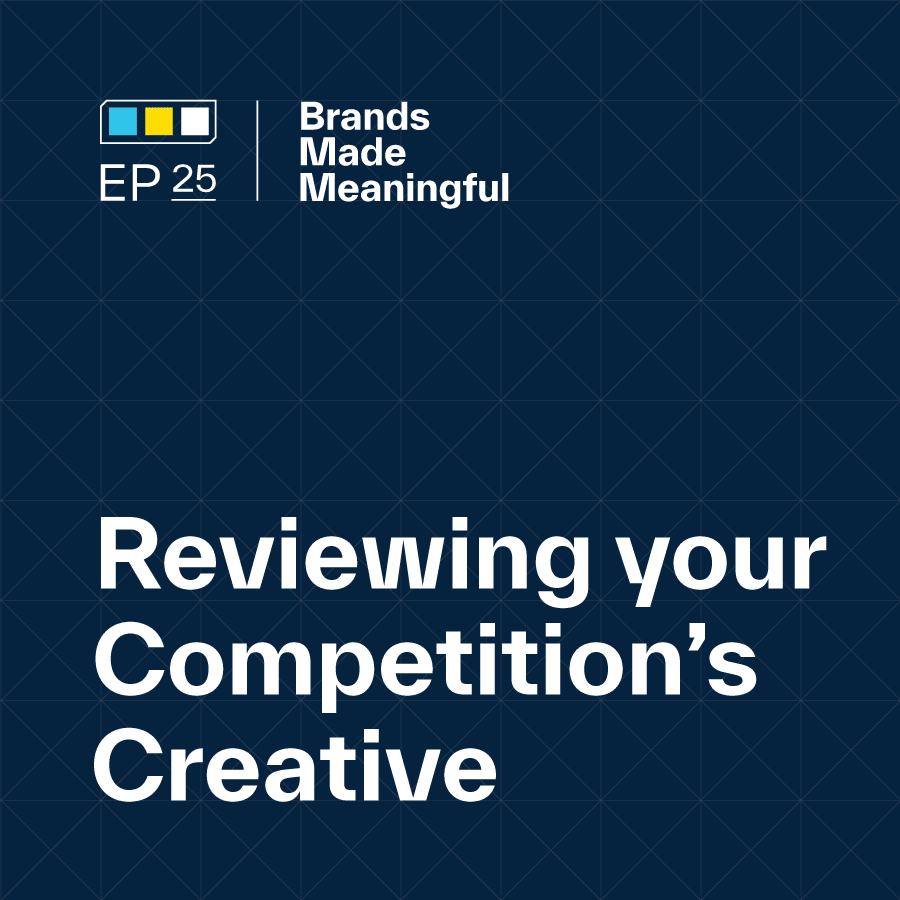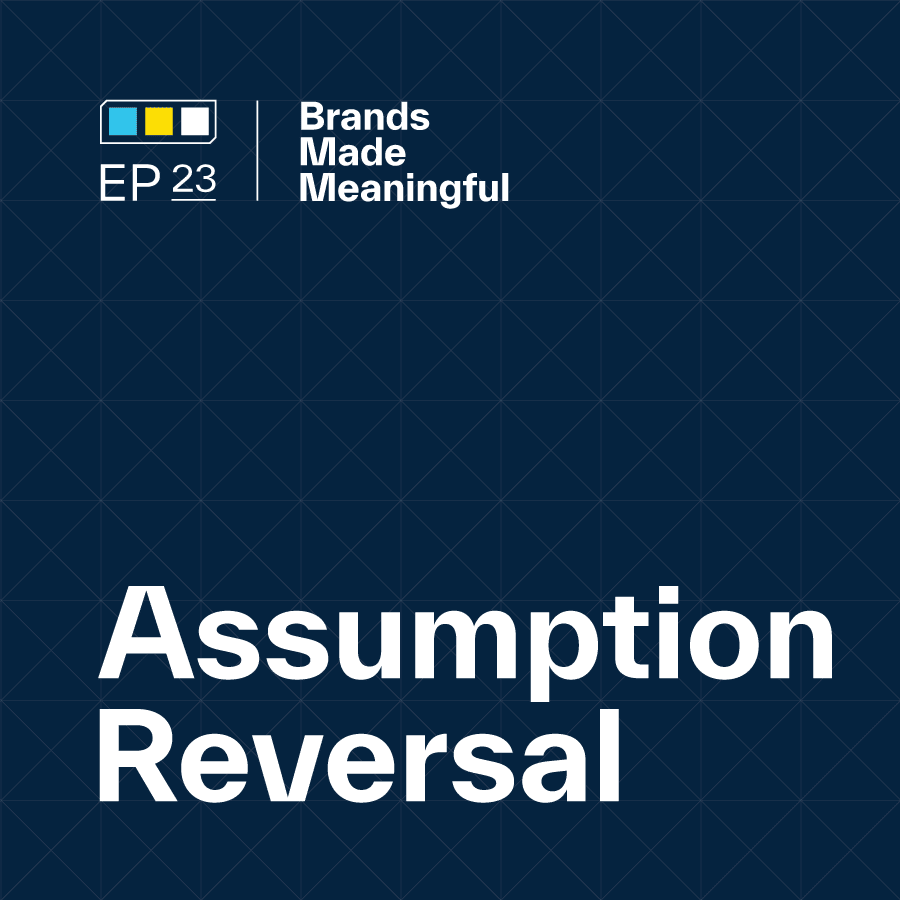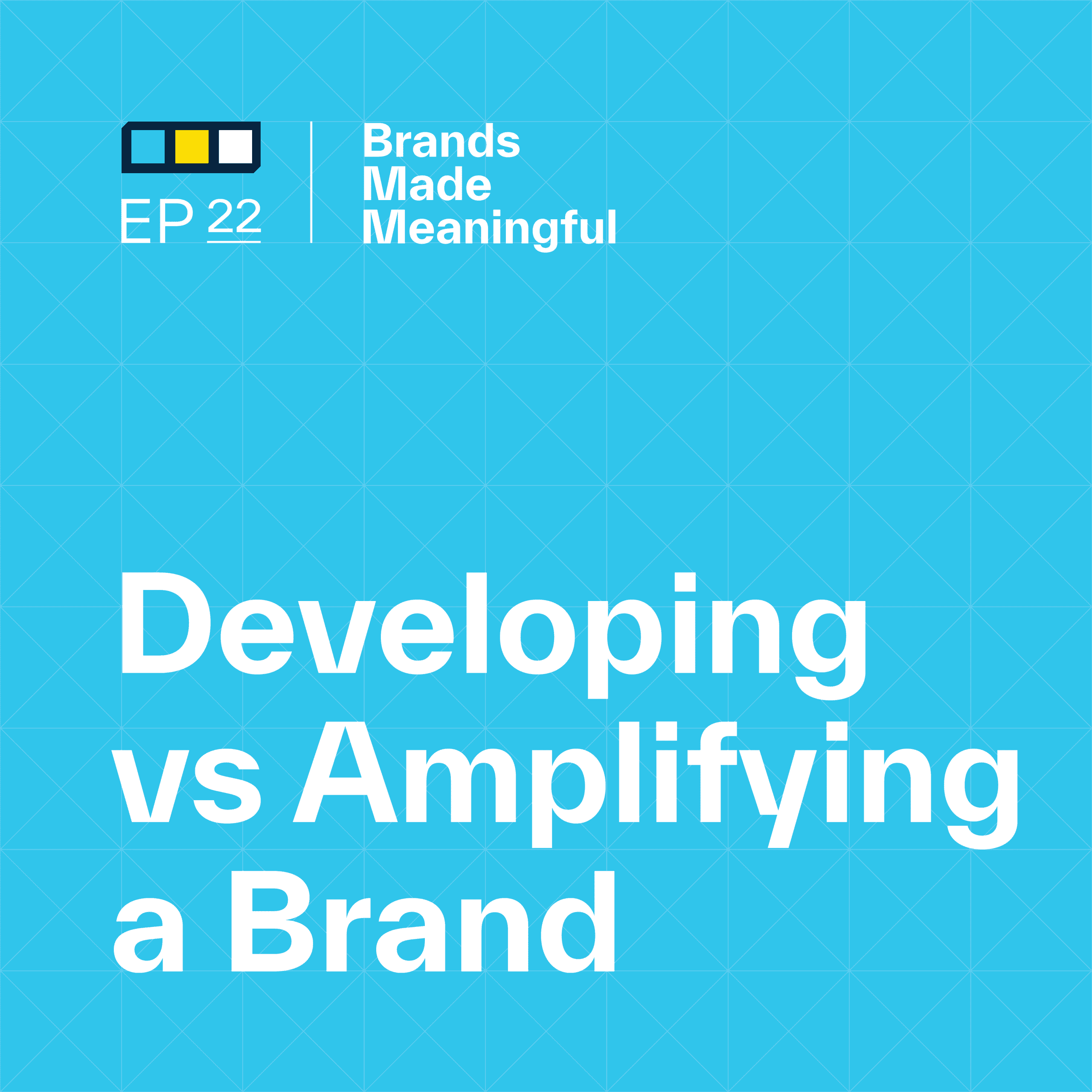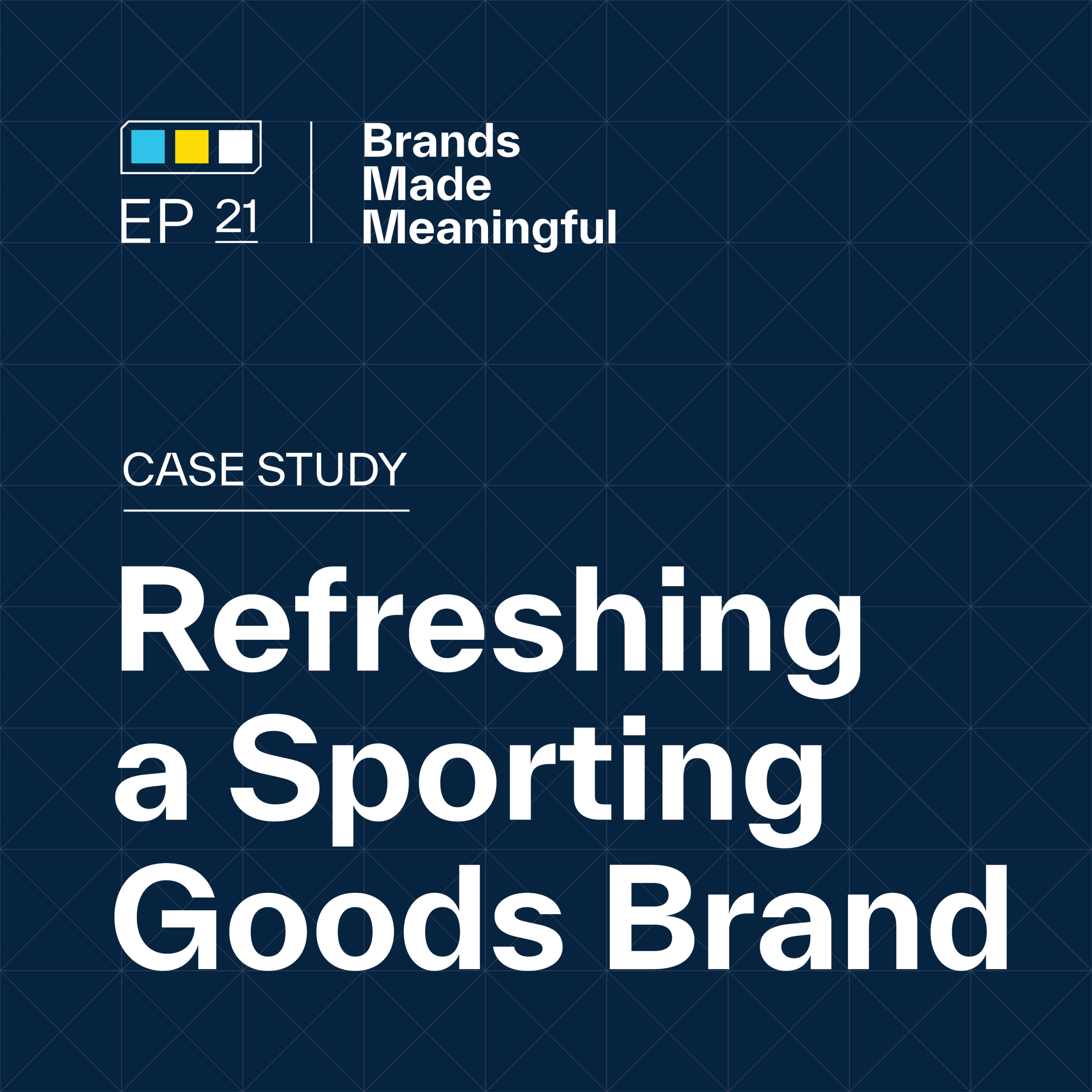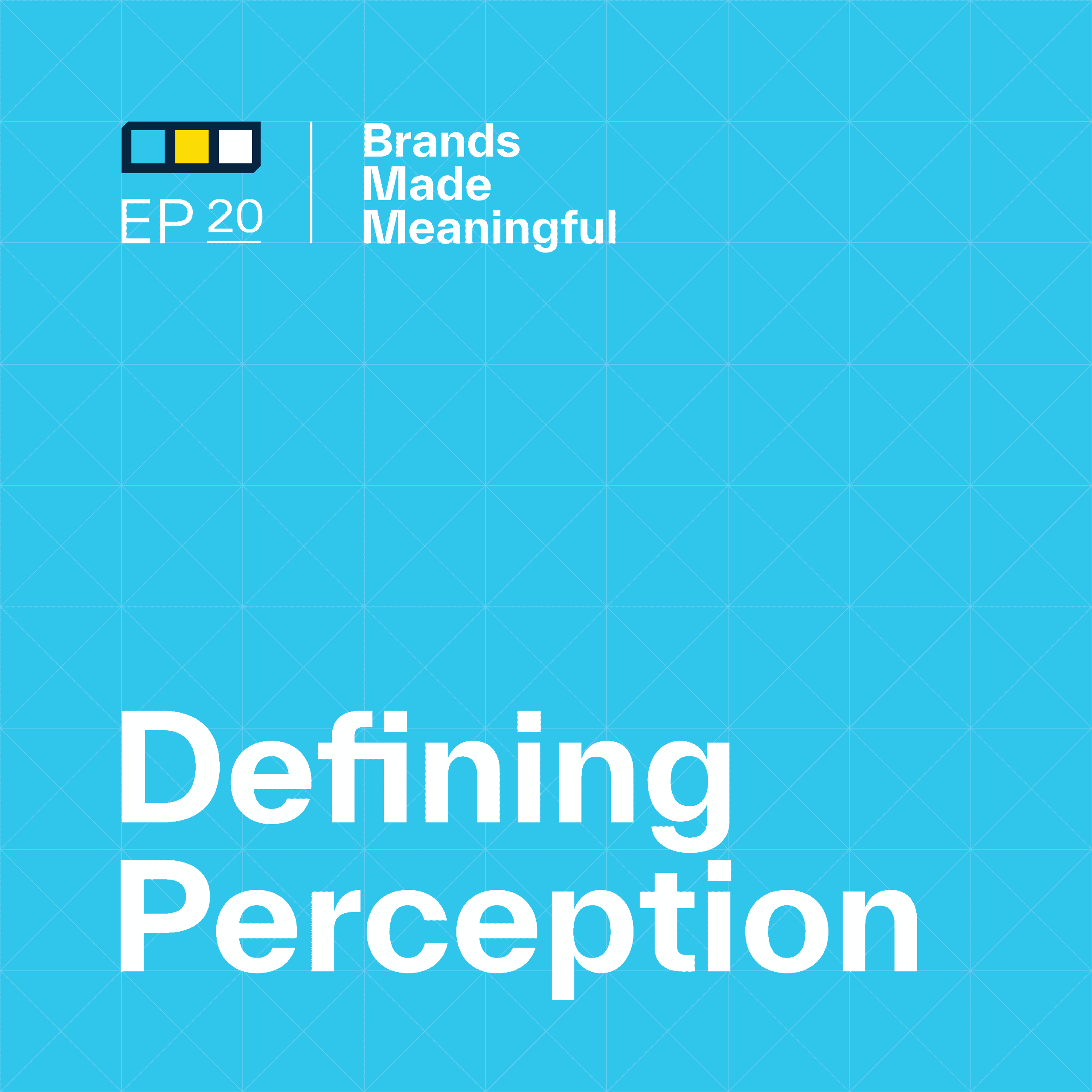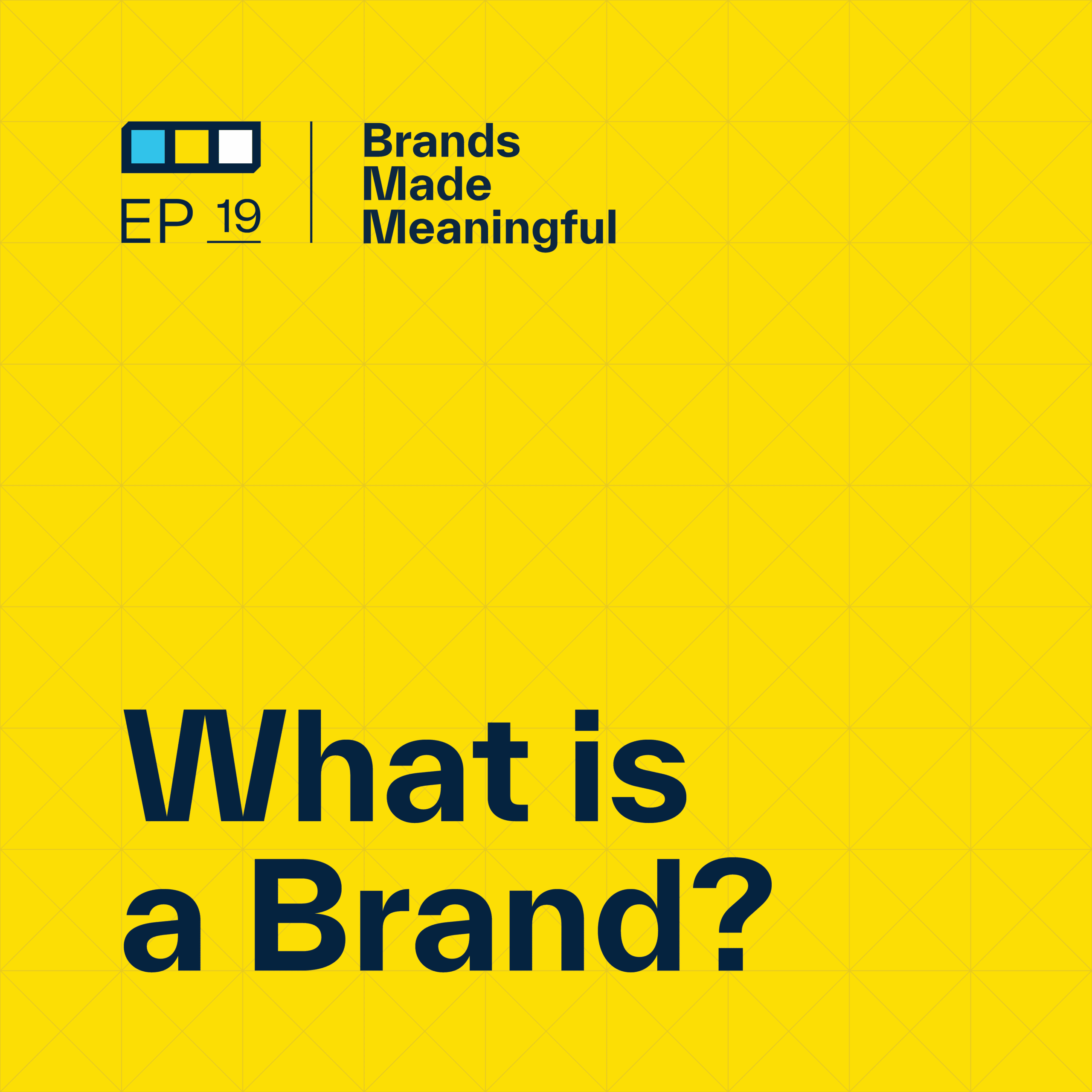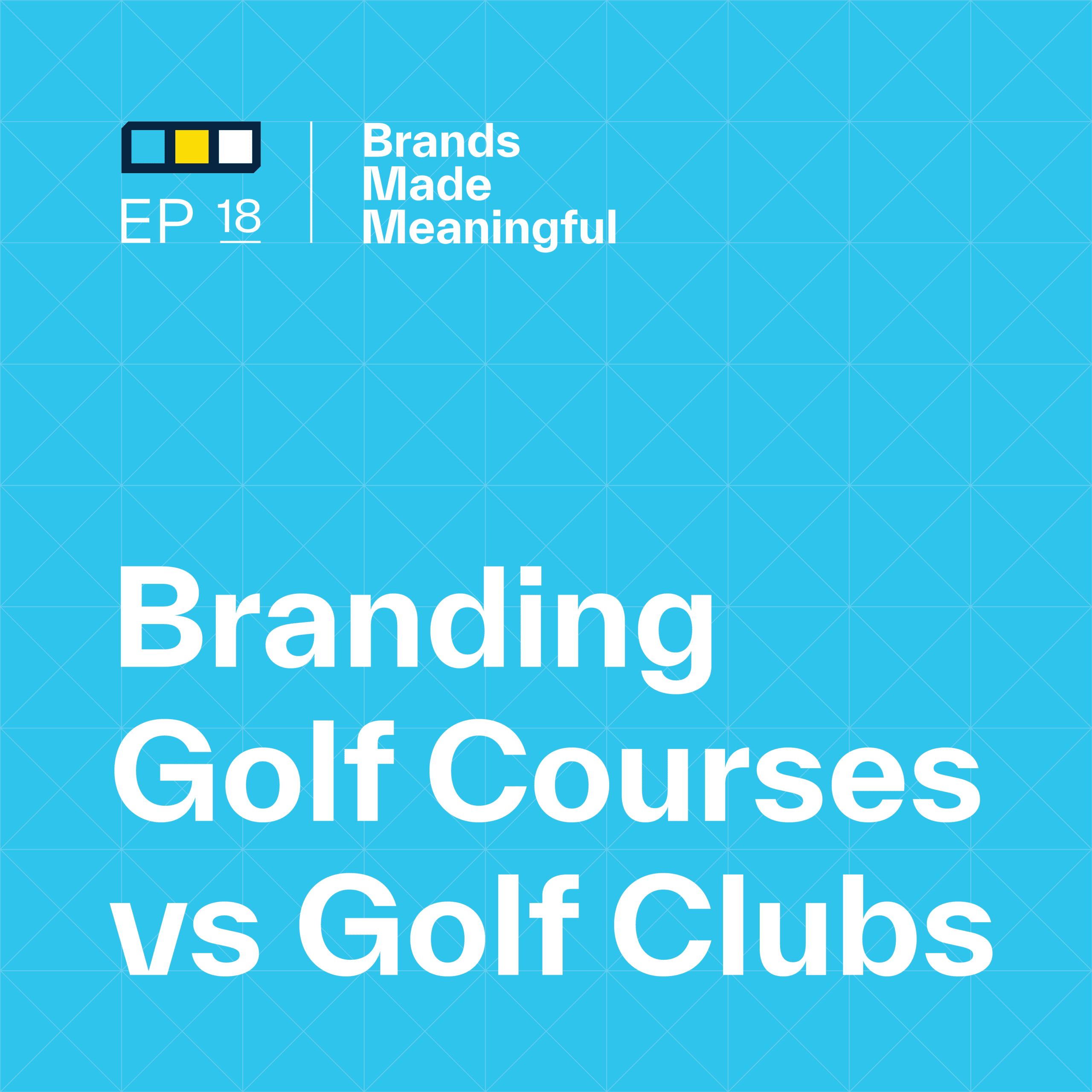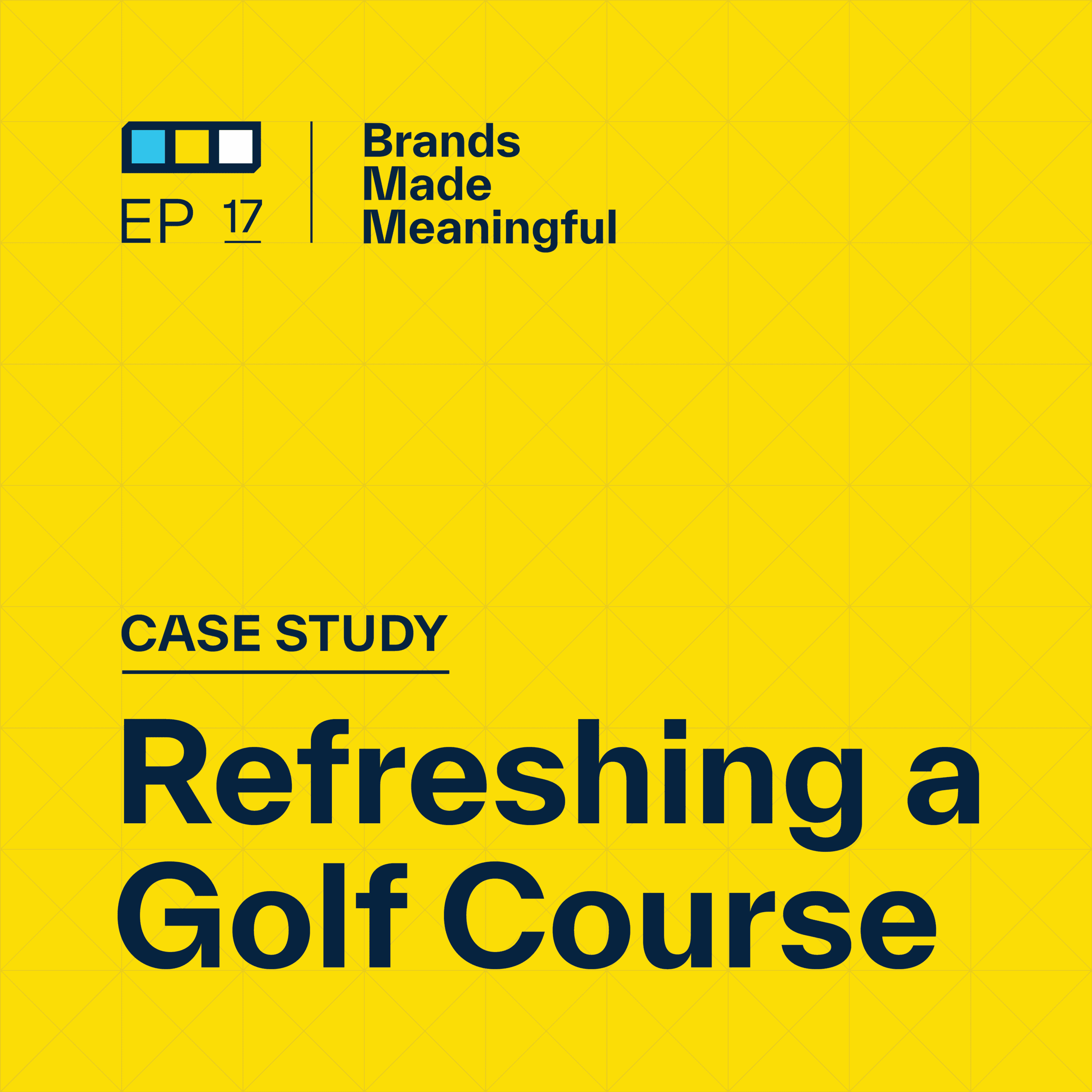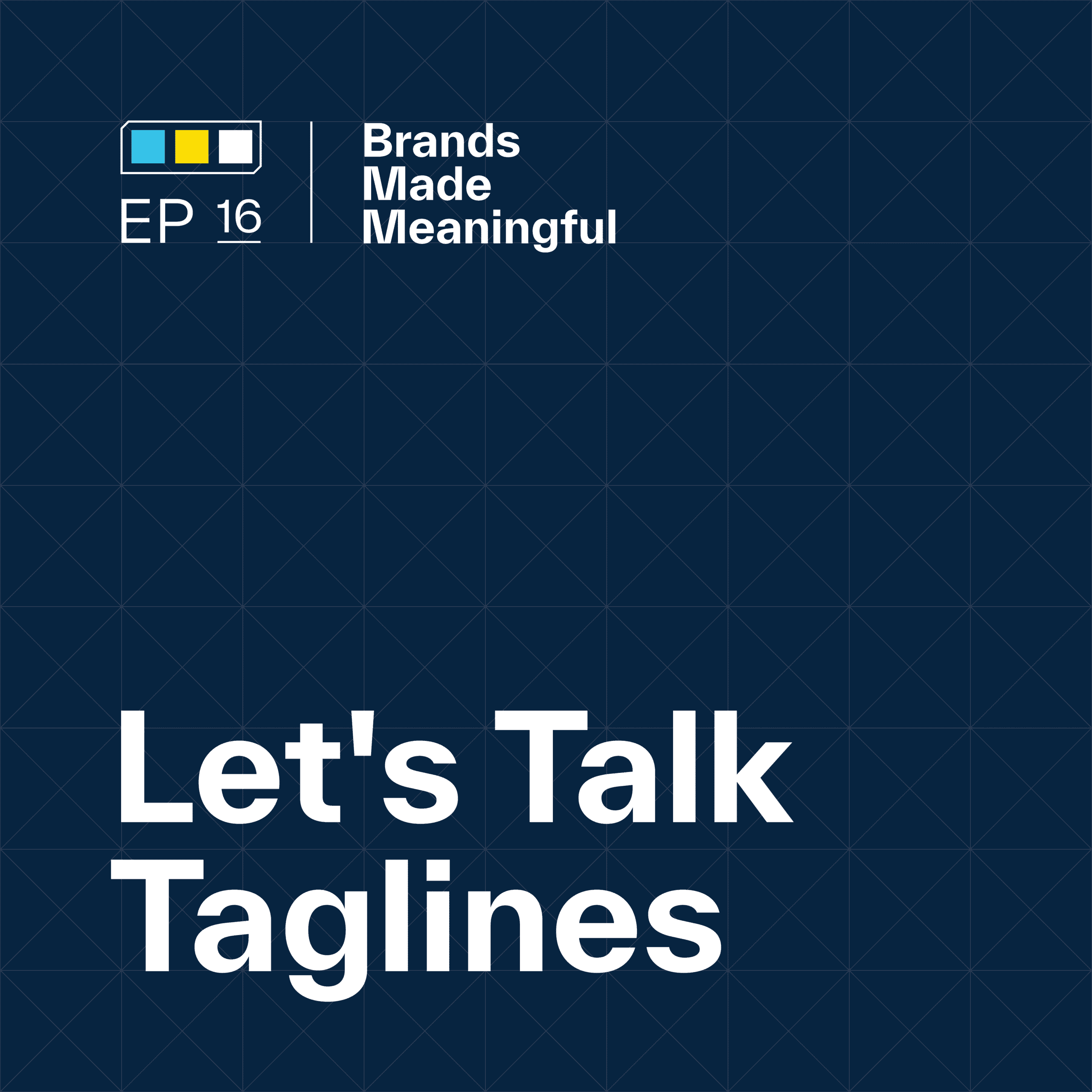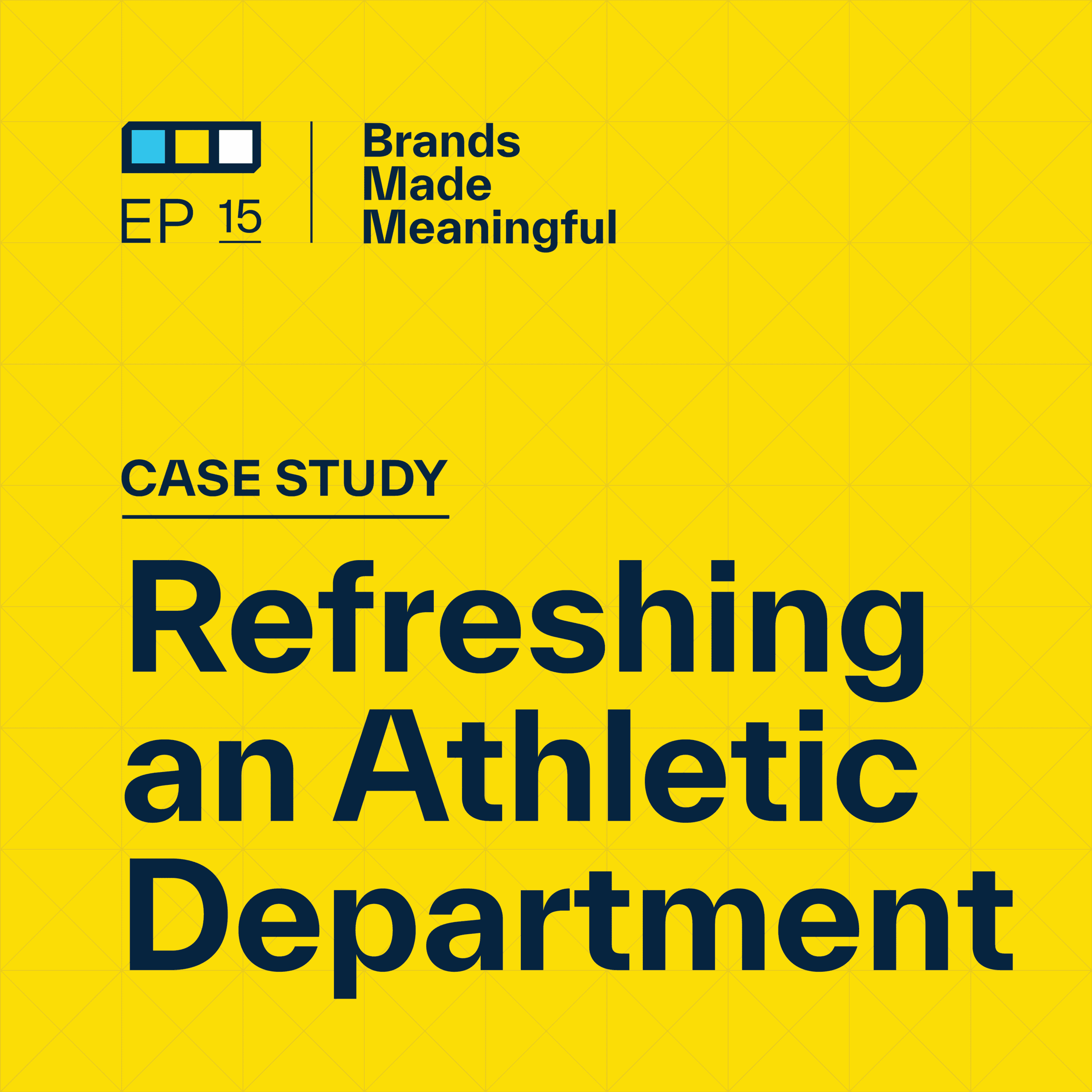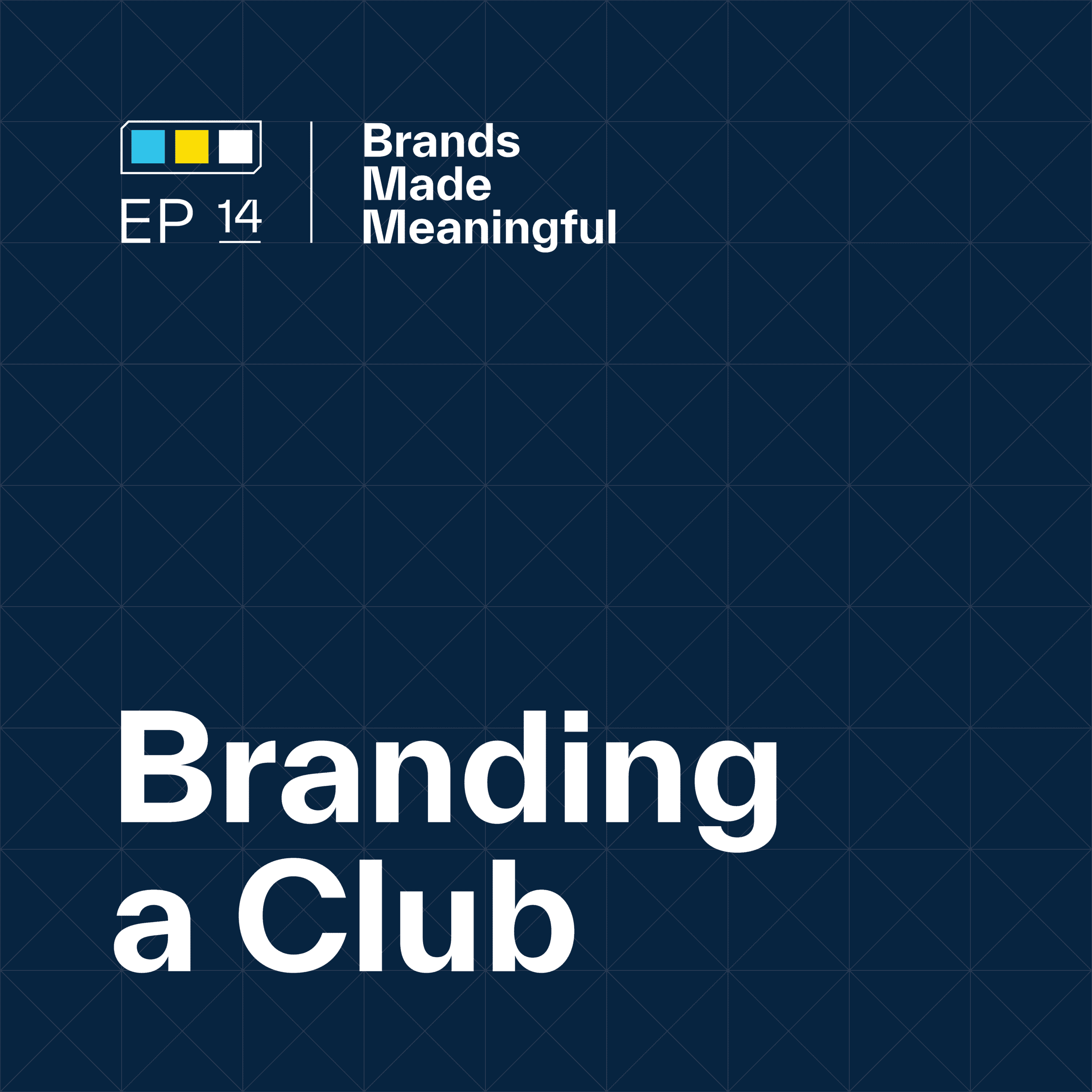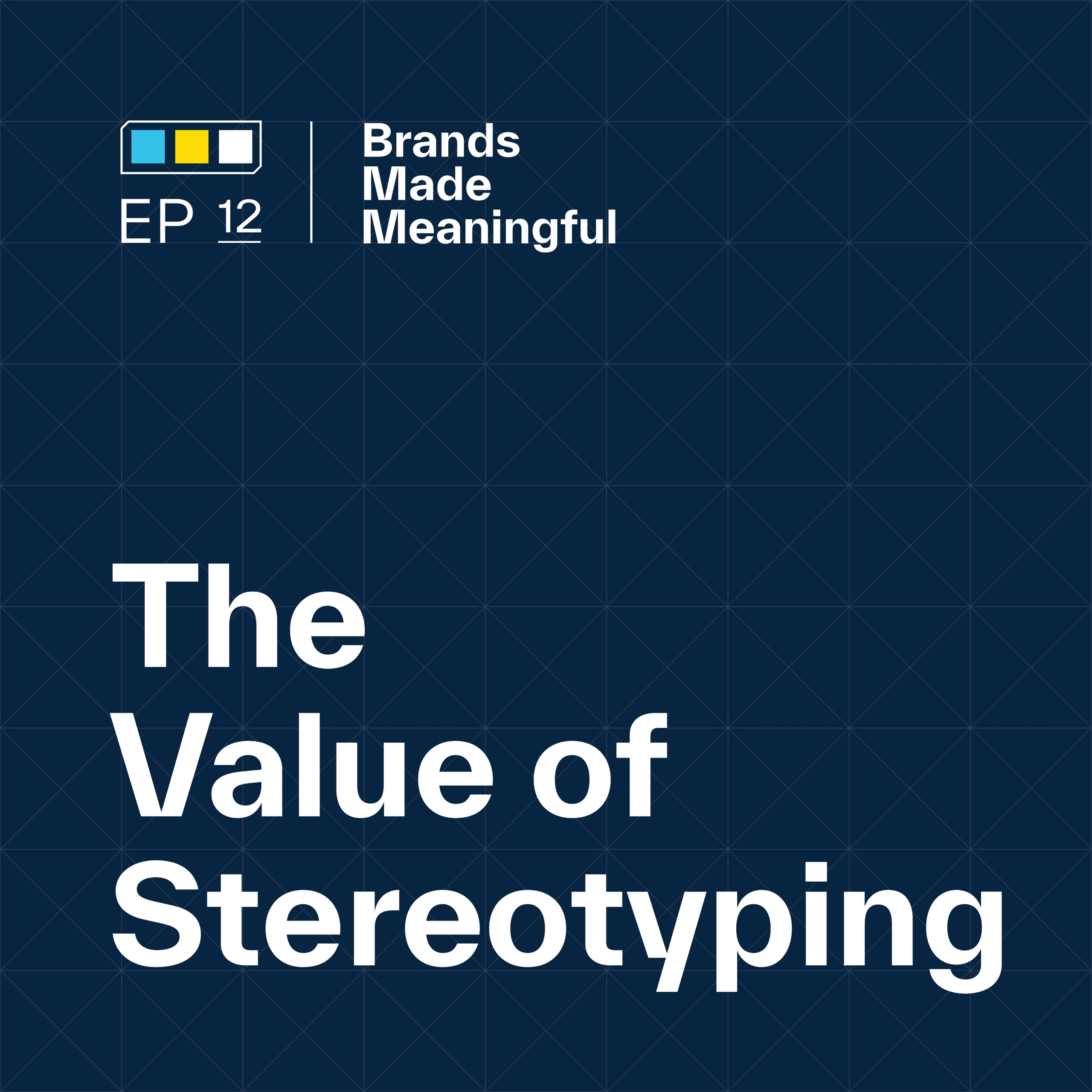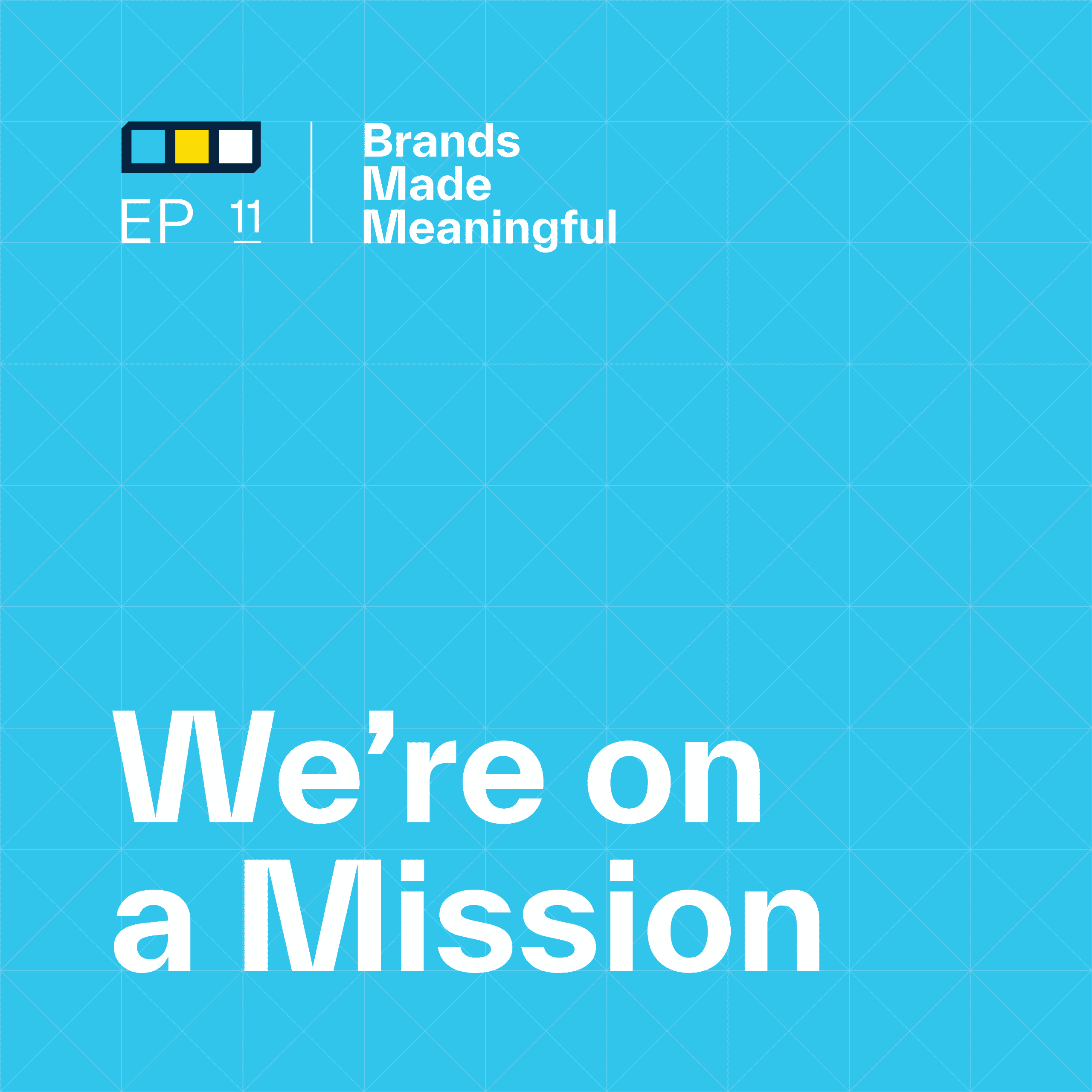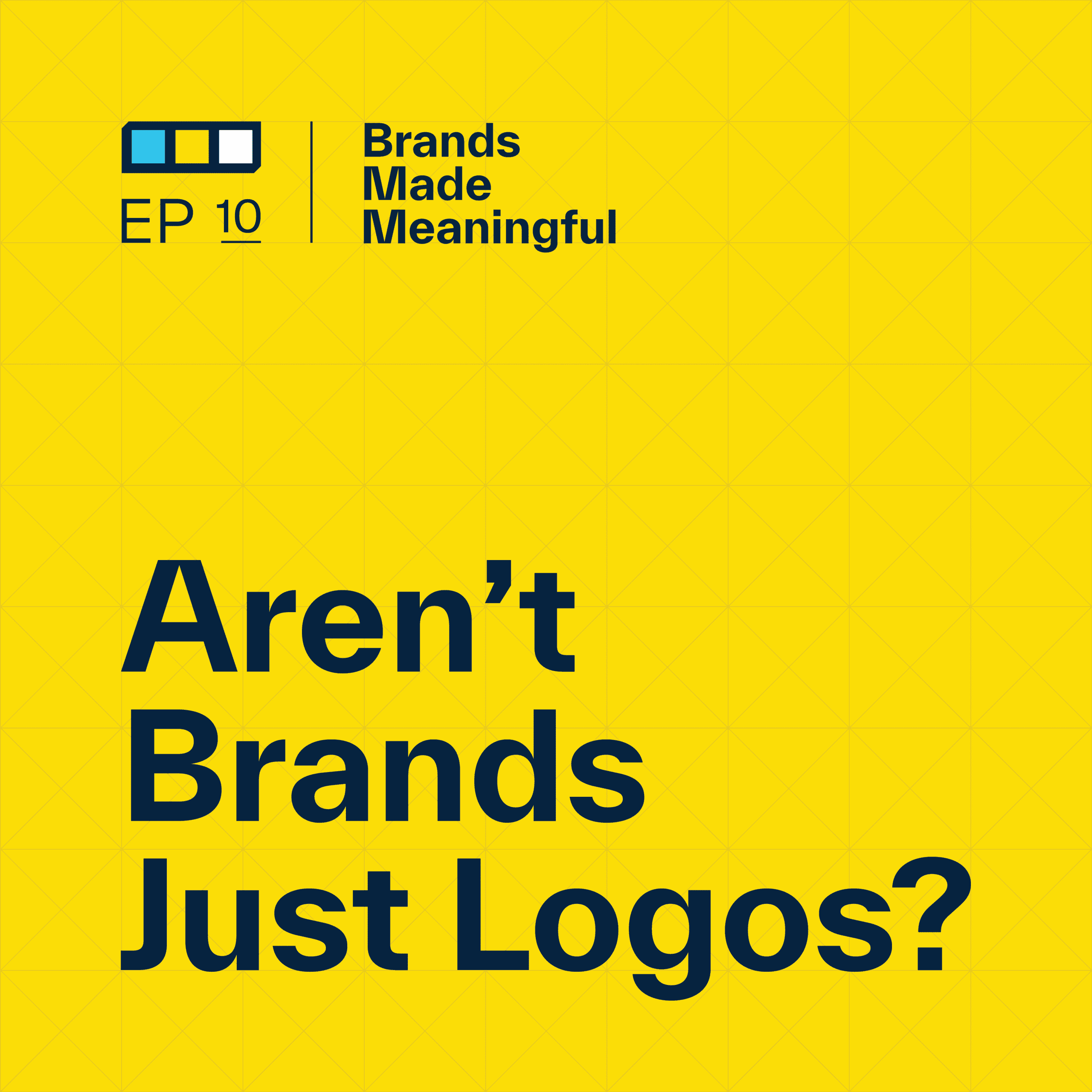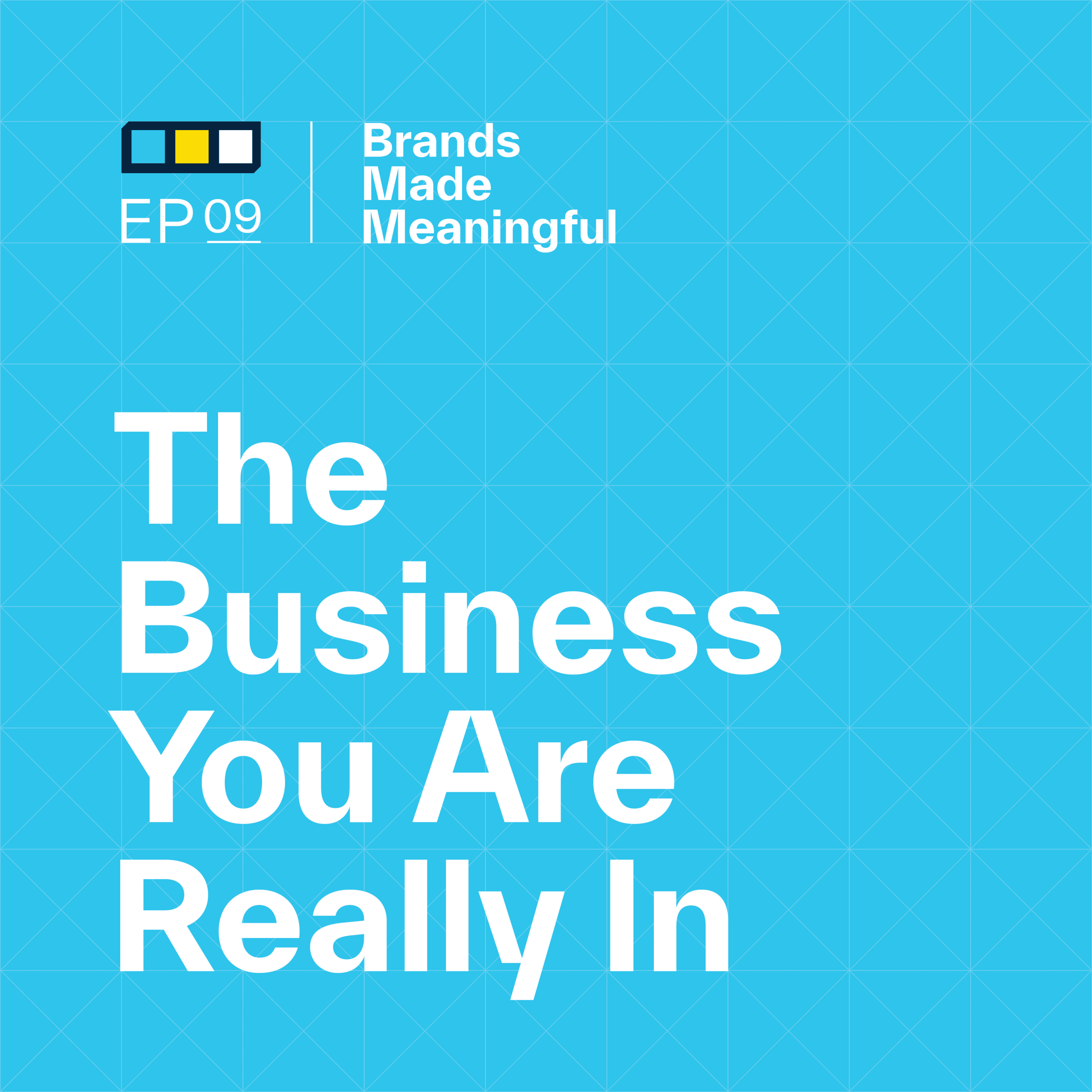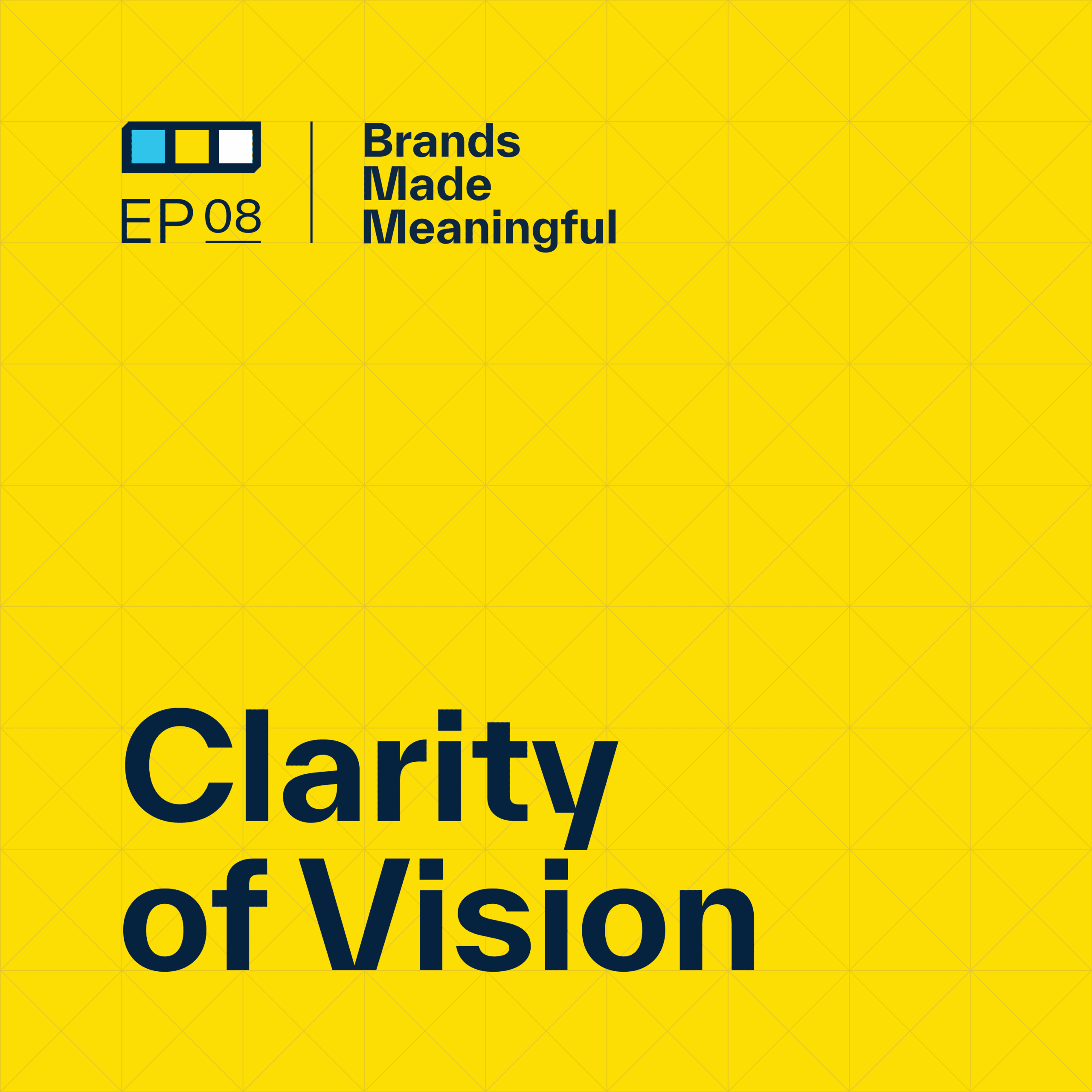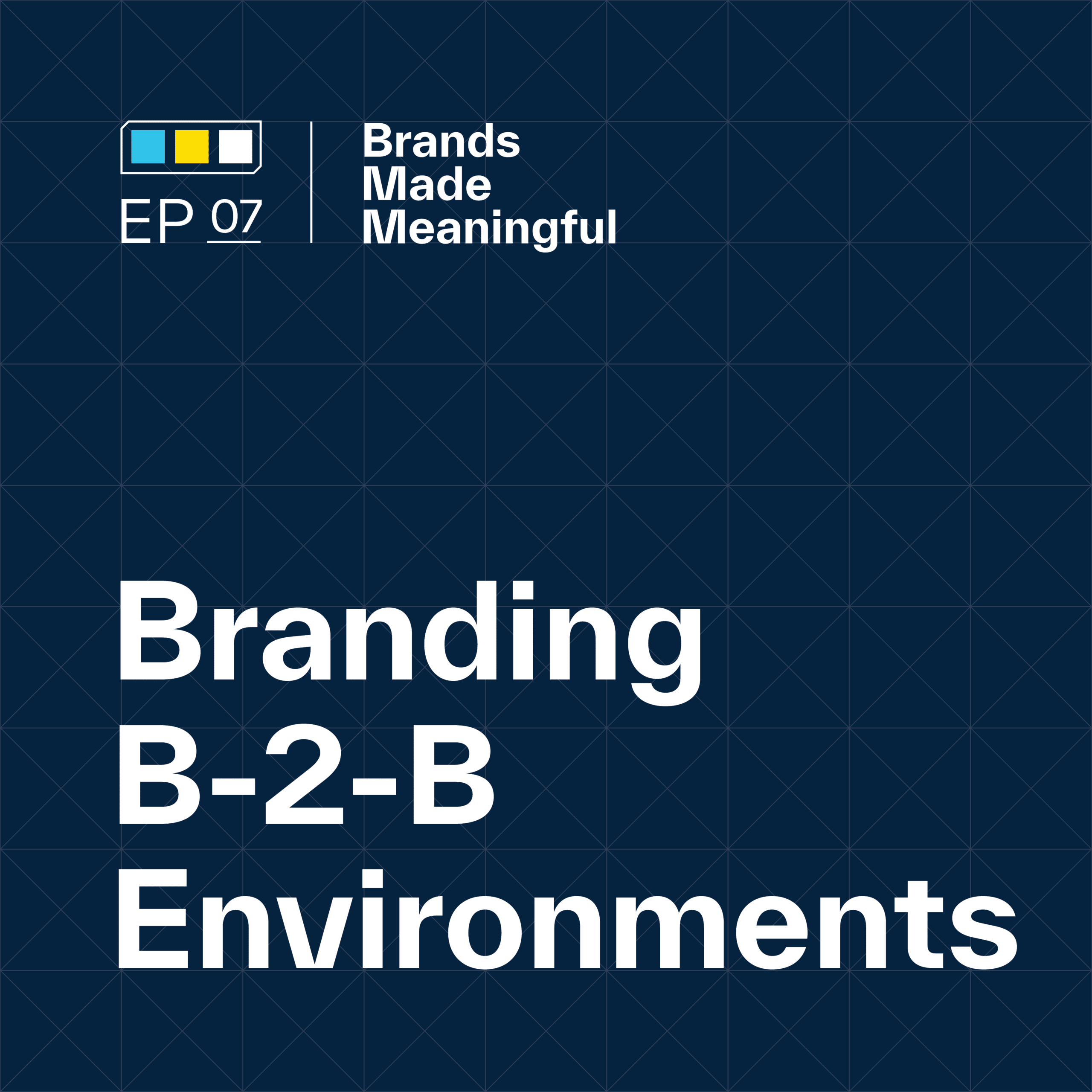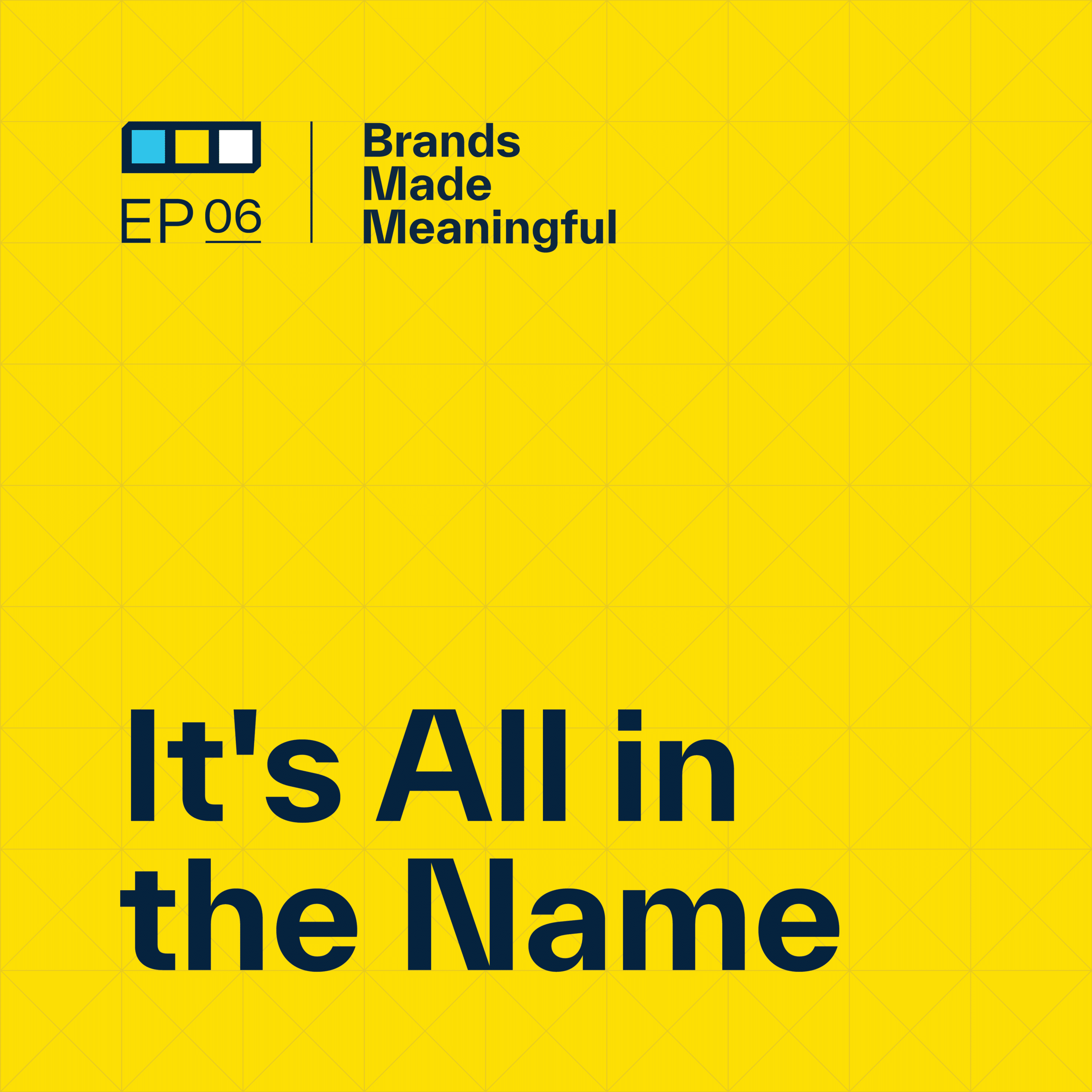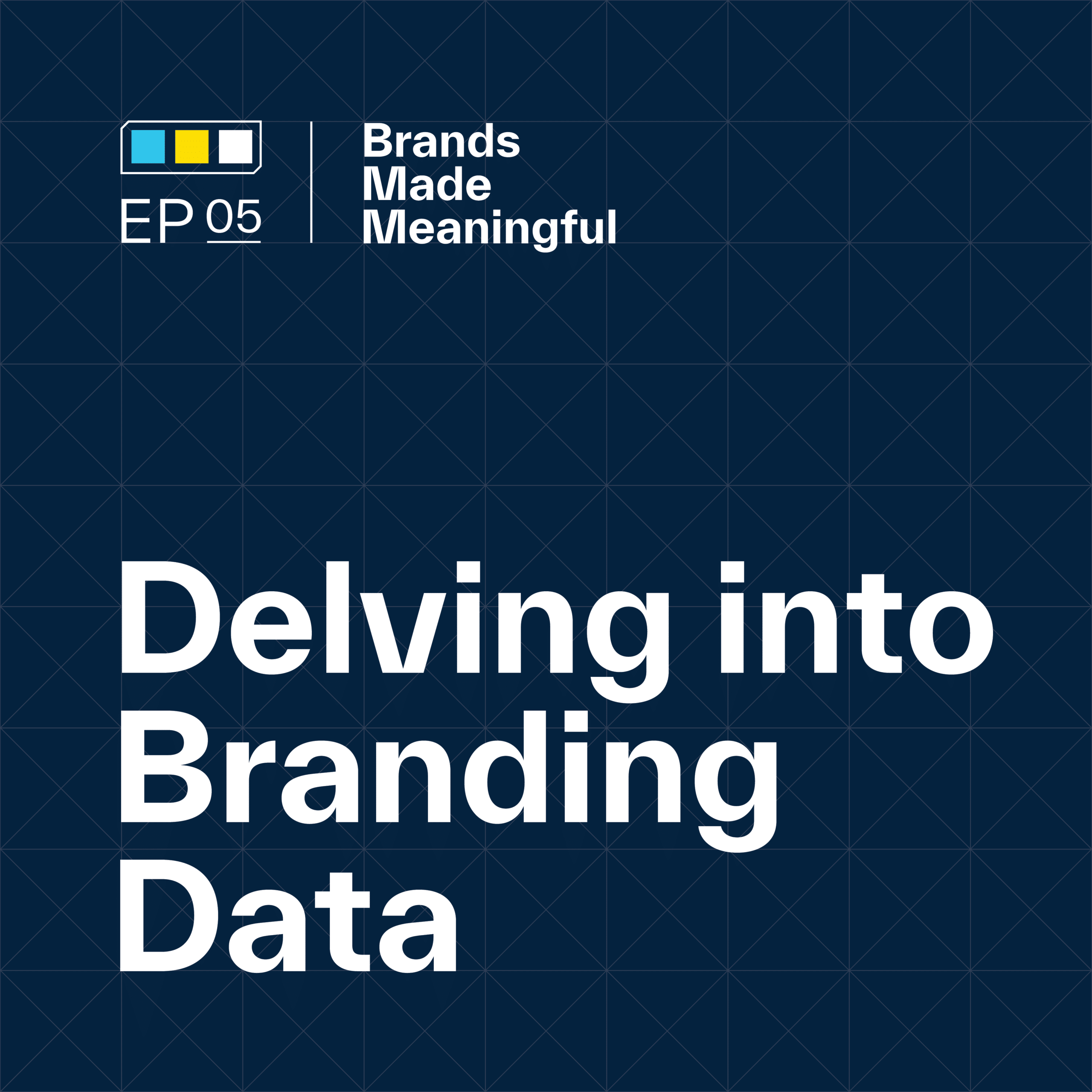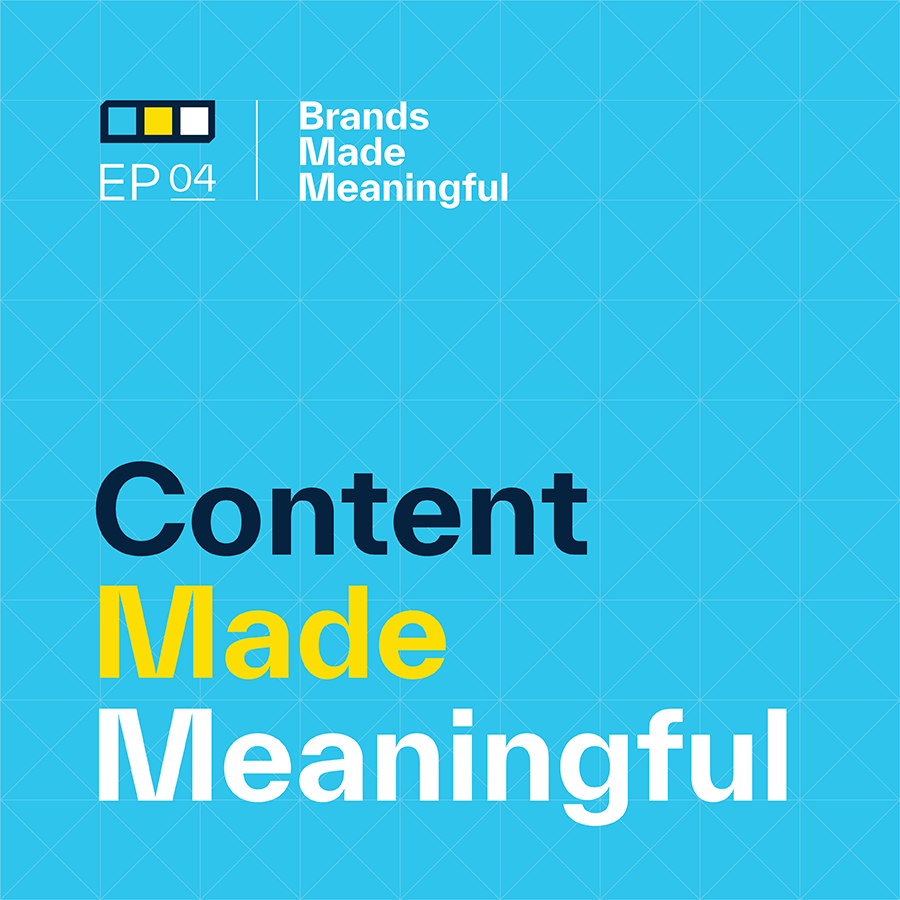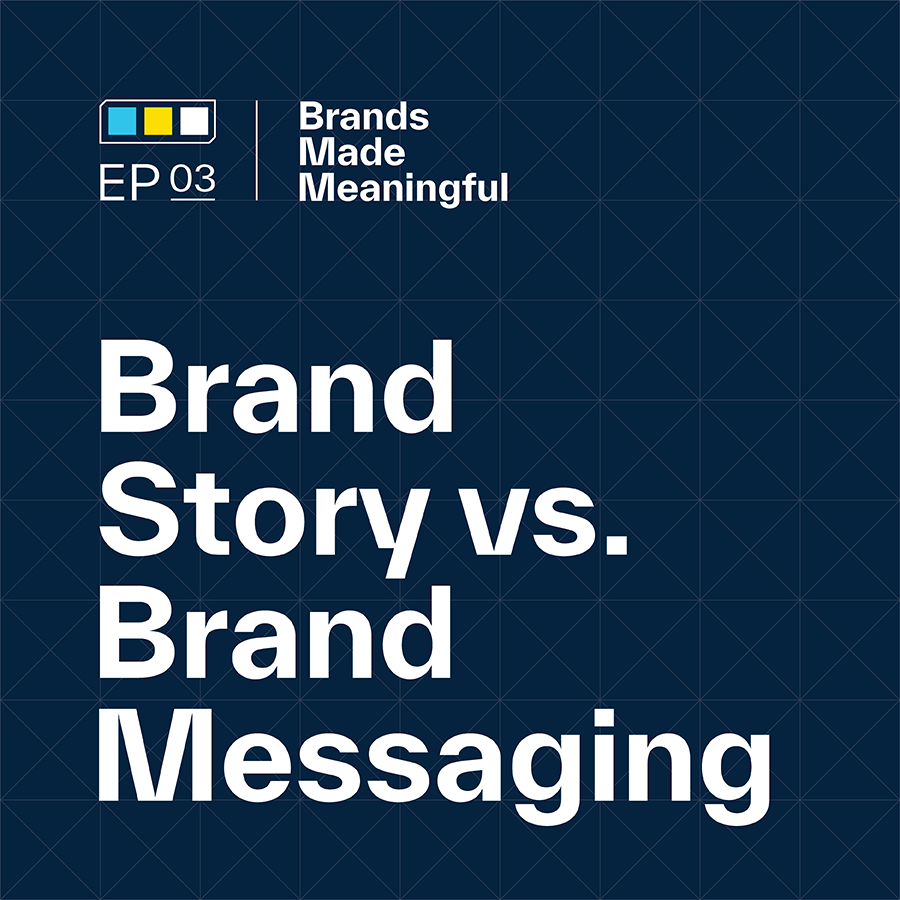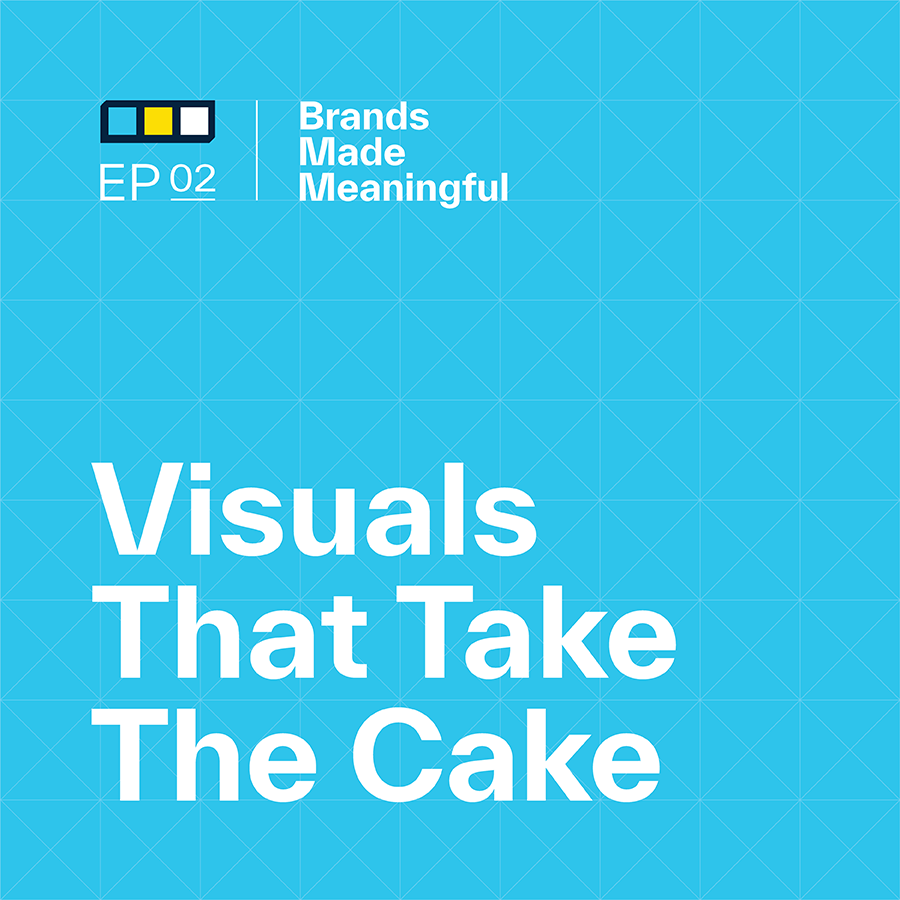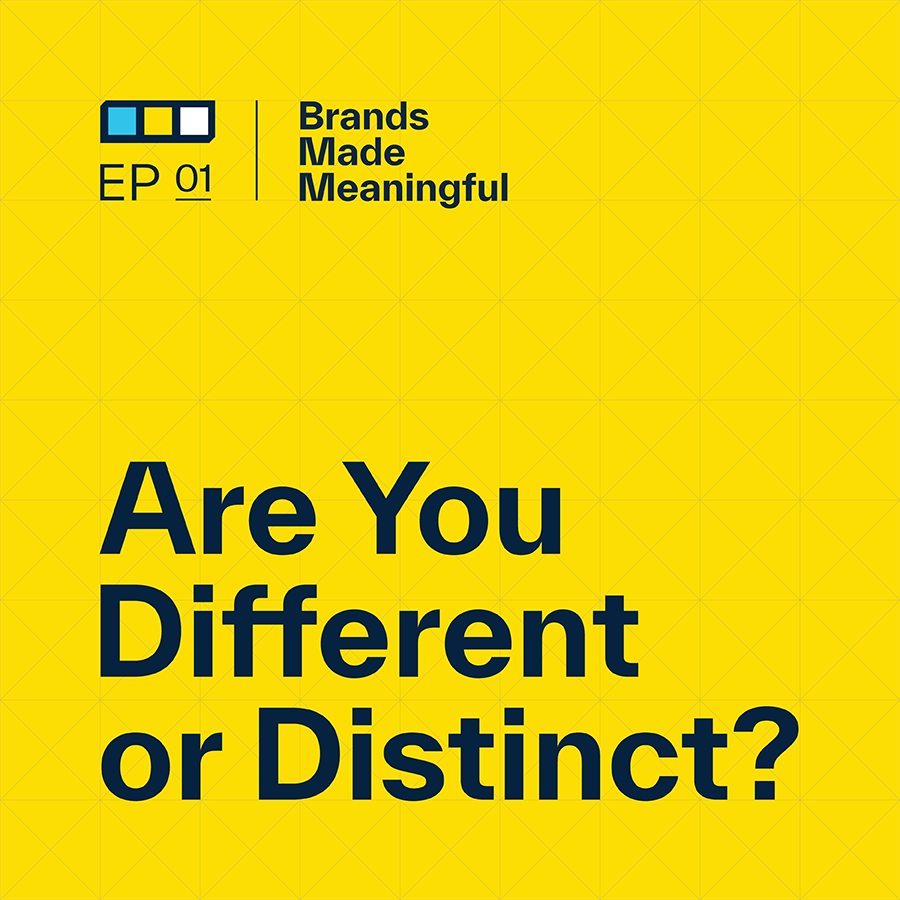EPISODE 34
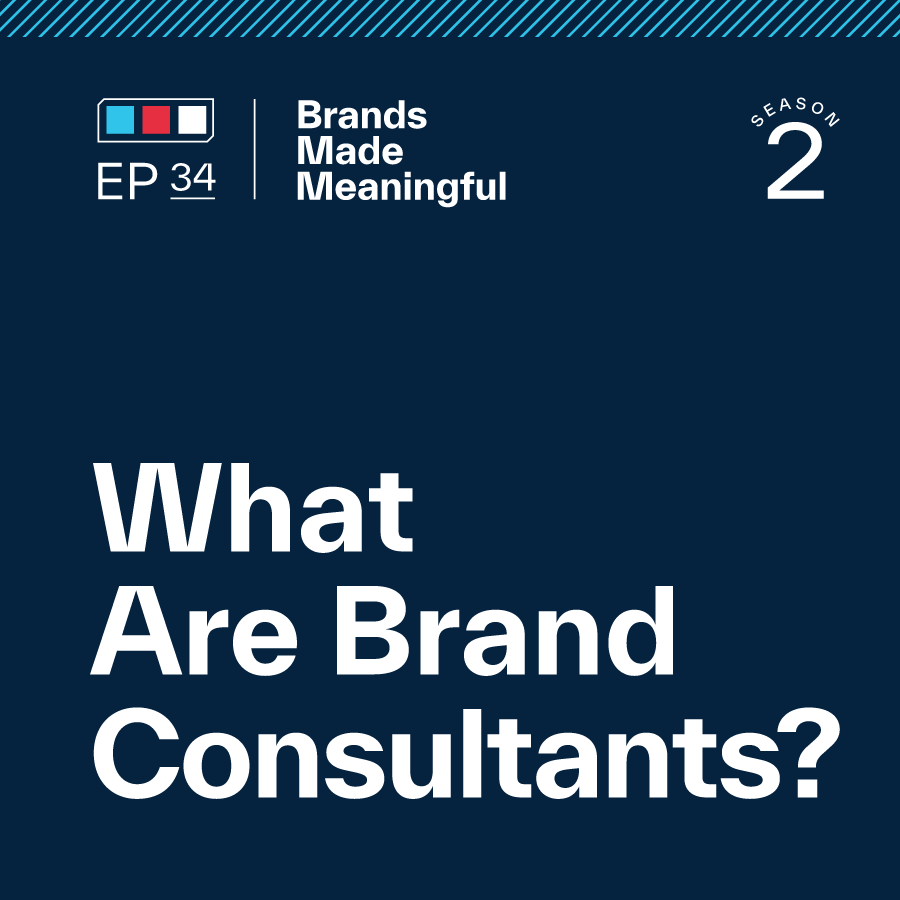
What Are Brand Consultants?
Episode 34
Derek and Tucker discuss the importance of hiring expertise with a wider breadth of knowledge than just visuals.
EPISODE TRANSCRIPTION
Today’s conversation is going to be a little weird, a little out of left field, a little organic.
Tucker I know most of our conversations might seem organic, but they are planned. Today, we’re going to talk about what it means to us to be brand consultants.
Expand Full Transcript
Tucker And this comes straight out of a conversation we had with a new business prospect last week. We were talking to them about capabilities and how this all works and what we do and how we help our clients. Basically, they came back and said, Oh, so you guys are like brand consultants. And we said, Yeah, that’s exactly what we are. Then we walked them through client work and how this all works. It’s a really cool conversation for us because it’s so natural and it gives people a really good sense of why people should call us in the first place. How do the people start engaging with us? What does it look like when we work with people? And normally it’s for the long term.
Derek I can’t remember if it was that person specifically or another recent conversation where one of the first things they said was, I don’t need a new logo, but I need some help. Can you guys still help me? Because I know you’re a branding firm.
Tucker It’s interesting. And I think that we almost stand up on the table when someone says, Logo. Yeah, you need a new logo. It’s super common. But it’s just one of the many, many pieces that we work with within a brand. One of the 35 different assets that we build for brands is a logo. So think about it in that sense. It’s not as big of a deal on something else. But when we’re looking at consulting with somebody, I kind of want to dive a little bit into that. Why do we do that? What is the purpose of that kind of engagement? But overall, people hire us to work on their brand. And that can be super vague and confusing. A brand can be a lot of different things. It could be an experience. It can be the way you look. It can be the way that you sound. It can be the story that you’re telling. It could be the way that your culture flows throughout your company. There’s a lot of different things, and so people come to us and they say, Okay, you work on brand. What do you mean? What do you do? And why is that even helpful for a lot of people? But brand can be critical for success. So when we’re looking at working on a brand, we definitely don’t just start with the visuals. That’s not at all where we start. We normally start with understanding who the organization is, where it is going, and then how it is showing up to audiences internally and externally. That’s kind of a foundational layer that we start looking at to really help people.
Derek I like the word consulting in this conversation. What it implies to me or helps us explain is basically taking 25 years of working with hundreds of organizations that have all had different challenges, problems, or opportunities that we helped them work through or witnessed or were part of with the work that we were doing. Earlier on in new conversations with people who need some help or who have self-identified that they have something that they would like to talk to us about, we can oftentimes differentiate between problems and symptoms and what has worked for other companies to solve similar issues that they’re running into with respect to their brand.
Tucker And sometimes just a pair of fresh eyes can really help someone gain clarity around something. We talk about it all the time. It’s like getting so close to a problem or challenge can make it really hard to see the big picture and understand how this fits into what we’re talking about on a broad scale. As we move forward, as we look within the industry, it just sort of it evolves quickly. It always has new technologies and new expectations and it’s very consumer-facing. Why does it all matter? Why do we do it? Why do we care about who we are, where we’re going, and how we show up? And it’s really in two capacities. There’s the short term where we say, We want To stay relevant and we want to stay competitive. That is super important. As we evolve, we have this risk that’s being put in front of us saying, If we don’t change to match consumer expectations, then we’re going to be left behind. We’re risking the competition winning, basically. And that’s a really scary landscape to be in if you’re not moving along with it. And then for the long term, there’s this idea of creating loyalty. It’s creating deep connections with people. And I think that they kind of run in tandem for us that we have to balance the short-term desires of being relevant with the long-term desires of being authentic. How do we be authentic and relevant to people, but also be surprising and able to build them up in a way that doesn’t feel trendy or some of those things? And I think that’s where we come into this – what’s the vision for the company? And how do we match that vision for consumer expectations and how do we balance all of those across?
Derek An old way of thinking was to run a bunch of ads, look cool, lean into marketing and push awareness as hard and as fast as possible, and then that would solve the short-term issues. But more and more, especially as we start seeing the next generations of consumers coming up with the projects that we’ve worked on and the research that we’re working on, we’re learning that more and more the next generations care more and deeper about what you are as an organization rather than if I want to buy from you. They want to be aligned and on board with even the sporting goods products that they buy. When they’re buying a knee brace, more often than not, maybe not so much the baby boomers, but at least Gen X, Gen Y, the Millennials, and Gen Z especially, what you stand for and having an alignment and knowing that their dollars not only are getting them really great products and a great brand experience but that they’re supporting an organization that they believe is doing good things or aligns with them is becoming really important.
Tucker I don’t want to dive into it too much right now. I think the second half of this conversation is just going to be client examples because it’s super helpful for people who are interested in what we do to just give them tangible examples of exactly what we worked on and who we did it for. But one thing that you’re talking about, generational differences, is exactly what came up with some of our work with the Minnesota Vikings. The differences in their fanbase, the generational expectations – you can literally see it ween off of football. It’s super interesting to say the older generation cares way more about football than the middle generation and the youngest generation. The youngest generation cares about watching football, and that’s great. But as a brand, they care less about what you’re doing on the field than what you’re doing off the field, which is super interesting to us. Maybe later in this conversation, we’ll get into it a little bit more. But before we dive into the type of work, I just want to define that a little bit. So like the type of work that we do – when we say if we work on projects, what we’re meaning are things like brand repositioning, merging brands together, whether it’s two or more. It’s helping young brands scale. Think of startup brands. How do they scale in this space? How do we turn something around to understand what’s working, and what’s not working with your brand today? How do we refresh it – maybe maintaining the logo and the name and some of those equities and being able to brighten it, energize it, and all those other things? What we’re really looking to do with our clients is not to shoehorn them into the projects that we are really wanting them to be when we take this approach. And that’s why I think people call us consultants on it. We definitely field questions like, What’s going on? Tell us what your business plan is. What do you want out of this? Where is your three, five, ten-year picture of the business? And that really guides our process and the way that we attack someone’s brand by saying what needs to be done to your brand to get you to that three-year mark and then what needs to be done to that brand to get you to that ten-year mark. In which ways can we help you grow this in your ideal setting?
Derek Oftentimes that initial conversation, like this meeting that you referenced that we had last week, at the end of that conversation, the realization was they didn’t have a logo problem. They didn’t have a visual problem at all. We have other clients that we work with where it is the opposite, where the guiding principles and the culture of their company is fantastic and all they need is a set of messaging tools to help them talk about it and explain it.
Tucker Or they need new visuals that just match that. So what I’m getting at is when we work with someone, they always assume that they’re hiring us to design something new for them, and that’s not always the case. And so what I would love to do in the next part of this conversation is just dive into some of those like, Who’s hired us and what did they hire us for and how did that go and where are we going from there? Because I think a lot of the clients we work with might hire us to do something with them once. But most of our clients end up being long-term clients. We build the relationships to have conversations about their brand over the course of years, not just necessarily months.
Derek Once we’ve had the opportunity to establish the relationship and the trust and by helping them, showing them, and proving to them that we have their best interests in mind, both for the short term and for the long term, then they’re able to come back to us and say, X amount of time later, I have a new problem now or I have a different opportunity. You know my brand really well. You know the differences between the symptoms that we’re realizing and the root problems that we need to address. How can you help us out with this piece?
Tucker Let’s get into Lifetime – Lifetime Fitness. Some people know it’s now just called Lifetime. But talk about how they initially engaged us. It’s a really interesting story. Lifetime is a large
Derek National, international
Tucker Facility. I mean, they’re just a workout facility and they call them athletic country clubs, basically.
Derek It’s a real lifestyle brand around health and healthy lifestyles.
Tucker How did they initially engage us?
Derek The first conversation with Lifetime – what they were interested in was an initiative that came from the team that oversees and basically runs their HR Department, their internal team. Lifetime’s external brand, the brand that is on the outside of the clubs, the brand that people wear if they buy gear, or if you go to their website, that’s not the brand that we worked on at all. What Lifetime was looking for from a recruitment, attracting, and retaining standpoint and a way to keep and bring staff to the Lifetime organization was a way to enhance the way that they recognized and celebrated the people that joined their team. So, essentially, some people call this an employment brand. Some people would call it an internal brand. But what they were looking for was a way – and I’m avoiding the word logo, I’m avoiding the word symbol – but they were looking for guidance on how they could differentiate the way that they talk to, market to, and celebrate their internal team members from the way that they market and advertise to their club members and external customers.
Tucker Thinking about a health club, how many people work there? It’s tens of thousands across the country. They have so many locations. I think it’s somewhere around 35,000 people that work there. They need a way to not only offer people great benefits and great pay. They need a way to be competitive in that landscape. When we say audiences, the reason why we say audiences and not customers is because of projects like this. Your brand is so much more than just the people that you sell to from a consumer standpoint. It is the people who work there. You are building a right to win with them every single day by giving them a great story to live by and to give them core values and to give them all those things. A big problem a lot of growing companies have is that they don’t maintain this competitive nature from an employment standpoint. This is something that an employment brand can help immensely. Think about all the ways that you’re trying to hire when you go to job fairs. What are you saying to them? We’ve done this with other clients too, and it’s been really good for them to understand the complexities of saying your external brand was built for your customers. If it was done right, it was built for your customers. Your internal brand needs to continue that story in a different way.
Derek I’m looking at some notes that I had taken ahead of time. I know we said this is going to be organic.
Tucker This is supposed to be organic.
Derek I did a tiny bit of homework. You brought up the Minnesota Vikings. Let’s talk about why they came to us. Because much like Lifetime, the solution for Lifetime wasn’t necessarily just graphics and visuals and printed materials.
Tucker Although Lifetime did have internal printed materials for internal design things. But with the Minnesota Vikings, it was similar but different. They were looking at how they are evolving for the next generation of Vikings. How are we evolving as we move forward? At this time it was we are going to get a new coach, we’re going to get a new GM. We’re not going to necessarily transition the company, or evolve it, from where it is today. They wanted help with, Where are we going? What are we doing?
Derek The actual start of our conversation was a VP of one of their internal departments coming to us and saying, We’ve been charged to set this year’s annual goals for our department. And she was wondering for her department, in addition to being profitable and doing her job well, was looking for the guidepost or the higher-level initiatives that the organization had set forth so that she knew what she was setting goals against. She said, Literally I could just set goals and that’s fine and they’ll be great goals. But if I understood what the mission of the company was, then I can set even stronger goals so that I can help make sure that my department is doing what it needs to do to help the organization reach that mission.
Tucker From an overall standpoint, they wanted all their goals to be more actionable, to say, We’re working on these things, we want to do them, that’s great. But to what end? At what point do we come out of this and say, This is where we’re going? I’m going to fast-forward here. So after all of that, it kind of turned into, What does that mean for our customers? What does that mean for our fans? How does this translate to, when I said this is really interesting getting to that next generation standpoint, what’s our story for everyone externally and what should we do? What should we say and how should we show up? Does that mean that we’re designing all that? No, because they have a fantastic creative team. But that is for us to help them understand. If this is who you are internally and this is where you want to go, then here’s how you need to start working towards that and giving the creative people within their company the inspiration and the guidepost to say, This is how you should keep moving for the next five or six years as this next generation of fans comes through. So there are almost no graphics in that conversation, but there’s this high-level strategy to understand where they are going and how they need to get there, and then helping the people on their team understand what the connection is based on their specific department underneath that. Another client that I think is really interesting to talk about is McDavid. I think that we’ve talked about McDavid a lot within this podcast because they’re just such a great example for a lot of the different customers that we work with. But talk a little bit about how McDavid initially engaged us, because that’s a weird story as well.
Derek The first engagement with McDavid, which we were brought in to help them with, was specifically to create a subbrand to McDavid’s parent brand that they were going to launch inside Walmart stores. They didn’t want the main McDavid brand to be the same brand in Walmart. Think of it like the Champion brand has a C9 brand that lives in Target that’s specific to Target. So we were brought in to design that logo, and color packaging and to figure out with them what were the similarities and differences from the master brand at that point.
Tucker After you did that, it didn’t end up actually working out that way because Walmart had different expectations.
Derek So separately, or alongside that, McDavid was getting some pressure from some of their retail partners about the overall esthetic of their brand, their packaging, and their marketing materials, and they were excited and anxious to see what the next evolution of McDavid was going to look like. The retailers were giving the data that was coming out of the stores that their target market was skewing younger and younger. McDavid’s brand, while successful, pretty much was 30 years old. It hadn’t really been updated or addressed esthetically for a long time, and they were losing out and missing out on attracting a younger audience of customers.
Tucker And so from that it ended up becoming this brand repositioning to say, Okay, we’re working on this subbrand. And that didn’t necessarily catch with retail partners. So what’s going to happen now is we’re going to reposition the entire brand to skew younger and have the same category but a different demographic.
Derek And to tell a different story.
Tucker And I think that’s a great project to talk through with a lot of people, that story element. But we’re not doing that today. We’re going to keep moving. The one that I think of as classic, a classic US kind of project that we’ve worked with a handful of times, is Lemon Bay – Lemon Bay Golf Club. And that’s a brand refresh. They love the name, they love all those other things. Same audience, same story, generally. But how do we re-energize the way we look and the way that we talk about ourselves? And it’s not necessarily to change what we’re saying, but just the way that we say it.
Derek Lemon Bay is currently renovating its golf course. They’re doing some really substantial work on replacing their irrigation system, updating grass, and working with a golf course architect to update and basically set up the course for the next generation. In golf, things like irrigation systems have a life span. Invasive trees had grown in. And so after years of talking about this and planning it, they are diving all in on renovating the club and the course itself. And out of that initiative they asked the question, does our current brand and our current story reflect what we are going to be once this course reopens next year? And they determined that they had a really great opportunity now to have a story that was looking forward in addition to only looking back. Their current story was only a history story. So they’re going to have basically a brand new golf course. And now they will have a brand new identity to help them.
Tucker To match that. But the leadership is still the same. The audience is still the same. Their offering is still the same. What really happened was they realized they have a great product, but their brand did not match that product at all. I love the story of Lemon Bay because of how it is just all so organic for them to say, Yeah, we’re just not who we know we are. We don’t look like we know we are inside. So there’s this balance.
Derek And as a consultative partner in this project, an initiative with them in addition to the creative that we did and that we designed, a large part of our role became change management.
Tucker Absolutely.
Derek For lack of a better word.
Tucker And we have a podcast about that. But change management is a huge part of this. When we were talking about the Vikings, to understand there are a lot of different people that have a lot of different ownership in that brand – an emotional investment. And say, How do we help them manage that change across things? And we do it with people like Lifetime to deal with all their different departments going, here’s how it’s changing, here’s what it matters to you and how can we help you understand and build this up so you feel ownership of it, is a huge part of this. And I think that change management is one of those things that when a brand doesn’t get executed properly – we can get into Game One, which is a great example.
Derek Game One is a good example of failed change management.
Tucker So they actually tried to do the previous regime – I don’t know what you would call it. Committee. They tried to rename and rebrand that company. What it is is it’s eight organizations coming into one to be able to be one organization under one name – build one kind of company.
Derek Merged and backed and funded by private equity. So for people who are listening and who are either working with private equity companies or for private equity companies, you can relate to that level of interest.
Tucker And what happened is they had a failed attempt of this – they tried to rename, they tried to do this, they just didn’t. And I don’t want to bash them or destroy any kind of pride. This type of work is so difficult with all the different people on board and all the different emotions and voices that need to be heard. And basically what happened is the first people that tried that ended up not doing their due diligence to understand the core reasons why or what the names should mean to people and why it matters. And they didn’t quite understand that merging organizations is almost more important for internal people than it is for external customers. The more we talked to people in that project, the more it became clear that when we had internal interviews with people who worked there, from the VP level all the way down to the manager level, to understand what that meant to you, it meant everything to that level. Whereas when we did interviews with customers, it almost meant nothing. They were, The name doesn’t mean a big deal to me. As long as I have my rep, as long as I have this, the name doesn’t mean anything to me. So what we ended up doing is renaming the company based on a lot of different voices. But we needed to sell the internal people on this. This name means so much to them. How do we move them forward?
Derek How do we get them included, get them on board, and help them understand the vision that was brought forth by the CEO and then help explain why that came to life in the way that it did to really help them rally and unify all 400 employees?
Tucker That’s a whole other conversation on its own. That’s probably worth an hour-long podcast about that project. It was a fantastic leadership group, a fantastic project to work with, and a lot of great people. But that was interesting because of their failed attempt and then there’s a little bit of scar tissue there within their key stakeholders to say, Well, I don’t know, should we be doing this? There’s this level of we’ve already tried this, why should we do it again? So I think that was a whole other conversation. We got five or six, maybe it was four or five months, into the project without doing any visuals at all because the visuals didn’t matter as much. What really mattered was the story we were telling and the name that we have that tells that story with us.
Derek And a name that tells the story and describes the culture and the vision that they had. They had to clarify to allow them to go forward, to allow the name and the logo and the visuals to actually be meaningful and not just cosmetic.
Tucker We have time to do one or two more of these examples. I don’t know if people care about these examples or not, but I’m just going to keep going.
Derek What we’re hoping is that people understand the variety of ways that their brand can help them, that go above and beyond just attacking the logo and the way that you look. As we lead into this next example, it’s interesting to me that with all the different types of organizations that we work with, for all the different confusions that they come to us with, sometimes it’s an opportunity and sometimes it’s a problem or a challenge to overcome. But there are a lot of commonalities. There are a lot of common threads. Part of my point for you listening to this is to realize that whatever that challenge that you have is, it’s not unique to you.
Tucker And it’s not insurmountable. It’s something that can be overcome. Every single person we deal with is like, I just don’t know. I don’t think you’re going to get it. It’s so complex. And it’s true that most of these things are complex, but they’re not something that we haven’t looked at before. It’s not something that we haven’t seen before. Before we dig into the last example here, I would say since we do work within sports, there’s this level of flash and trendiness that becomes difficult to ignore. There’s this level of, We should really just do this trend because it looks really cool and we should just do it. And there’s this balance of, Well, what’s trendy but what’s us? And how do we maintain the integrity of us? That goes a long way, especially within sports, to say you can still look athletic, you can still do all these things, and you can still look fresh in your own way. That’s a unique challenge that we’ve had in our industry in the way that we’ve worked with people in the past. It’s overcoming the idea of, Well, these people look like this, how do we look like them? And that’s not the point. The last example is a company shout-out to a local company because we’re in Minneapolis, Snipers Edge. They work with hockey products. Talk a little bit about how they started engaging us and the challenge that they’re facing.
Derek Snipers Edge approached us in a relatively typical way. Basically, it started with a new owner who bought a company. A gentleman who worked in private equity was looking at a company to fund and realized that with his own alignment and interest in hockey and hockey training products, he saw an opportunity for a company that was founded on a great story and had some really great flagship products, but had an opportunity to grow and expand within the industry. In a really short time, he started to run into the confusion of jumping to how do I market my company and how do I grow brand awareness but then taking a step back and realizing that the product line and sub-brands of products that they carry are starting to cause confusion in what’s a Snipers Edge product versus what is this other brand of product that you carry? And they all fall underneath hockey or they all fall underneath training. And that story is getting harder and harder to tell because of the way that they’re growing and with the products that they’re bringing in, it’s just making it more confusing for them to understand what’s the next path and step for them.
Tucker We’re fresh in this project with them. We’re working with them right now. Their team is great. When you sit down and talk to them, you can feel their passion for the sport. When we work with all of these different organizations and we sit down for those first couple of meetings and we start talking to someone, and maybe it’s just me, I have a really clear picture if they truly mean it or not with what they say. And this team is like that absolutely 100%. They’re hockey players. They are people who care about other people playing hockey. They have such a great story to tell and they have such a great ability to build products that actually help people in their space. Their challenge is to understand how they want to tell that story. How are we going to do it in a way that is clear and effective and really passionate in the ways that we’re passionate about? And I think that this resonates with other clients we’ve had that are really passionate within their own field and they go, I’m building these products. I’m building these services. I want to make sure I’m doing it to the best of my ability and how do I do that? And this is the absolute most common way. We find the clients that we love working with are the people who are super enthusiastic about not only their products but about their customers. And the understanding that they have great products and now they need to tell a great story that supports those products is what their challenge is. And I think that it’s not uncommon.
Derek People that are looking to expand to scale oftentimes run into this jumbled confusion of what we might call brand architecture or product architecture or even just clarity on offerings and services or clarity on features and benefits and what to lead with. It’s very common, and I’m excited to see where these guys go.
Tucker And then not only what we offer and how we do it, but what does that mean for future products and what does that mean for the way that we want to market ourselves moving forward? There are a lot of questions, and I think that the most exciting part about this for them is that they have so much opportunity in front of them. There’s so much potential with what they’re doing, how do they move it forward in a way that not only helps them grow but makes the impact that they are trying to make? So we went through, what do you think, like six or seven examples there? If people are interested in this, let us know. We don’t normally dive into client examples like this because we just don’t know how relevant it is to you. But if it’s interesting, let us know. What do you want to send people away with?
Derek Well, first of all, you just shouted it out with the prior podcast conversation around change management. That would absolutely be worth going back and checking out. I think the reasons and the complexities that ultimately people come to us that they face, you can take some solace that no matter how frustrating it is for you at the time with where you are, and you’re waist deep in it, they’re oftentimes having that external set of eyes, that consultative way of thinking about what you are running into to help guide you through that, is something that you should consider because it can be really helpful to your organization and your goals to make sure that you’re actually leveraging your brand to help you as much as possible.
Tucker I would say that when we work with our clients, the first step is always an in-depth conversation and we almost always do that for free because I think that our goal is to not waste your time and not waste our time within an engagement. But there’s a lot that people can take from that kind of conversation to say, Maybe I do have a problem, maybe I don’t have a problem. And there’s been plenty of times where we’ve sat down with a new business prospect and it goes, You know what, everything you have is fantastic. You know where you’re going, you know what you’re doing, you don’t need us. We are happy to help if you need it, but we don’t think that you need us. And that’s not uncommon either to say we are more than happy to admit when our services are not needed. And it actually makes us happy. Because guess what? Now we don’t have to change something for the sake of changing something. But what I will say is that a brand, if it’s left untouched over time, it can get old and tired and irrelevant to the people that it was meant to serve. So if it isn’t relevant to the people it is meant to serve, then now is a great time to have that conversation.
Derek And that’s how we start. It starts with the conversation and the conversation is about you, about what you were trying to do, the things you’re running into, what’s getting in the way, and our initial thoughts on what might help.
Tucker Believe it or not, Derek, I hate talking about ourselves.
Derek Ironic, isn’t it?
Tucker All right. Until next time.
Derek Thanks. Talk to you soon. Sussner is a branding firm specializing in helping companies make a meaningful mark, guiding marketing leaders who are working to make their brand communicate better, stand out and engage audiences to grow their business. For more on Sussner, visit Sussner.com.
More Episodes Like This
Taking Care of the People Who Take Care of PeopleEpisode 90
Derek and Tucker are joined by Craig Pratt, co-founder and board chair of the nonprofit organization Holes Fore Hope.
Reviving New Member InterestEpisode 89
Derek and Tucker explore options for generating interest among prospective members and inspiring them to join your club.
Brand Through the Eyes of a Club Manager & Consultant with Chris CoulterEpisode 88
Chris Coulter, Vice President of Club Consulting with the McMahon Group, joins Derek and Tucker to discuss the intersection of branding and consulting in private clubs.
Evolving Member ExpectationsEpisode 87
Derek and Tucker dive into the differences between generational club members, their wants and needs, and how to balance out expectations across the board.
Winning the Talent Game with Tom WallaceEpisode 86
Tom Wallace of Kopplin, Kuebler, & Wallace joins Derek and Tucker to discuss the importance of a club’s brand in hiring and retaining right-fit employees.
Reclaiming Reputation Through Brand RevitalizationEpisode 85
Derek and Tucker discuss the potential that a branding initiative can have to restore a club’s reputation.
Branding The Club with Don KovacovichEpisode 84
Don Kovacovich, GM of The Club at Golden Valley, joins Derek & Tucker to discuss the impact that rebranding has had on his club and the opportunity it presents for other clubs
Changing a Club’s Membership ModelEpisode 83
Derek and Tucker discuss key considerations and challenges when changing your club’s membership model.
Connecting a Club with its Story with Jackie CarpenterEpisode 82
Derek and Tucker are joined today by Jackie Carpenter, author of People First.
Branding a Club AnniversaryEpisode 81
Derek and Tucker discuss the unique opportunity presented by milestone and anniversary dates for private clubs.
Private Club Storytelling with Ricky L. Potts, Jr., CCMEpisode 80
Derek and Tucker have the pleasure to speak with Ricky L. Potts Jr. about how powerful storytelling can be for your club members.
Opportunity in Club Facility RenovationEpisode 79
Derek and Tucker discuss pivotal key moments in your legacy and how to transform your story through renovation.
The Evolution of Club Members with Jon LastEpisode 78
Derek and Tucker are joined by Jon Last from Sports & Leisure Research Group to discuss the evolution of club members.
Member Branding vs. Product BrandingEpisode 77
Derek and Tucker discuss the challenges their client's have moved through when approaching differing styles of branding.
The Role of a Private Club's LogoEpisode 76
Derek and Tucker take a look back on private club logos they've designed over the years and explain the strategic reasons behind their choices.
Club Brand GovernanceEpisode 75
Derek and Tucker divulge the steps to evolving your brand while retaining your core values.
Seasonal Member MerchandiseEpisode 74
Derek and Tucker take a look at crafting specific merch to celebrate landmarks and special times of the year.
Who is Sussner?Episode 73
Derek and Tucker take a break from talking shop to talk about who they are and what they stand for.
Club Identities Beyond AmenitiesEpisode 72
Derek and Tucker discuss what it takes to stand out in unique ways for your club.
Little Things Mean EverythingEpisode 71
Derek and Tucker take a look at the often missed and easy to overlook.
Build Flexible Brand SystemsEpisode 70
Derek and Tucker break down the building blocks for long lasting branding.
The Club at Golden ValleyEpisode 69
Derek and Tucker take a close look at one of their recent rebrands.
When to Launch a Club RebrandEpisode 68
Derek and Tucker break down how to find the perfect timing when launching a club rebrand.
Steps to Launching a Club RebrandEpisode 67
Derek and Tucker break down the steps to take and the reasons why you should consider a club rebranding.
Brand Marketing vs. Brand DesignEpisode 66
Derek and Tucker define the line between marketing and design and how they intersect to inform one another.
Building Brand GuidelinesEpisode 65
Derek and Tucker show us how to build infrastructure guidelines to unify your brand experience across the board.
Club Identity SystemsEpisode 64
Derek and Tucker cover what Identity Systems entail and how to discern between internal and external methodologies.
Navigating Branding With a BoardEpisode 63
Derek and Tucker bring clarity to uniting your company under one cohesive vision.
Putting a Committee TogetherEpisode 62
Derek and Tucker assemble your need-to-know facts when putting together your committee.
The Guiding Principles of Private ClubsEpisode 61
Derek and Tucker go over the top ways private clubs can find the balance between pleasing old members while attracting new ones, all while making moves towards the future.
How Color Affects PerceptionEpisode 60
Derek and Tucker cover how to best convey your business with color.
Brand EcosystemsEpisode 59
Derek and Tucker break down how to craft effortless experiences when considering your brand as a whole.
6 Types of Brand TransformationEpisode 58
Derek and Tucker dive into 6 distinct types of transformations for a wide range of brands.
Tournament Branding For ClubsEpisode 57
Derek and Tucker discuss designing and delighting your club members with tailored events.
Brand Promoters & DetractorsEpisode 56
Derek and Tucker discuss how high level promoters increase your NPS and how to turn the tides on your detractors.
The Loudest Voices in the RoomEpisode 55
Derek and Tucker talk about gathering feedback while prioritizing every voice.
Determining A Primary AudienceEpisode 54
Derek and Tucker discuss if and when you should be honing in on your audience vs. casting as wide a net as possible.
Branding For ExclusivityEpisode 53
Derek and Tucker discuss the intricate process of naming your brand.
Measuring Brand SuccessEpisode 52
Derek and Tucker discuss how we measure our success in branding and a few key KPIs that help us understand our impact.
Branding For ExclusivityEpisode 51
Derek and Tucker breakdown how brands can create the perception that they are exclusive and only for a certain type of consumer.
What Makes A Brand SurprisingEpisode 50
Derek and Tucker break down the Sussner formula that we believe leads to a surprising brand.
Breathe Life Into Brand TraditionEpisode 49
Derek and Tucker discuss the intricacies and common pitfalls of branding for Private Golf Clubs.
They Key of Visual DifferentiationEpisode 48
Derek and Tucker break down the importance of differentiating your brand on a visual level.
Branding For Private GolfEpisode 47
Derek and Tucker discuss the intricacies and common pitfalls of branding for Private Golf Clubs.
Dealing With An Identity CrisisEpisode 46
Derek and Tucker breakdown how to identify and remedy a brand's identity crisis throughout thoughtful and intentional brand management.
Branding vs MarketingEpisode 45
Derek and Tucker discuss the differences between Branding and Marketing and how to make the two compliment each other.
Build Your Brand's FoundationEpisode 44
A brand's foundation is a critical element in being successful in the long-term.
Building a Constructive Branding ProcessEpisode 43
Derek and Tucker break down the steps required to build the most constructive and meaningful branding process.
What Makes a Brand Relevant?Episode 42
Relevance is a key piece of a brand's identity for creating clarity and connection.
Your Right to WinEpisode 41
Derek and Tucker discuss the “Right to Win” and the odds of your brand's success within your target market.
An Intro to Sub BrandingEpisode 40
Derek and Tucker discuss the nuances of developing sub-branding and strategies.
Conquer Branding FearsEpisode 39
Derek and Tucker dive into how to overcome the fear of change and the nature of constant refinement of your brand.
Balancing Strategy & DesignEpisode 38
Great strategy is a necessary foundation for great design—and great design brings great strategy to life.
Branding PrioritiesEpisode 37
Branding priorities are the actions and initiatives that shape or enhance a brand's identity, perception, and market position.
Invest in Your BrandEpisode 36
Investing in your brand benefits your company as a competitor in the marketplace, builds trust with customers, increases perception of quality, and drives employee engagement.
Why is Positioning Scary?Episode 35
Narrowing the brand's position is really a strategic decision to focus the brand's offerings, messaging and target audience on a specific niche or segment within the market.
What Are Brand Consultants?Episode 34
Derek and Tucker discuss the importance of hiring expertise with a wider breadth of knowledge than just visuals.
Hire for Brand FitEpisode 33
Hiring people that fit your brand is key in order to maintain brand authenticity, positive culture, and consistent messaging.
Your Brand’s Stance MattersEpisode 32
Your stance can help define your brand from a core level and make branding, hiring, and marketing not only easier, but more meaningful.
Levels of Executing a Brand RefreshEpisode 31
If you have a brand strategy in place, how do you execute it?
The Role of Features & BenefitsEpisode 30
Derek and Tucker discuss the importance of features and benefits within the context of branding, selling, and marketing your products and services.
Should You Listen To or Lead Your Customers?Episode 29
Within the challenge of any rebrand is the challenge of managing customers' perception of change.
Managing a Brand TransformationEpisode 28
Episode 28 discusses the highlights and challenges of rolling out a new brand, both internally and externally.
Living Your BrandEpisode 27
Your brand is not this shiny trophy on the shelf. It is something that you are molding every single day.
What Makes a Brand Authentic?Episode 26
Season 2 starts off with a discussion about building authentic brand experiences, both internally and externally.
Reviewing your Competition's CreativeEpisode 25
Derek and Tucker discuss the process of reviewing your competitors' creative strategy to better position your brand within the market.
Interviewing your Audience for InsightsEpisode 24
This episode details the process and benefits of interviewing your audience as part of the branding process.
Assumption ReversalEpisode 23
Derek and Tucker discuss how we change our thoughts and get into a different mindset to refine and revise our branding.
Developing vs. Amplifying a BrandEpisode 22
Another way to say it is, development is building and crafting your brand story, and amplification is then telling it.
Refreshing a Sporting Goods BrandEpisode 21
This episode shares the steps behind Sussner’s work in refining the Shock Doctor brand.
Defining PerceptionEpisode 20
Derek and Tucker discuss the positive and negative impacts of brand perception.
What is a Brand?Episode 19
Derek and Tucker discuss what defines a brand and what makes them successful.
Branding Golf Courses vs Golf ClubsEpisode 18
Derek and Tucker further hone in on golf course design.
Refreshing a Golf CourseEpisode 17
Derek and Tucker discuss the bar for golf course design – and how to push past it.
Let’s Talk Taglines Episode 16
Derek and Tucker talk taglines in today's episode.
Refreshing an Athletic DepartmentEpisode 15
Derek and Tucker sit down today to discuss what logos mean within branding.
Branding a Club Episode 14
Derek and Tucker discuss how to brainstorm branding a club.
An Intro to Internal Branding Episode 13
Derek and Tucker discuss the power behind internal branding.
The Value of Stereotyping Episode 12
Derek and Tucker sit down today to discuss the meaning of stereotyping within the branding world.
We’re on a Mission Episode 11
This episode digs into the rallying cry for the greatness your team is going to accomplish.
Aren’t Brands Just Logos? Episode 10
Derek and Tucker sit down today to discuss what logos mean within branding.
The Business You Are Really In Episode 09
Derek and Tucker sit down today to discuss how to discover what business you are really in to better understand your mission statement.
Clarity of Vision Episode 08
Derek and Tucker discuss the importance of looking ahead towards the big picture to better hone the purpose behind what we do in the now.
Branding B-2-B Environments Episode 07
Derek and Tucker discuss the Branding of Spaces.
It’s All in the Name Episode 06
Derek and Tucker discuss what a name can say - and not - about your company.
Delving Into Branding Data Episode 05
Derek and Tucker jump into the discovery phase of branding before it hits the drawing board.
Content Made Meaningful Episode 04
Today Derek and Tucker discuss the concepts within content and its common misconceptions such as the phrase "Content is King."
Brand Story vs. Brand Messaging Episode 03
Your story matters.
Visuals That Take The Cake Episode 02
Derek and Tucker sit down to discuss visual impact and what that could mean for your brand.
Are You Different or Distinct? Episode 01
It's not about being the only option, it's about being the right option. Join Derek and Tucker as they discuss Differentiation & Distinction.



